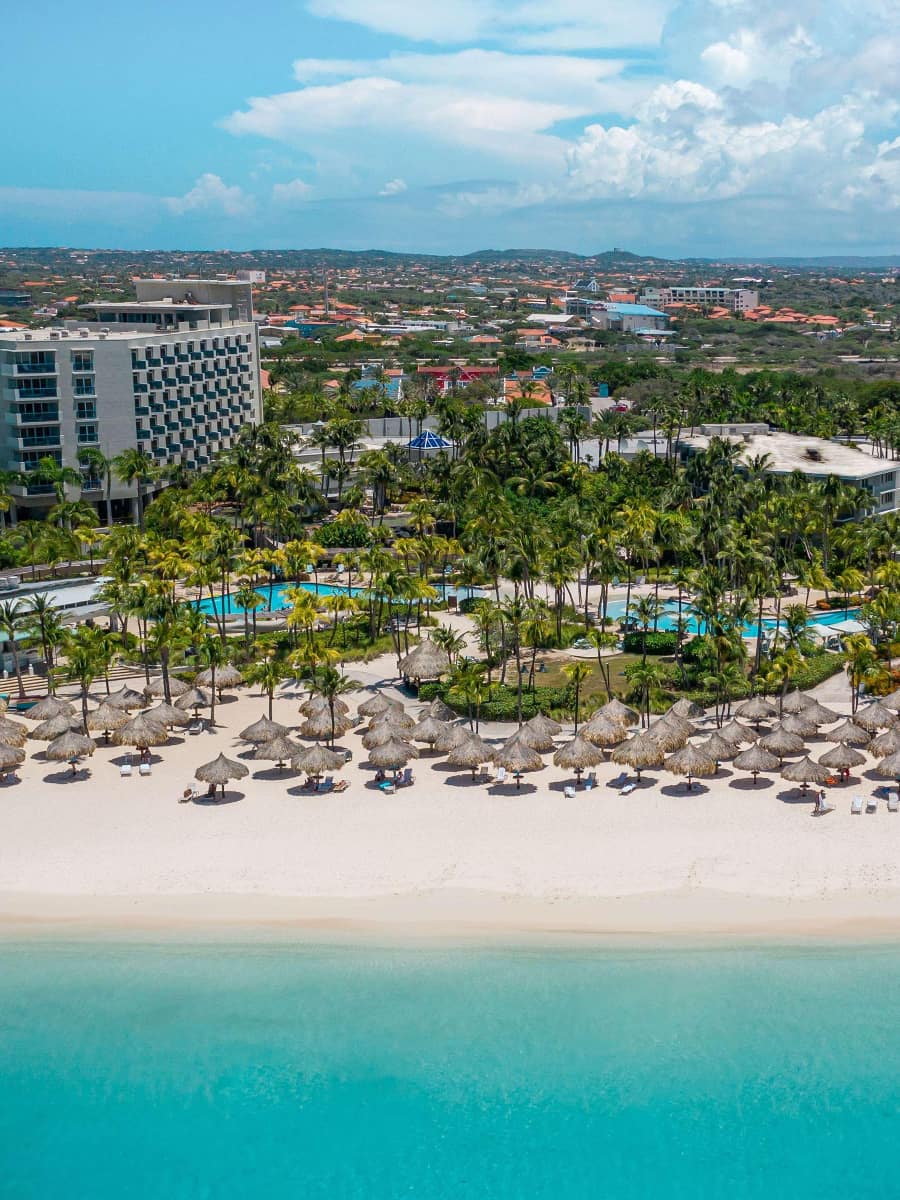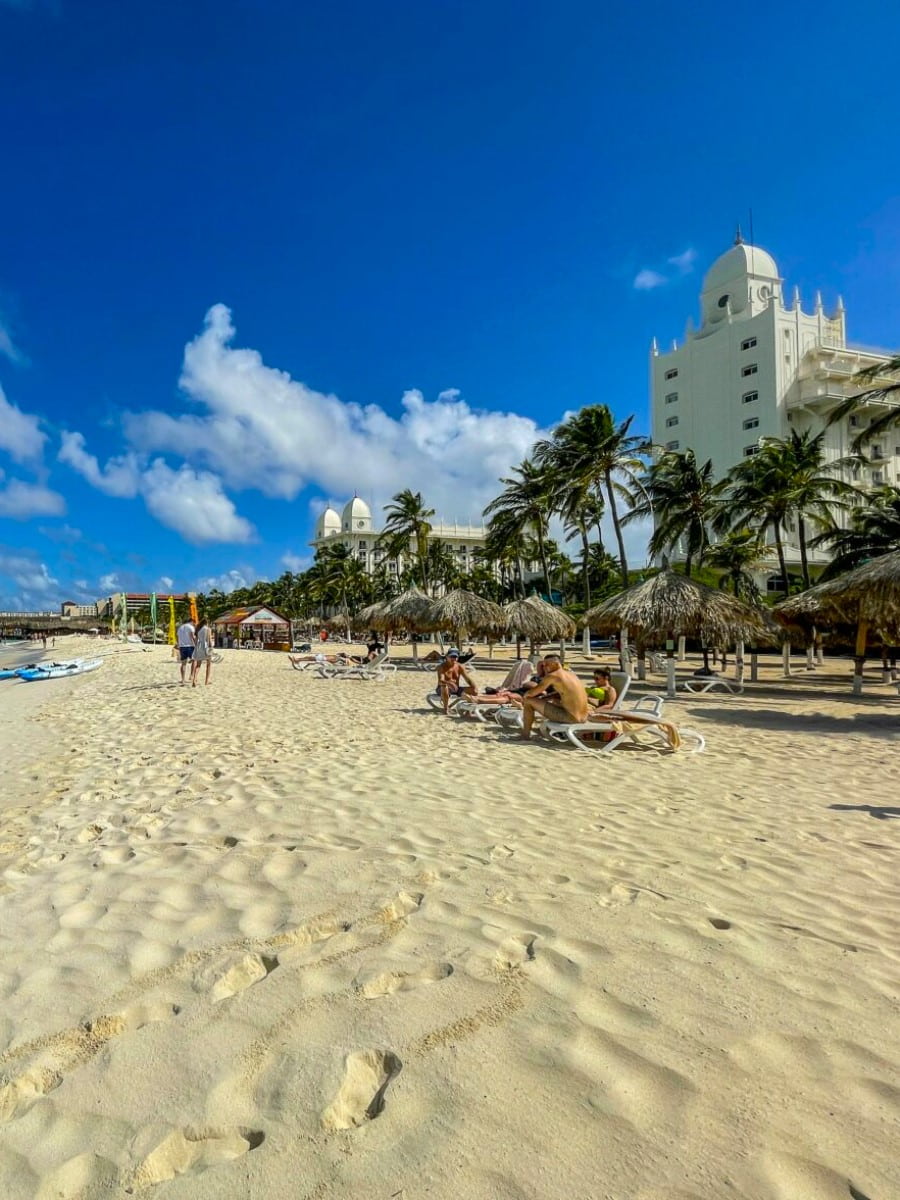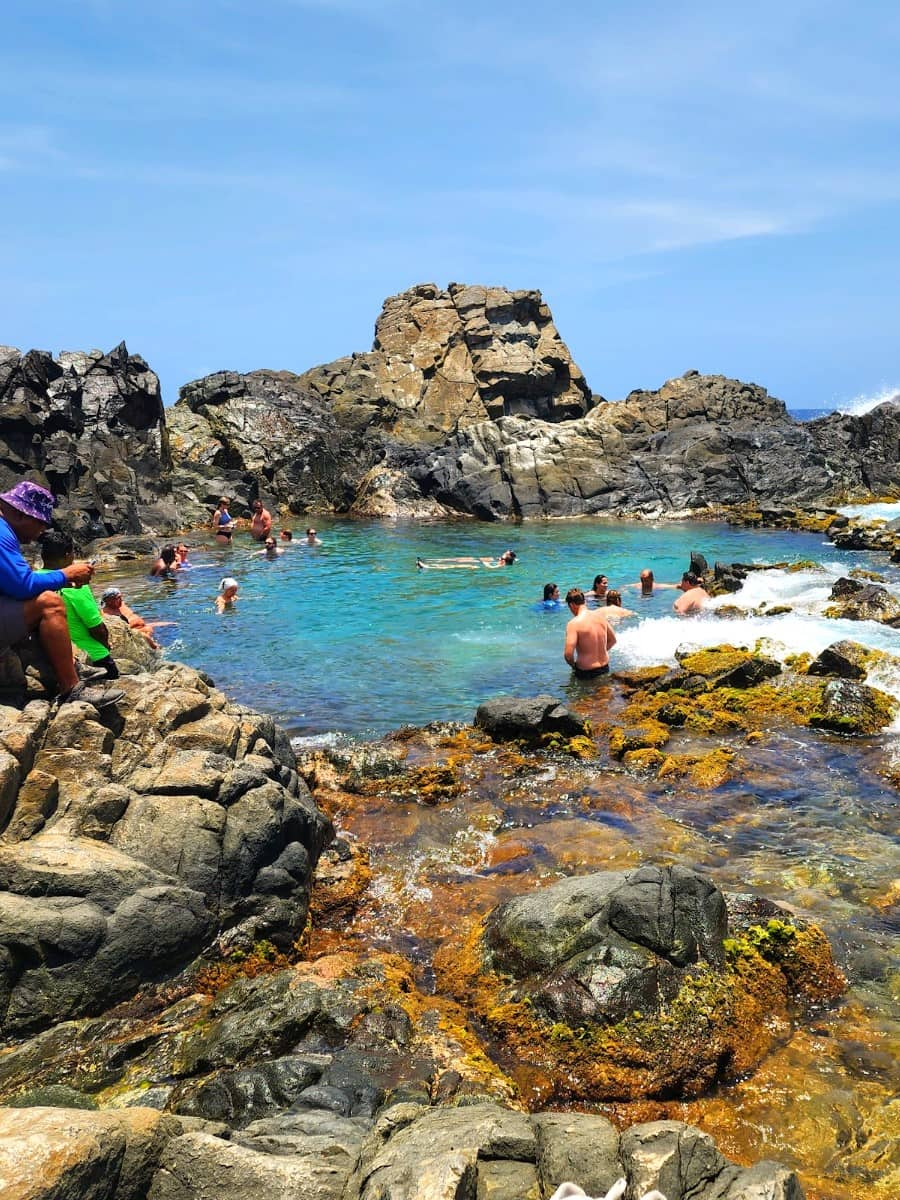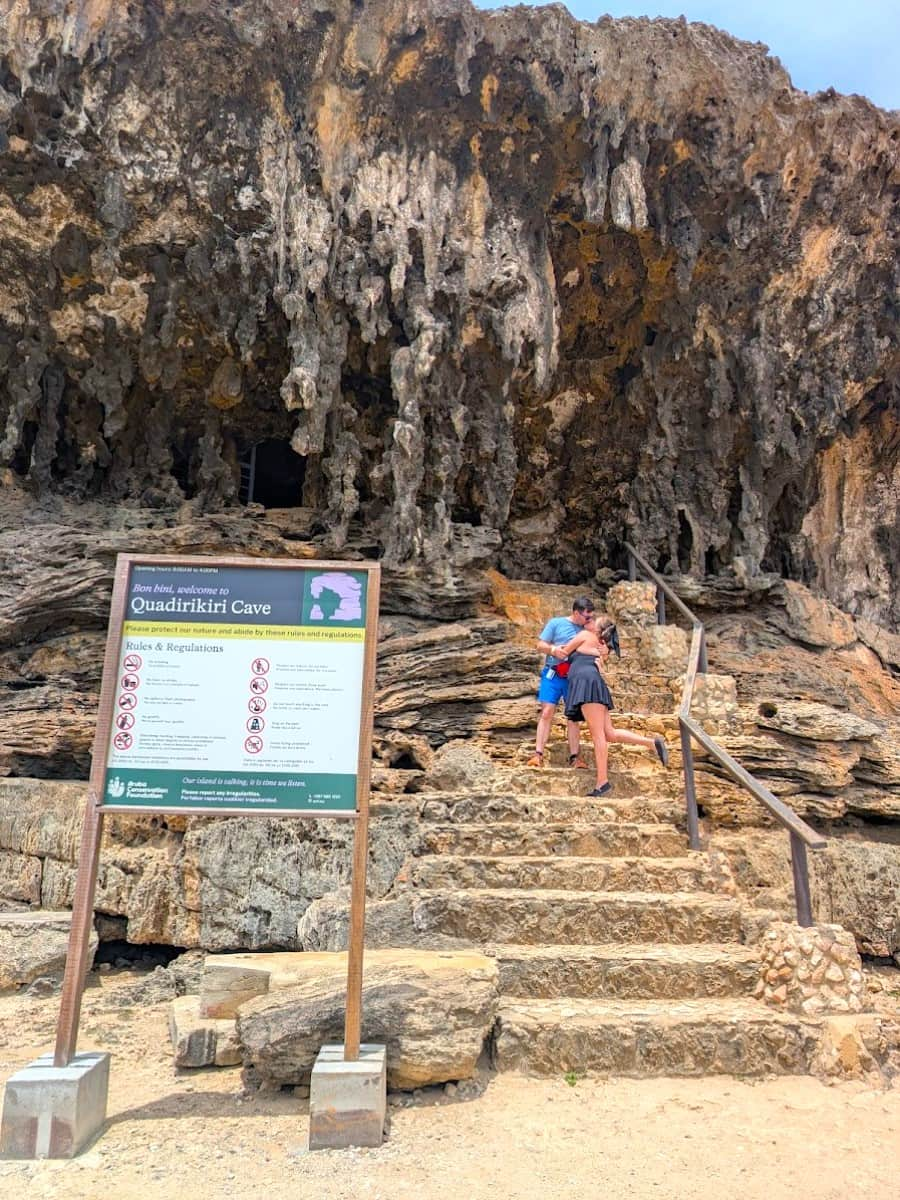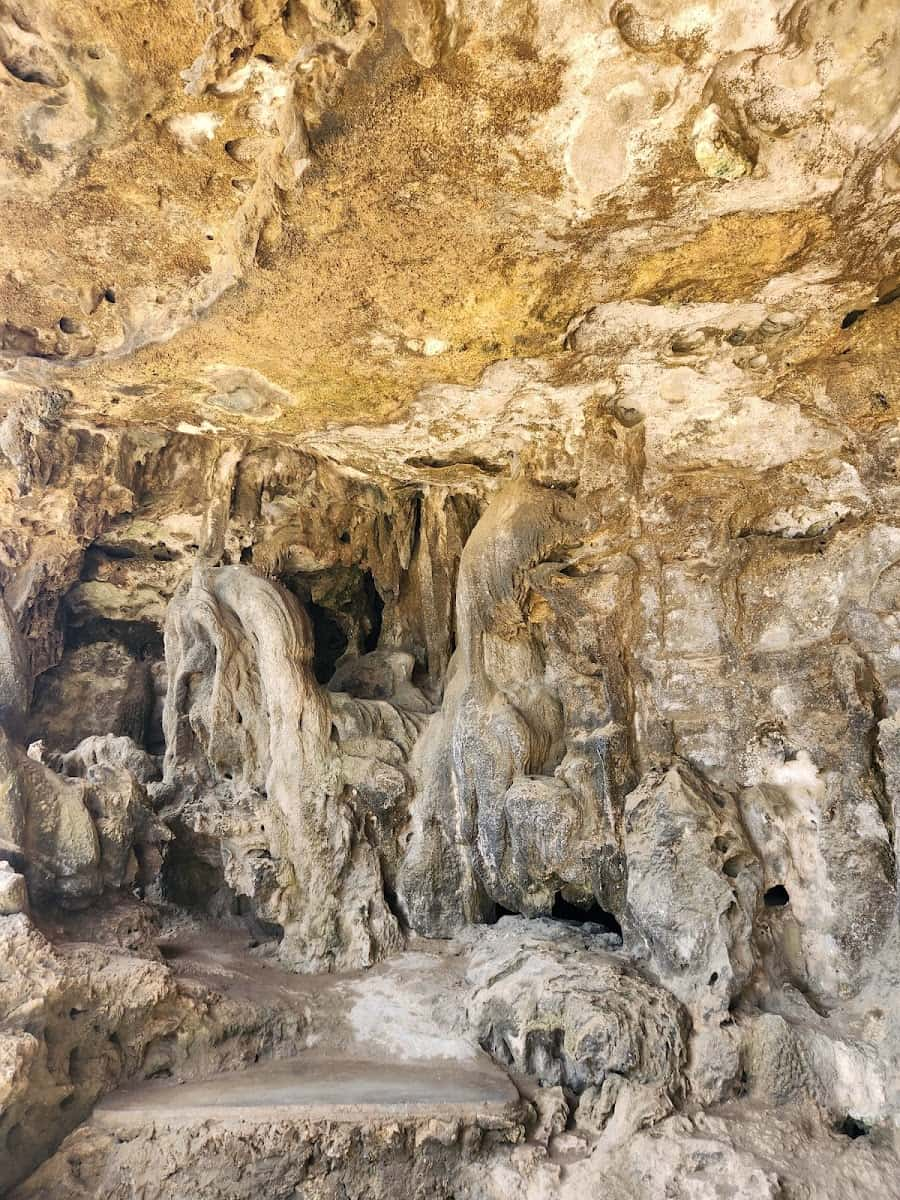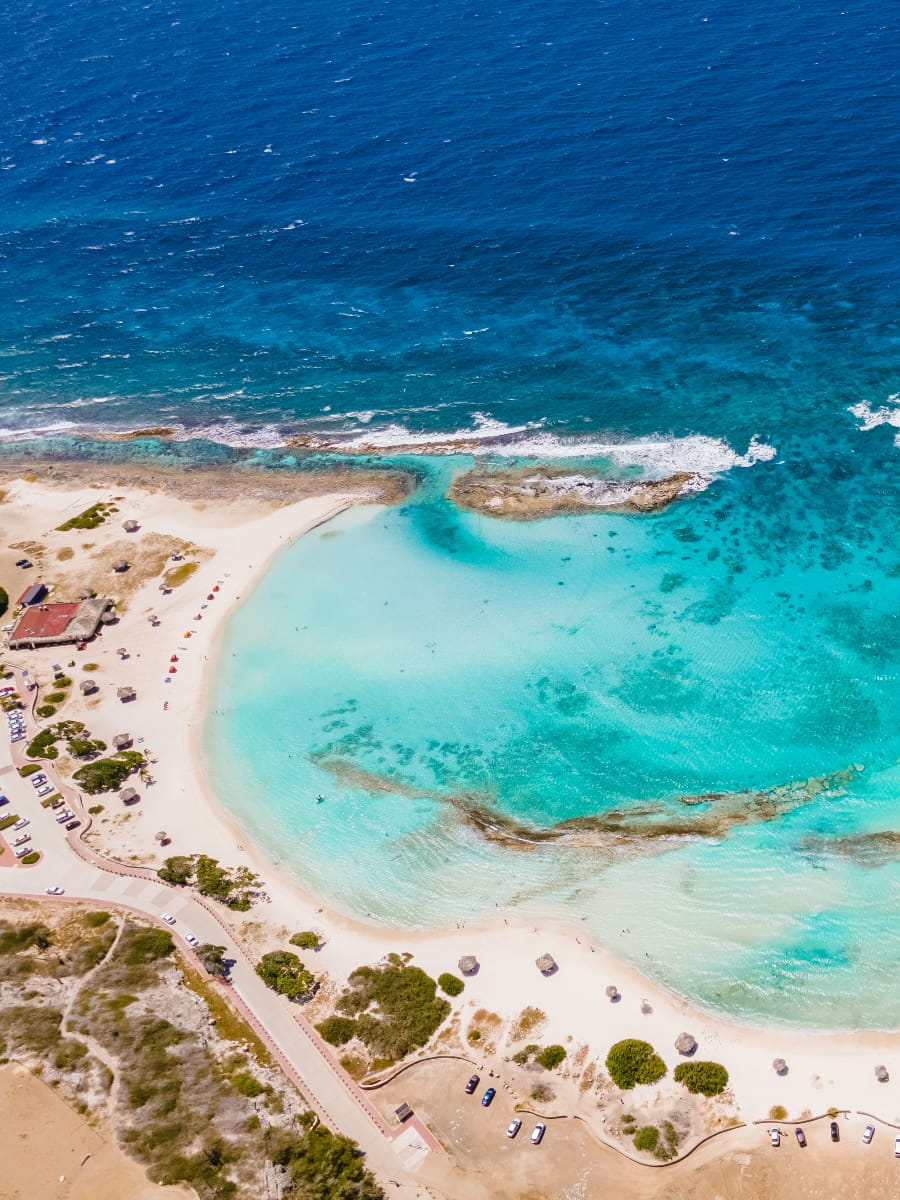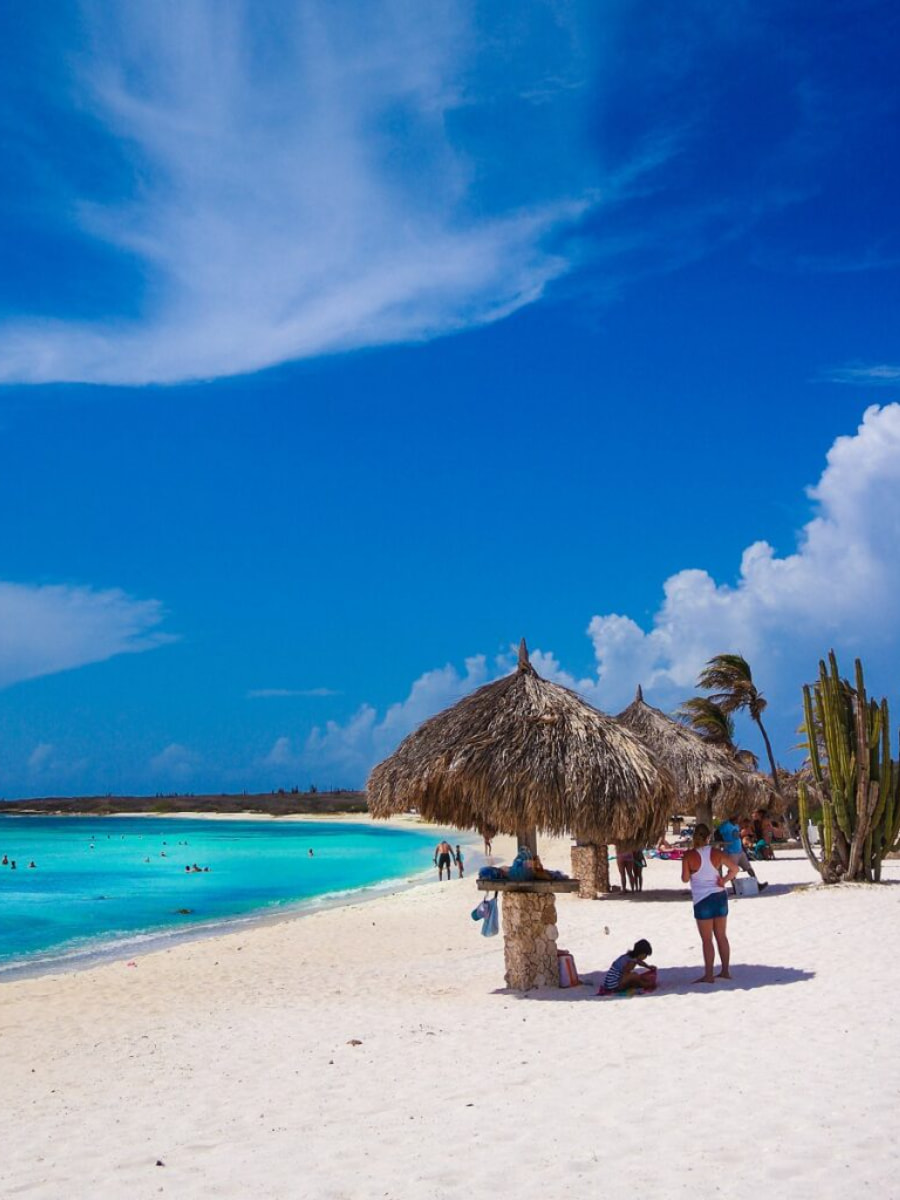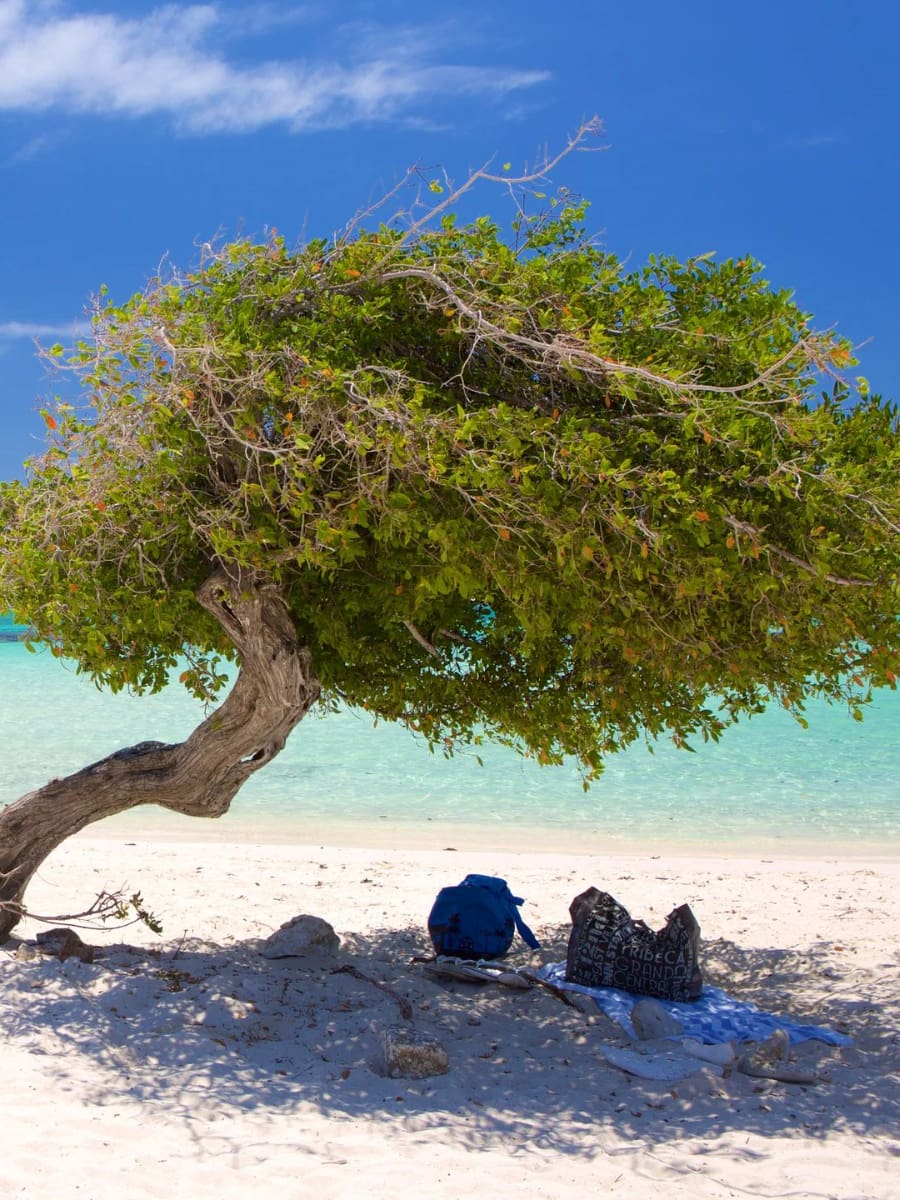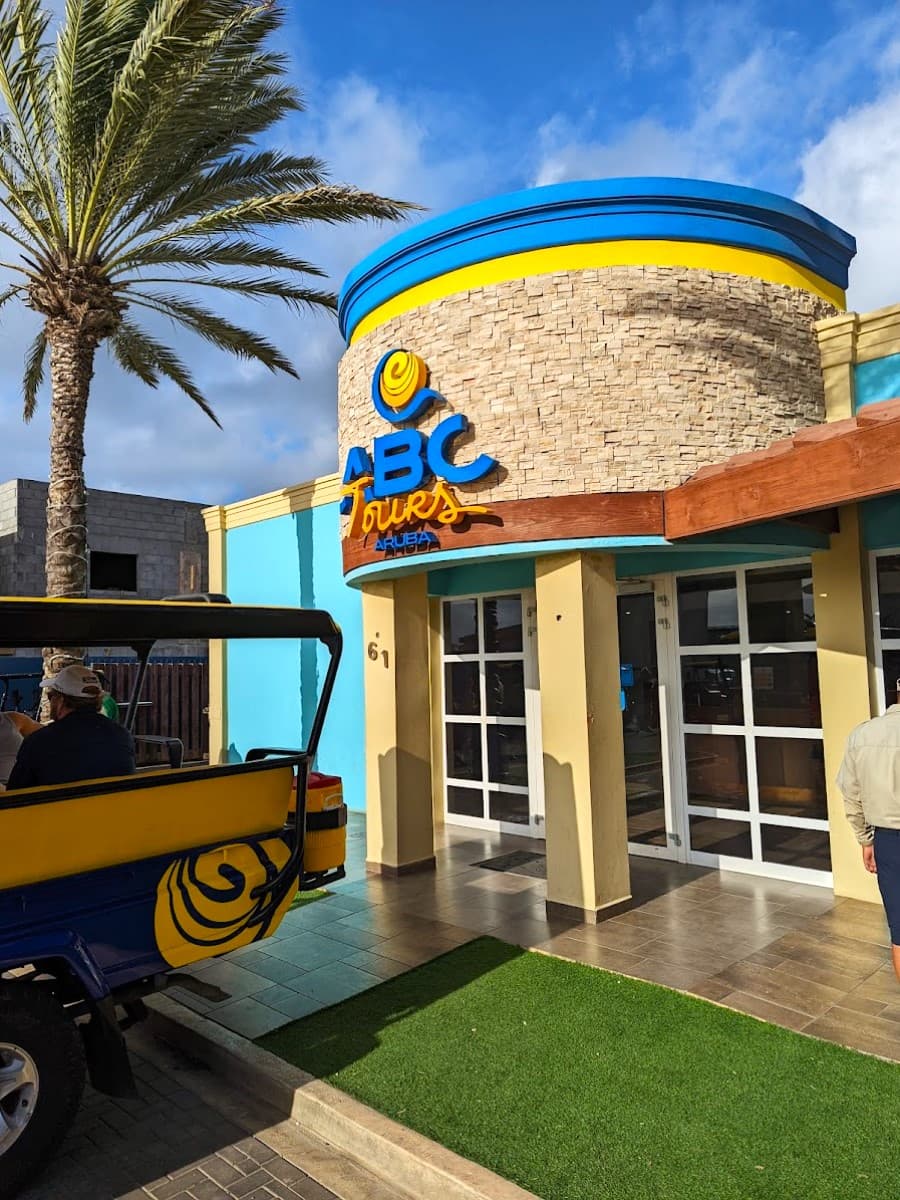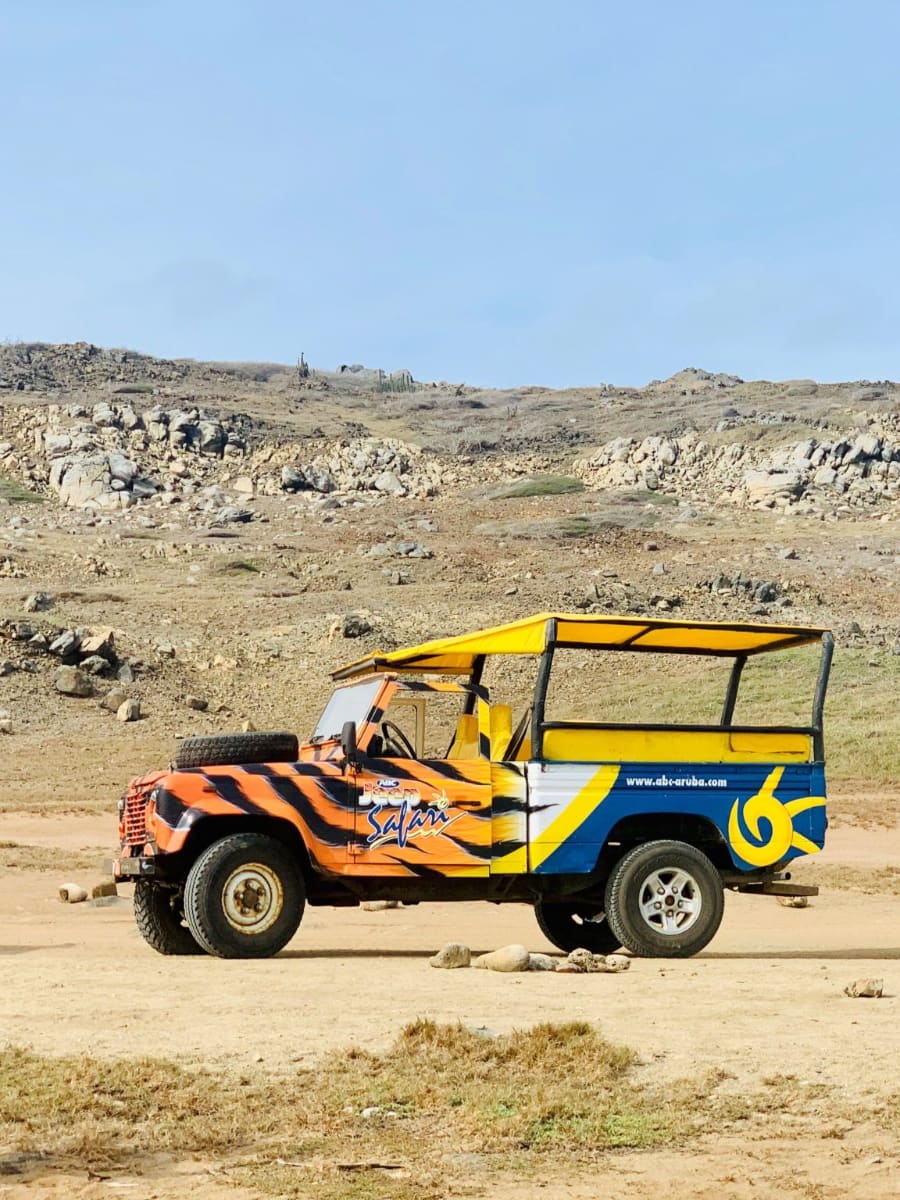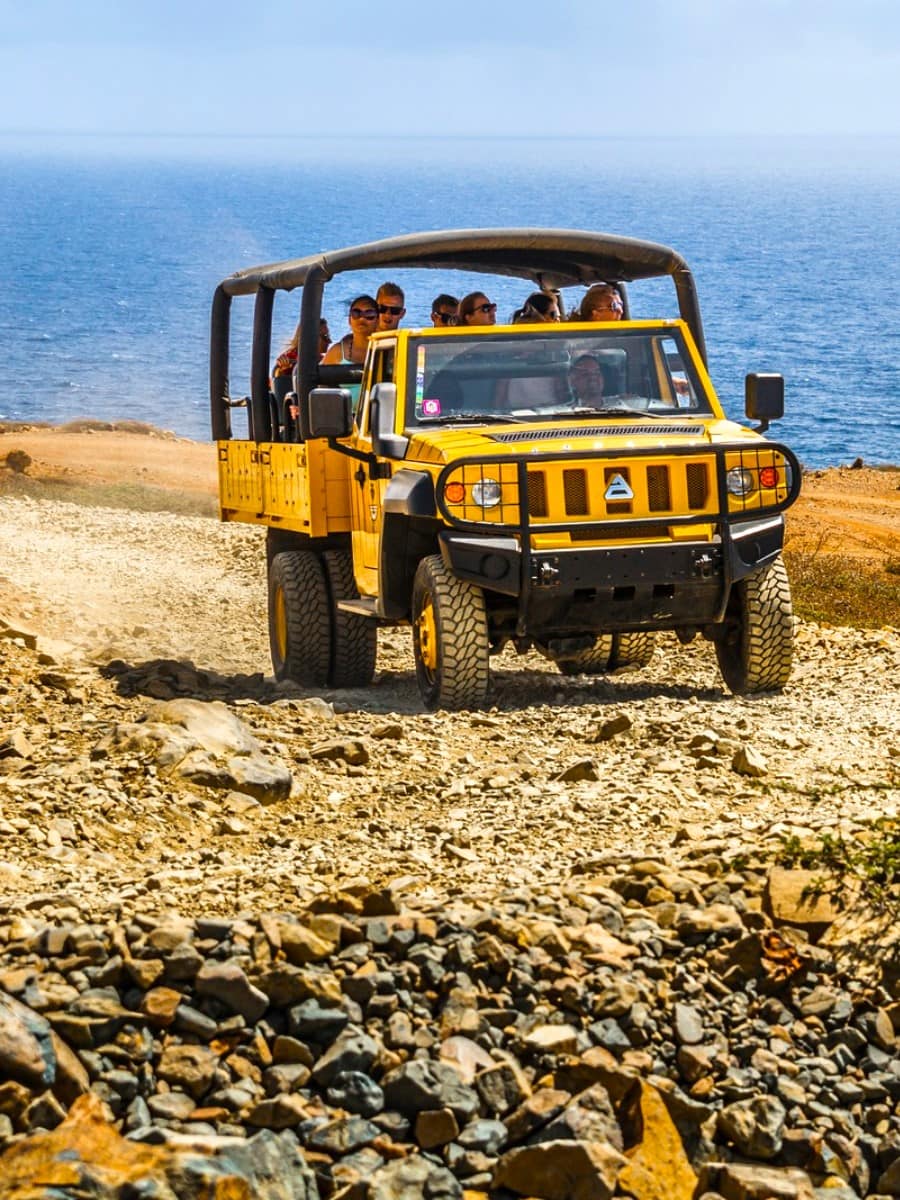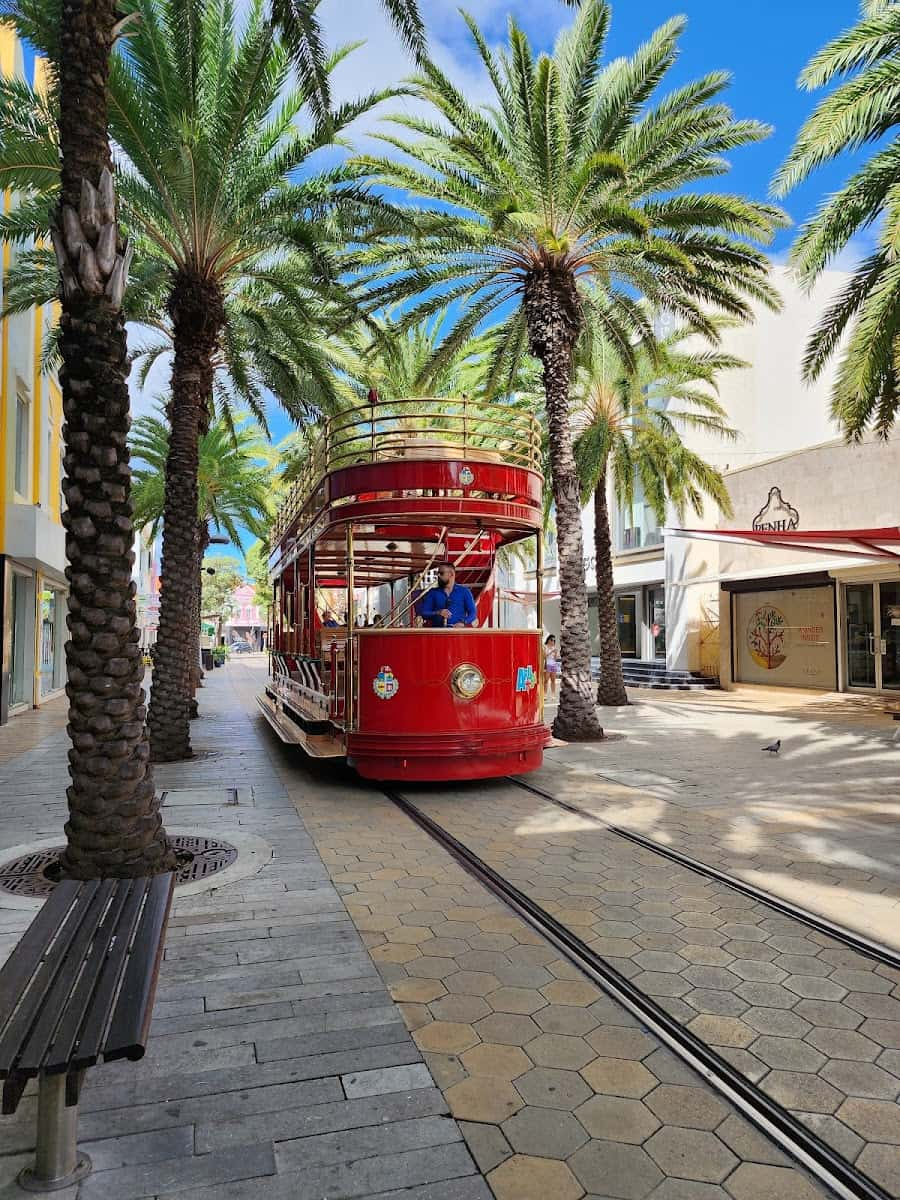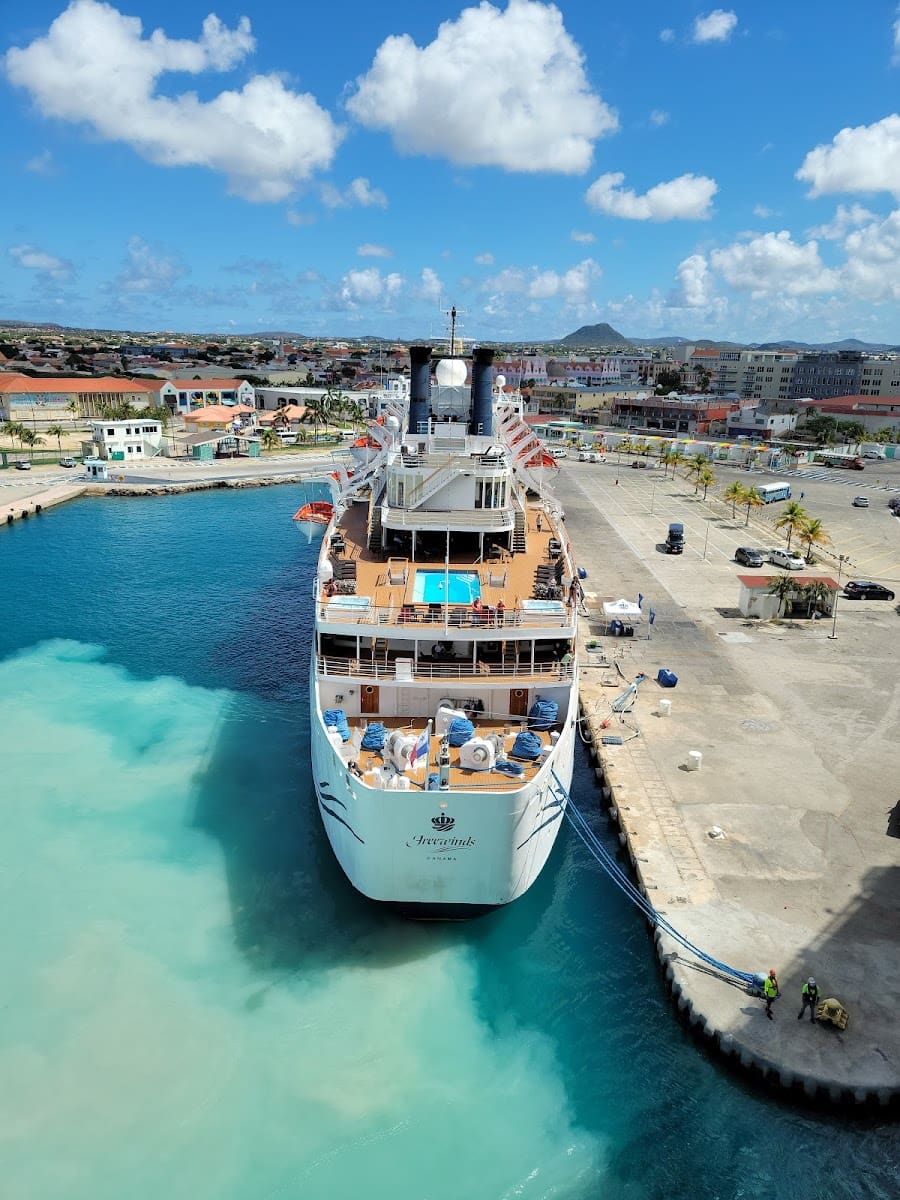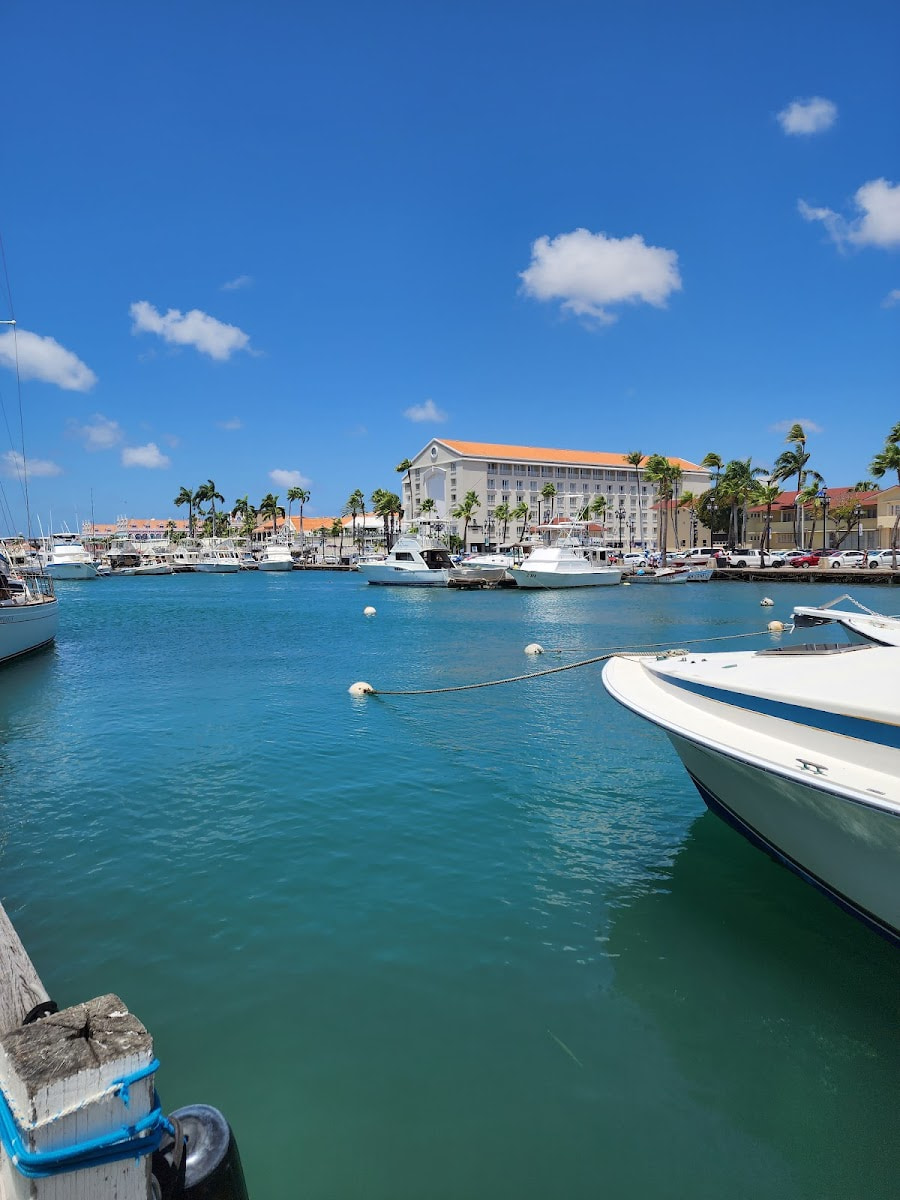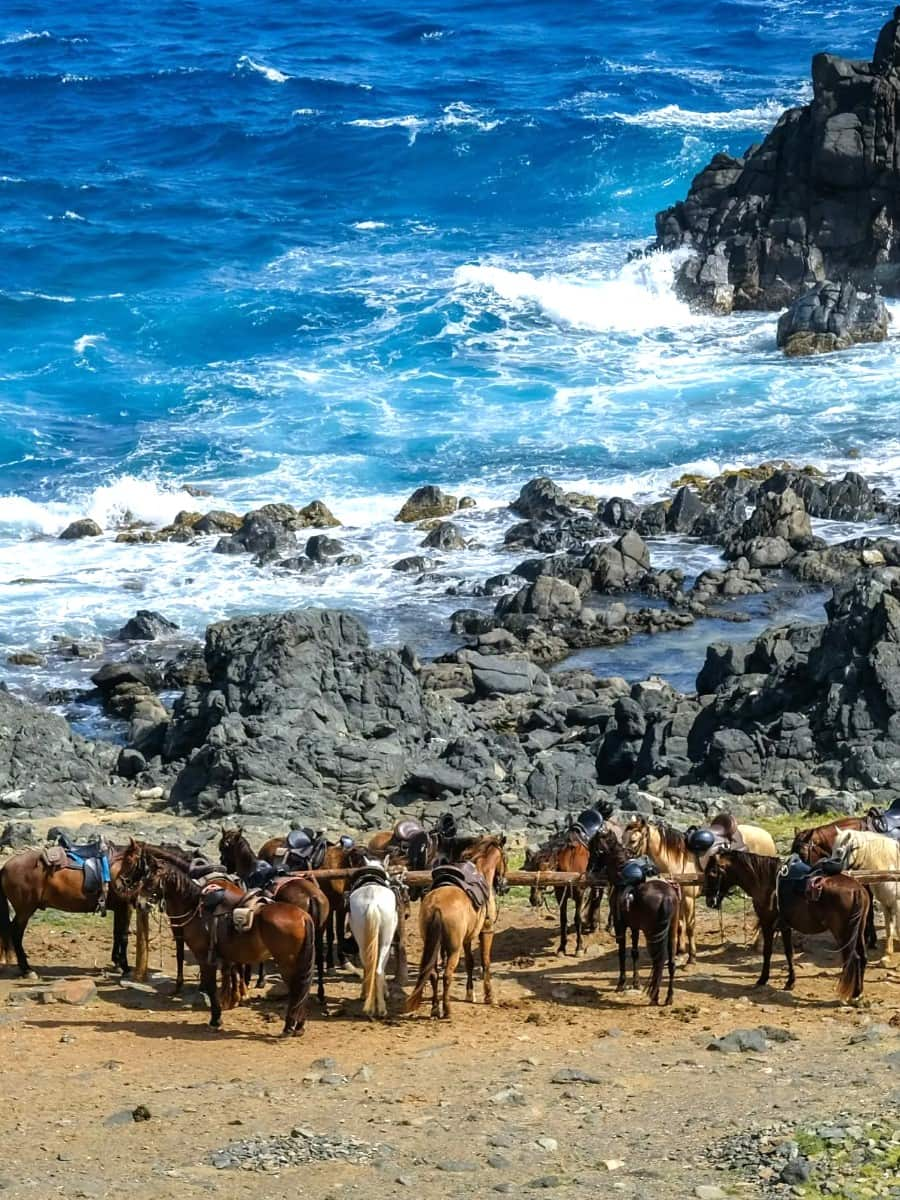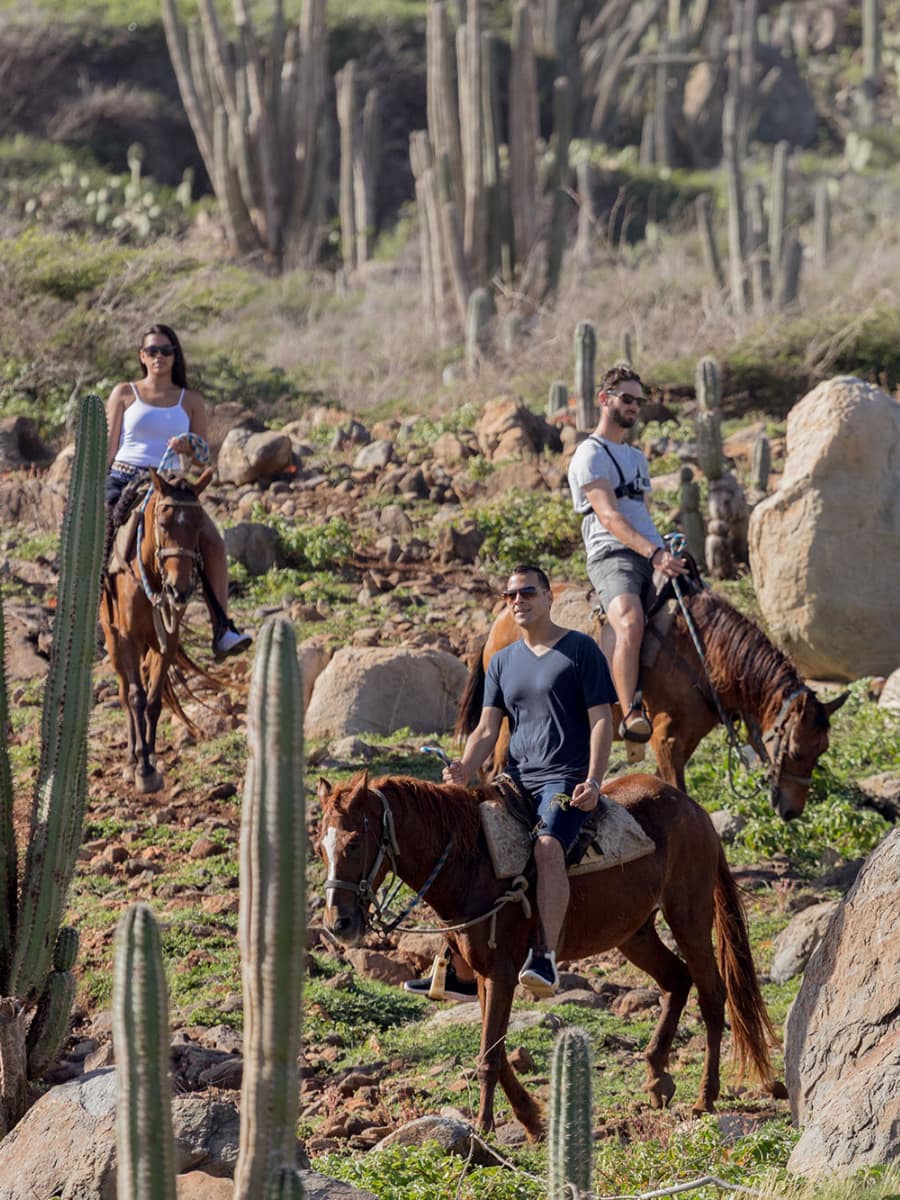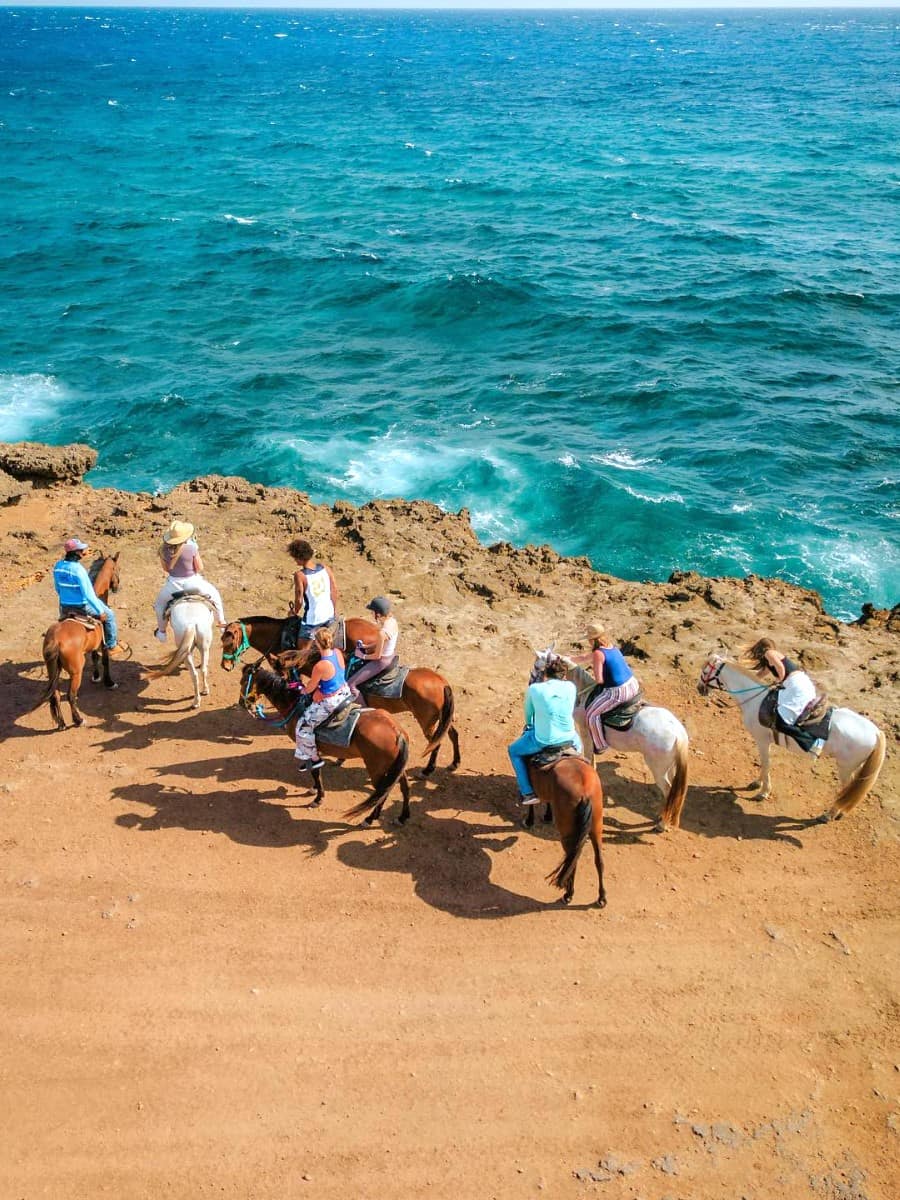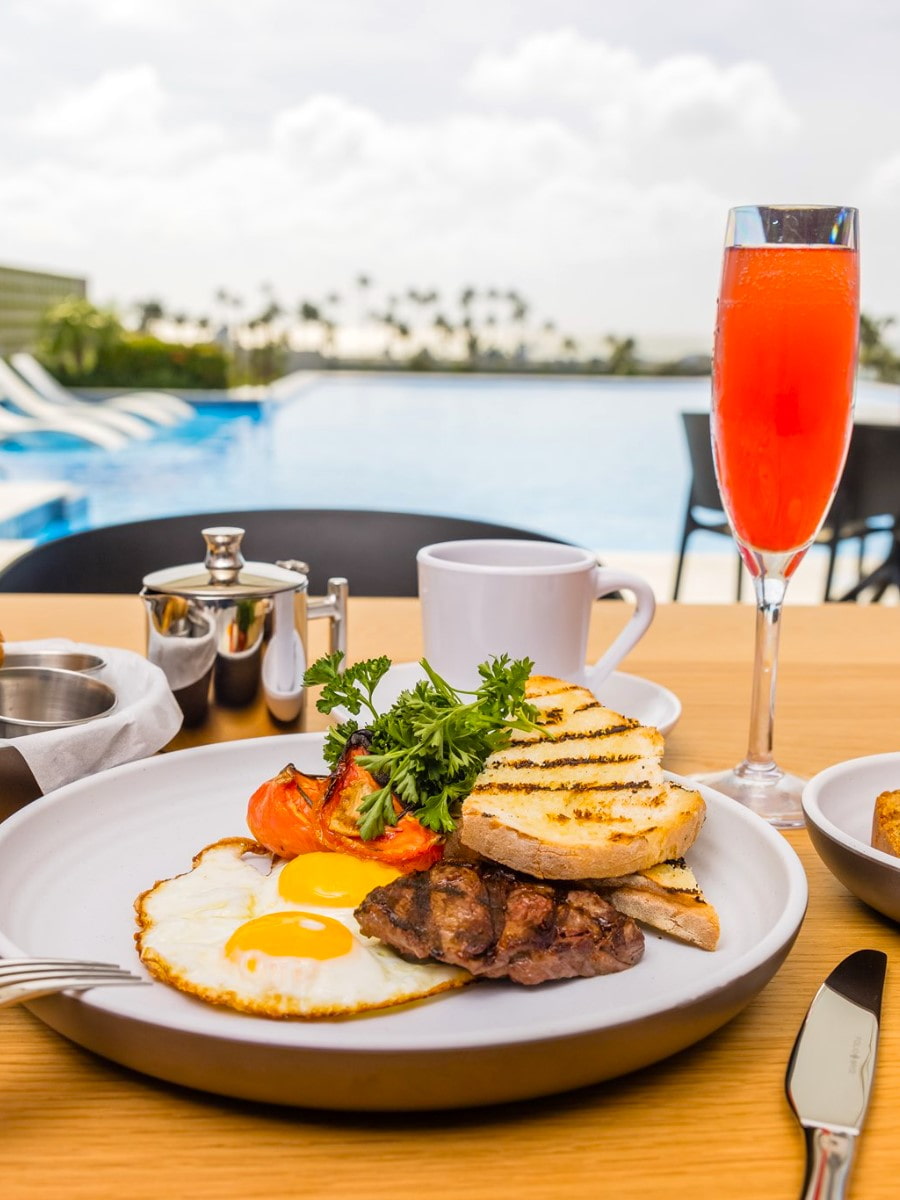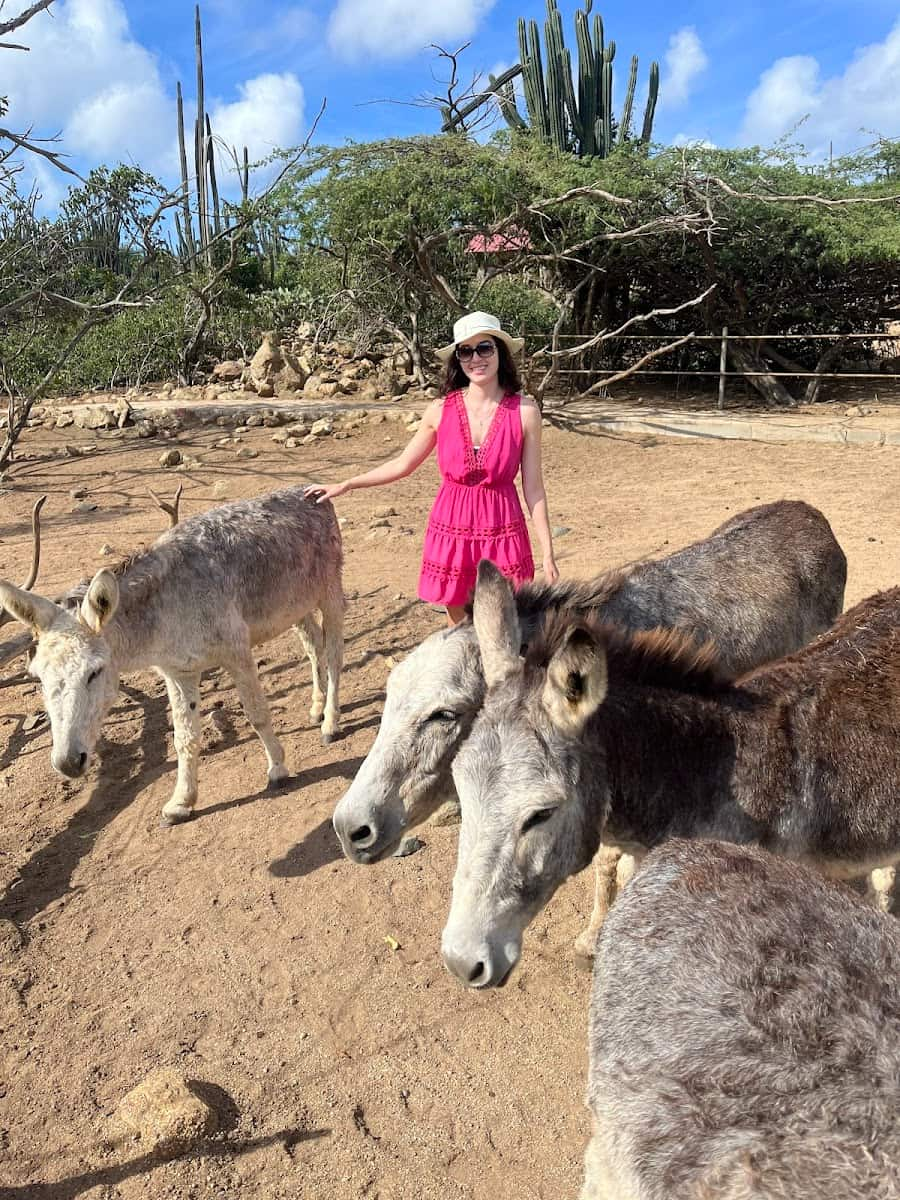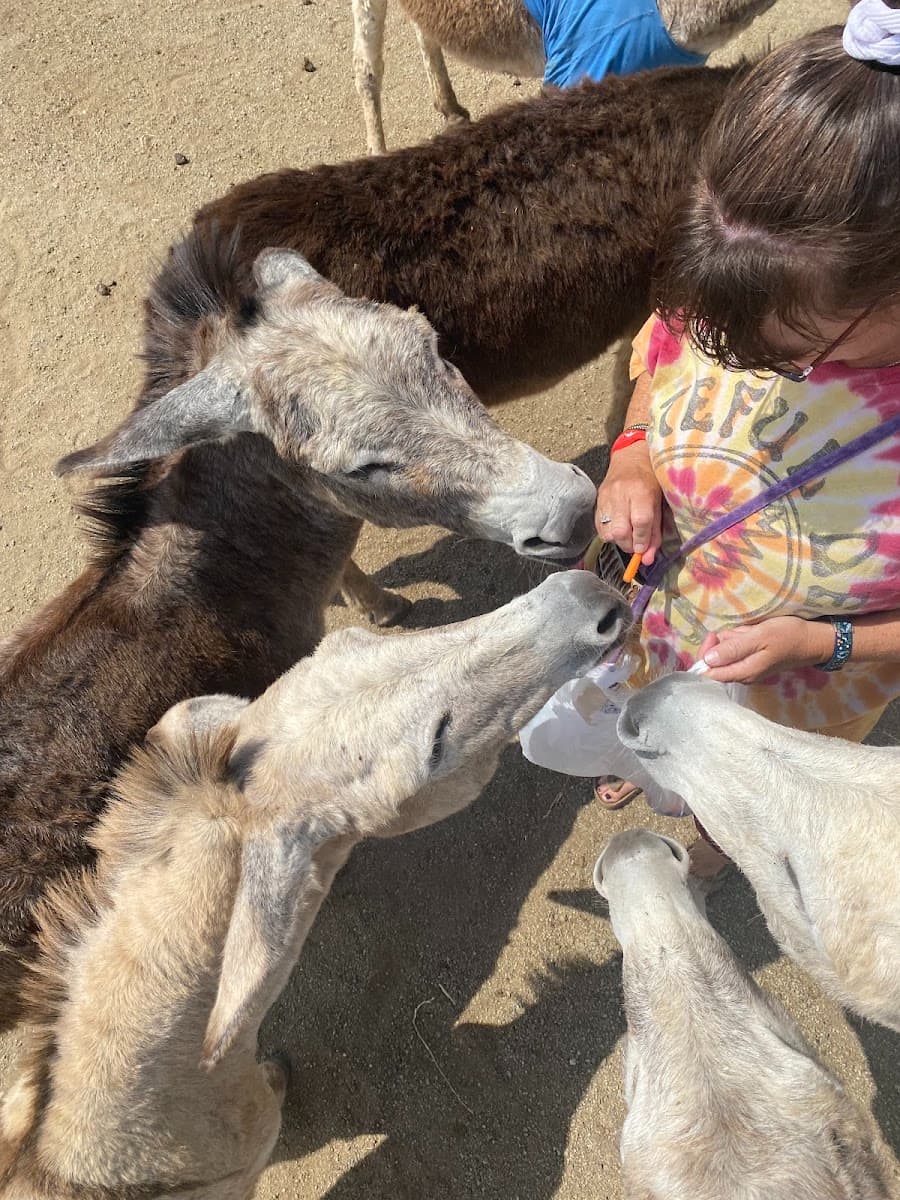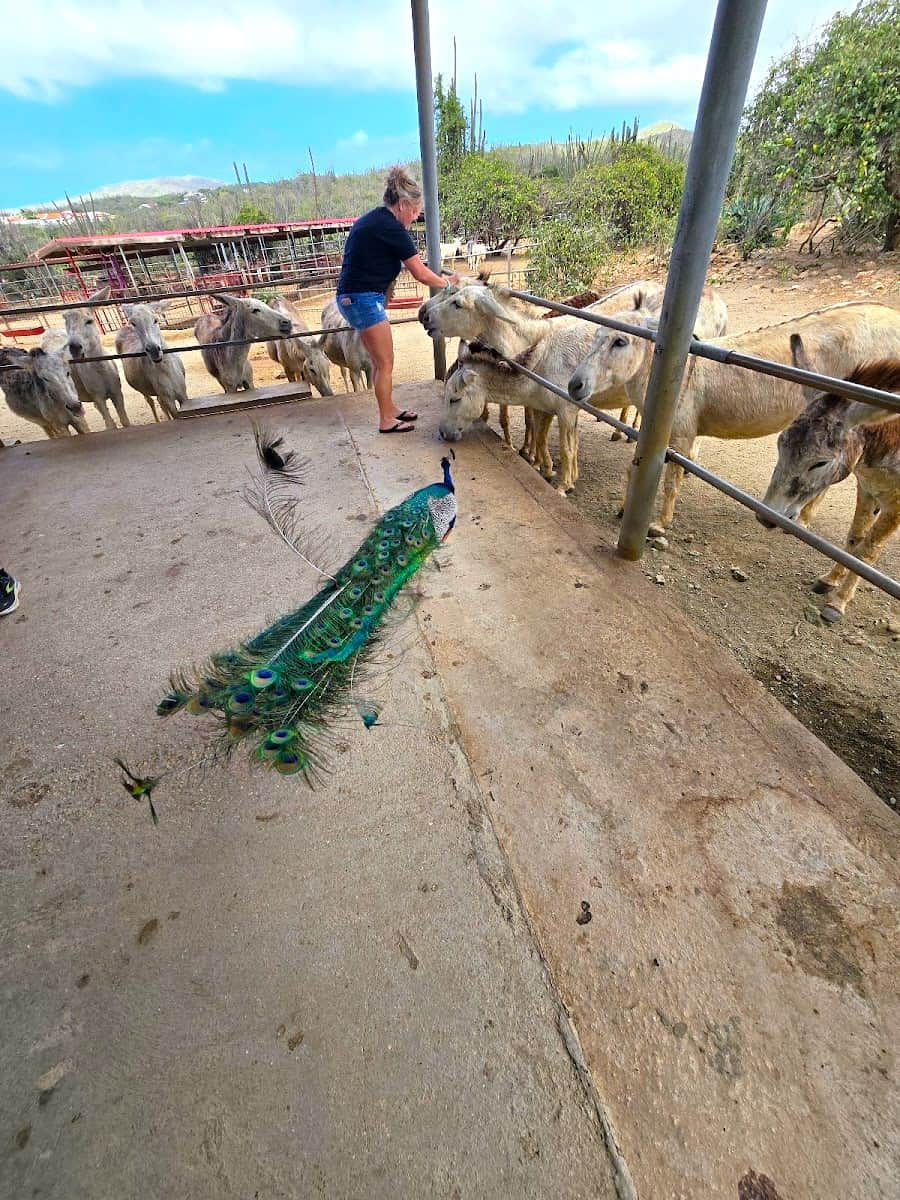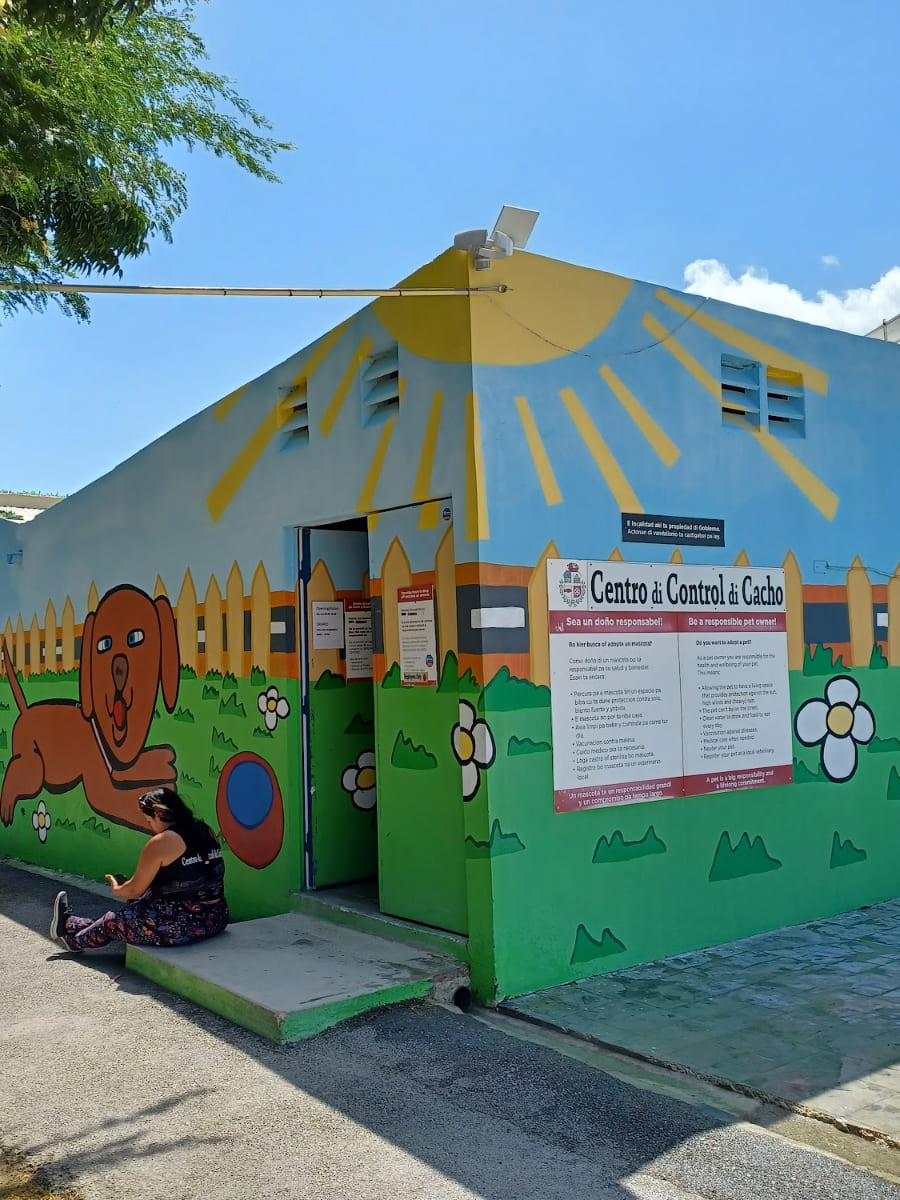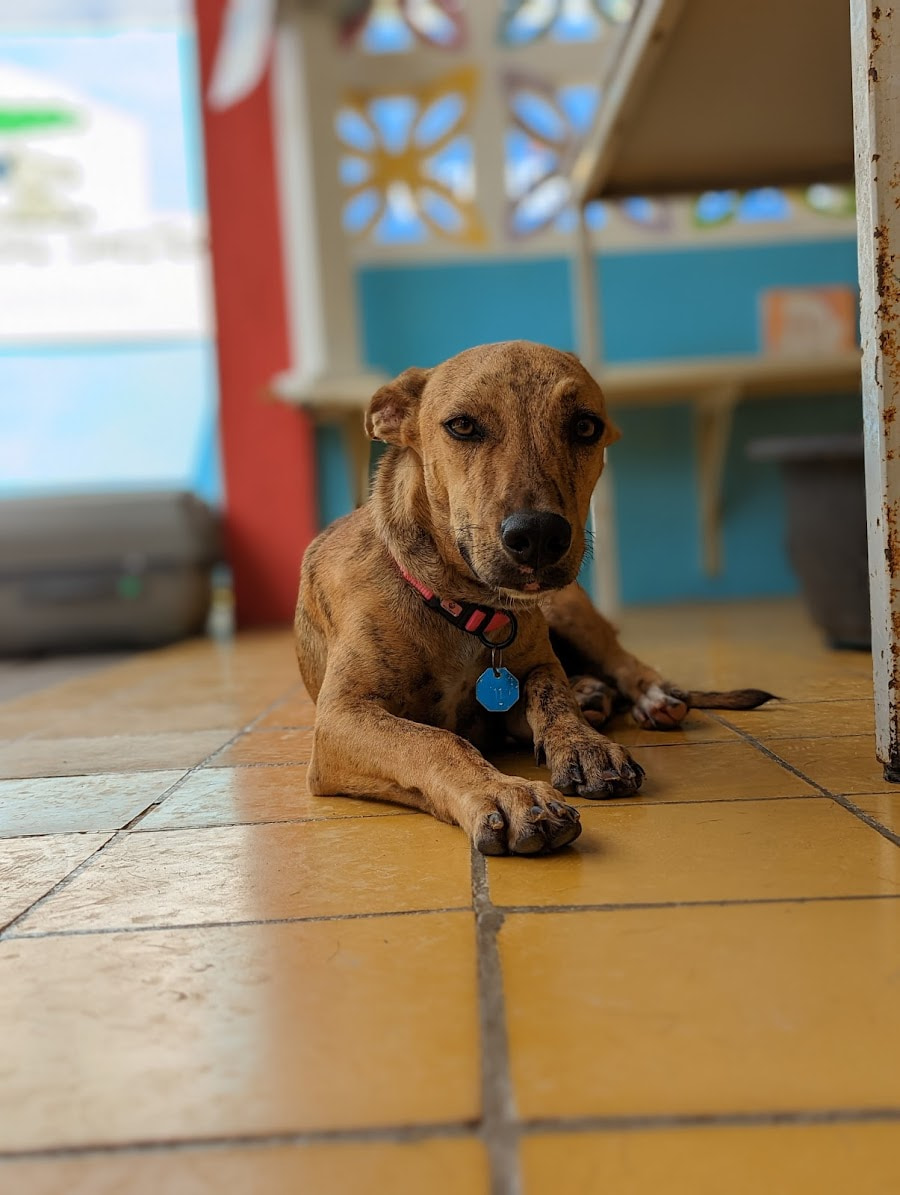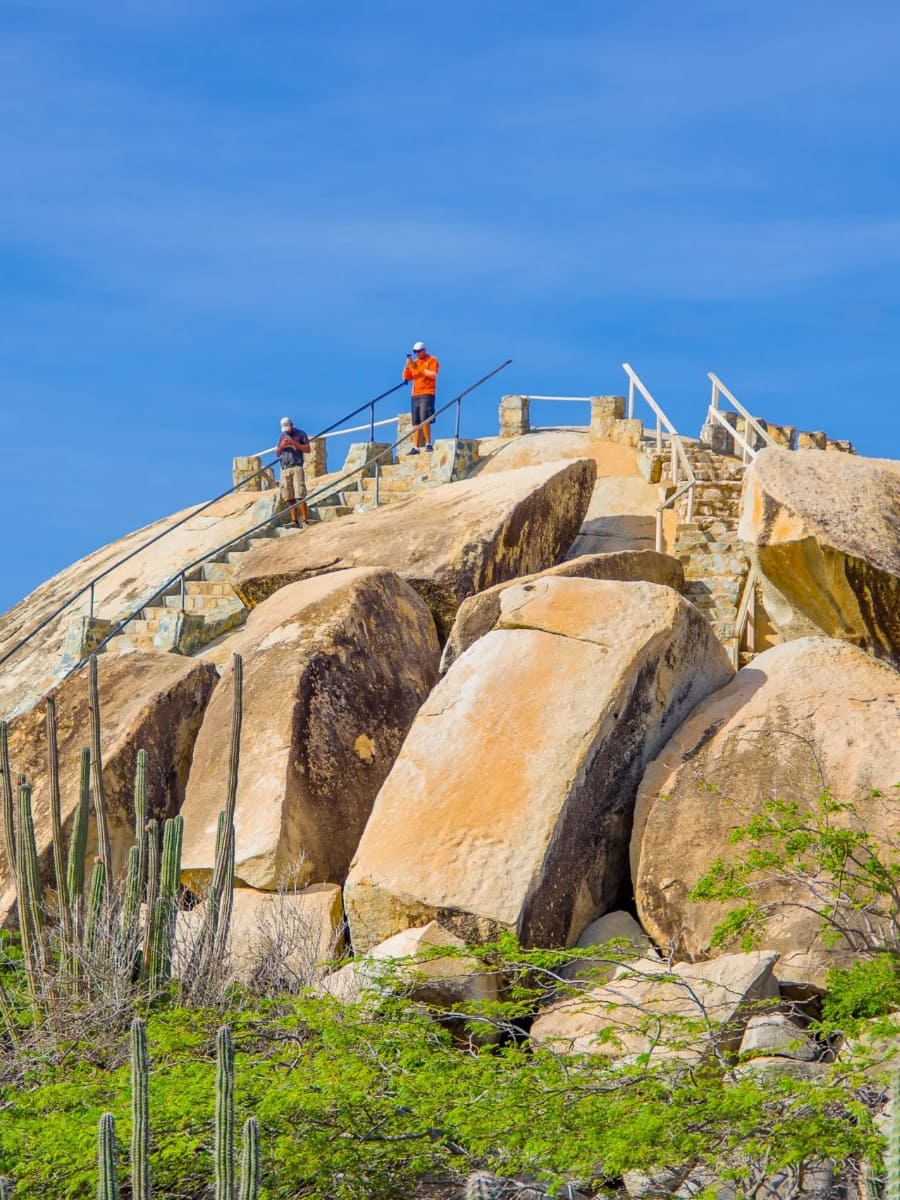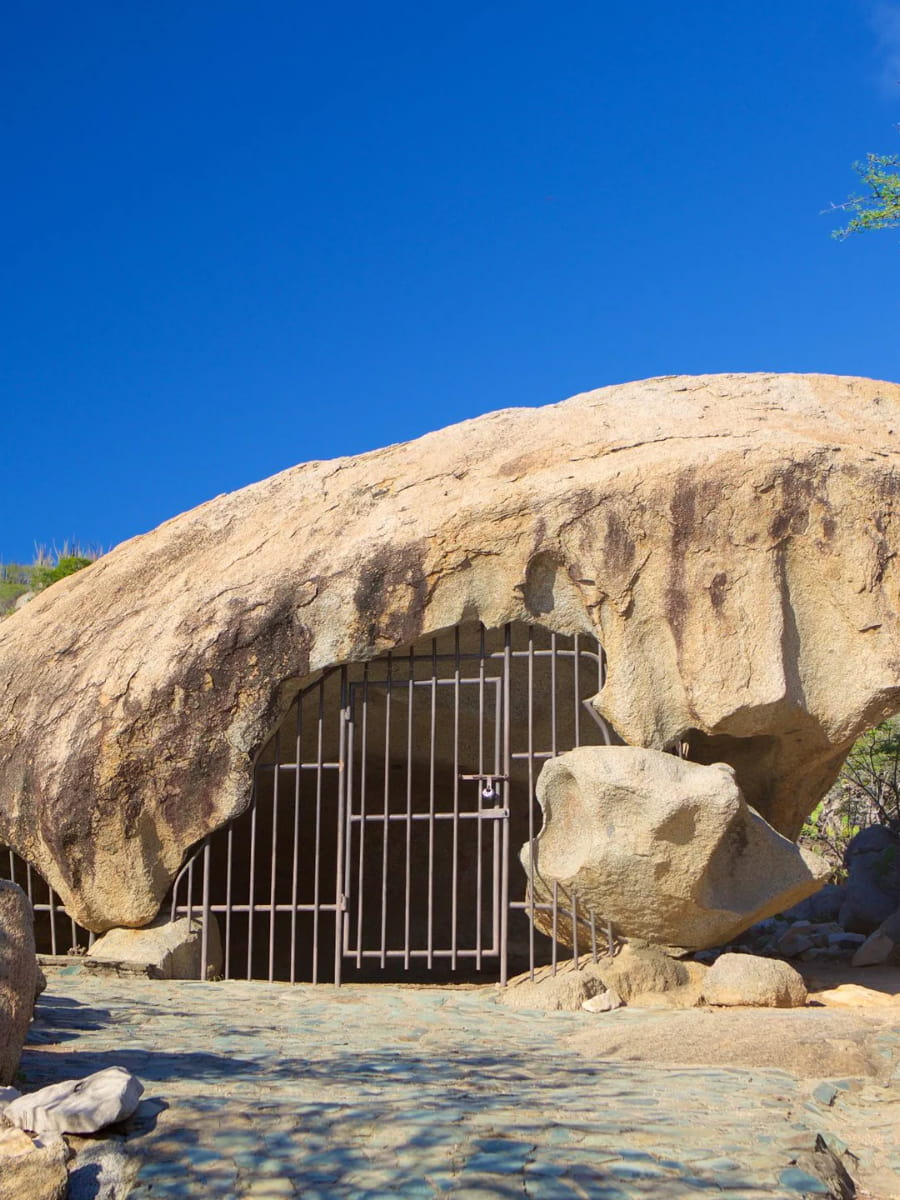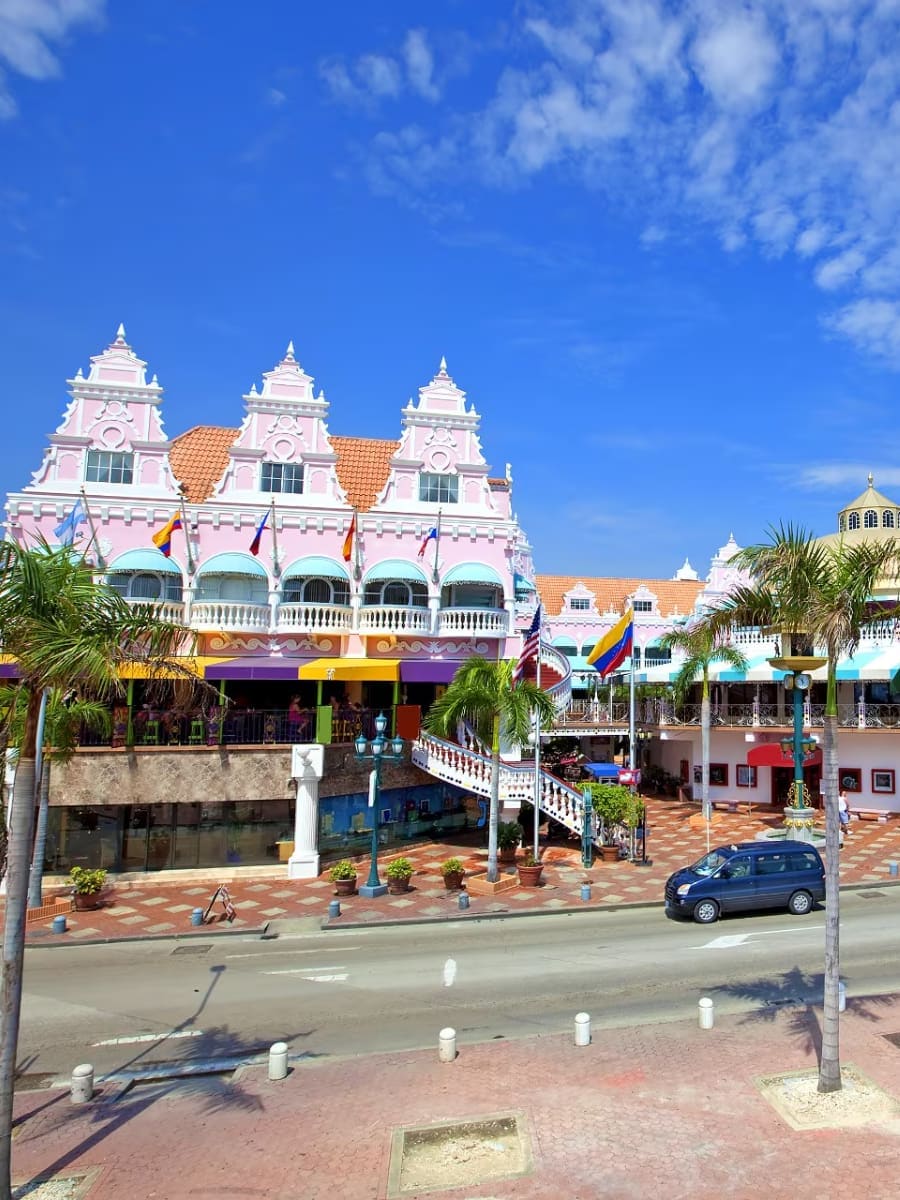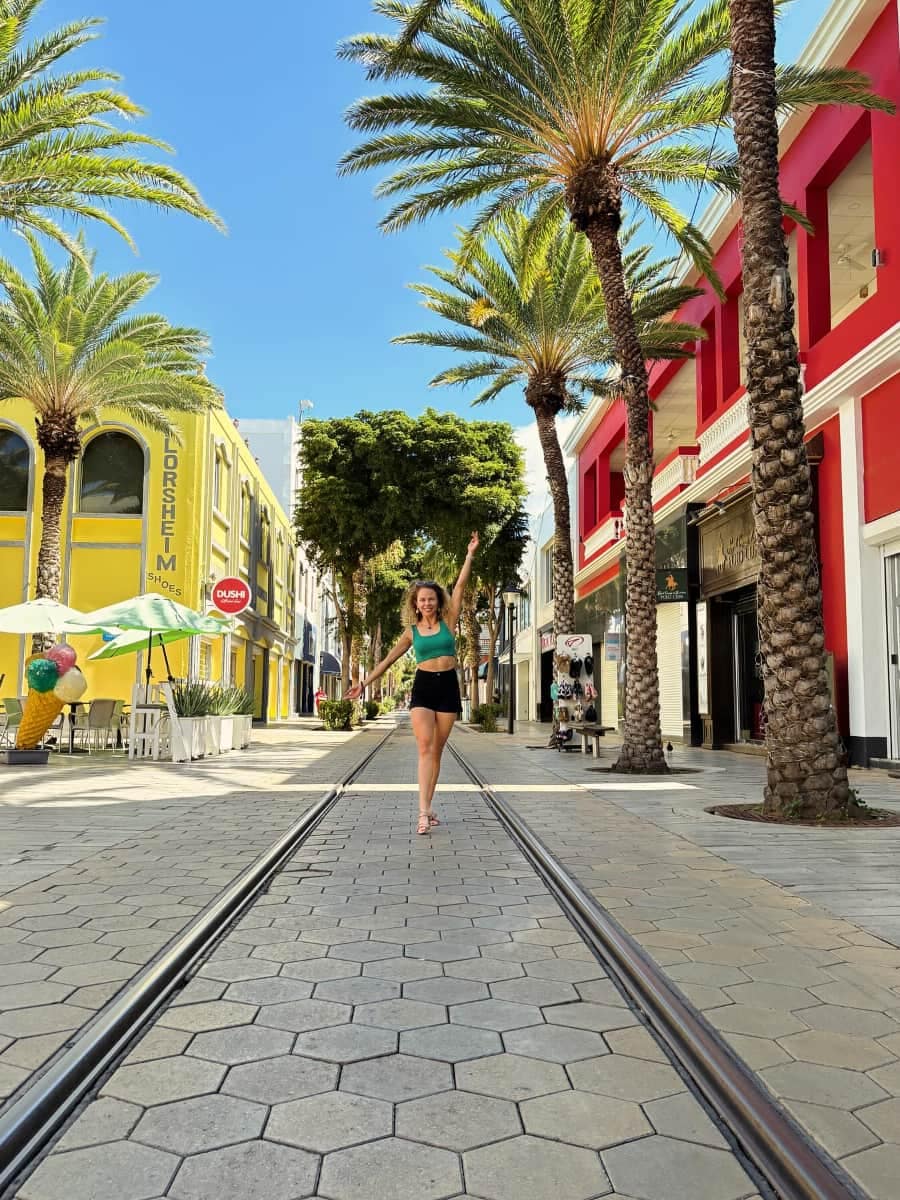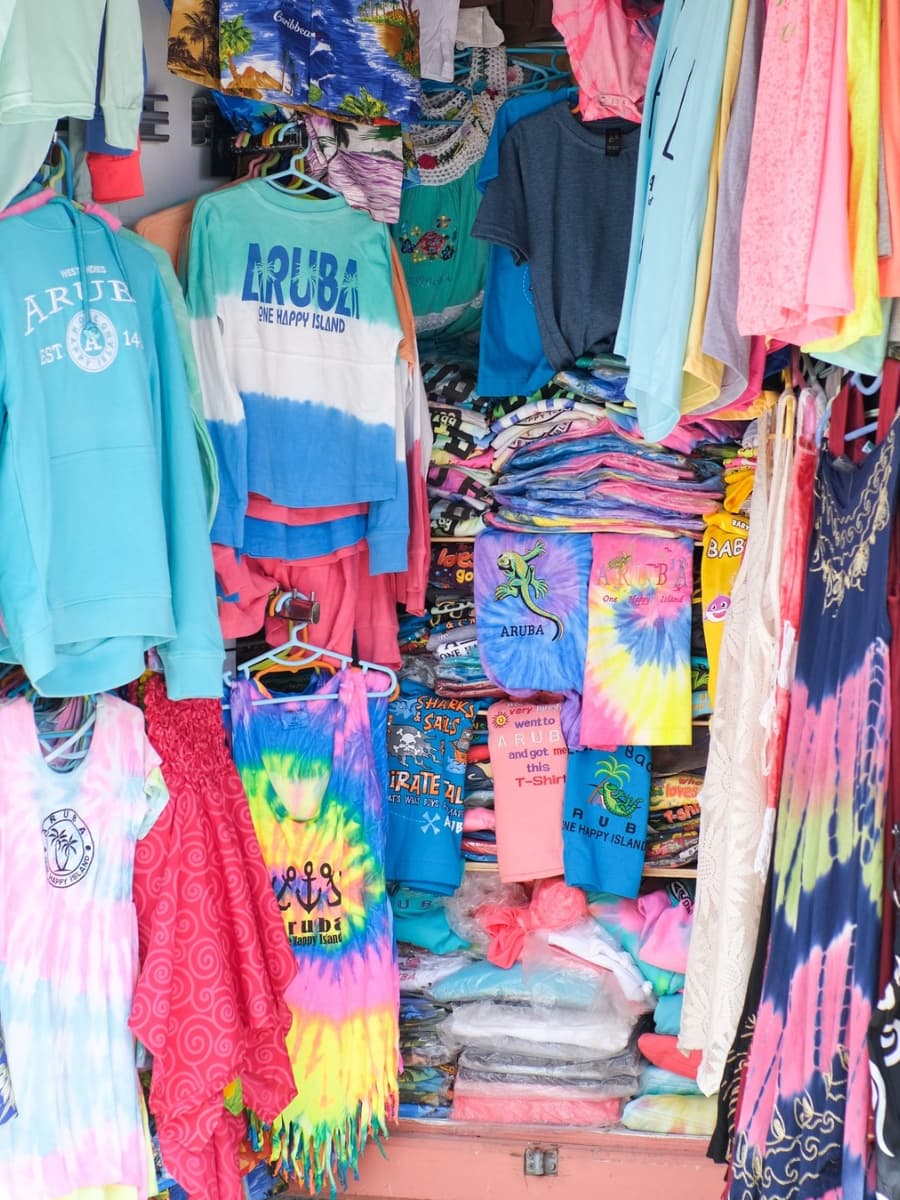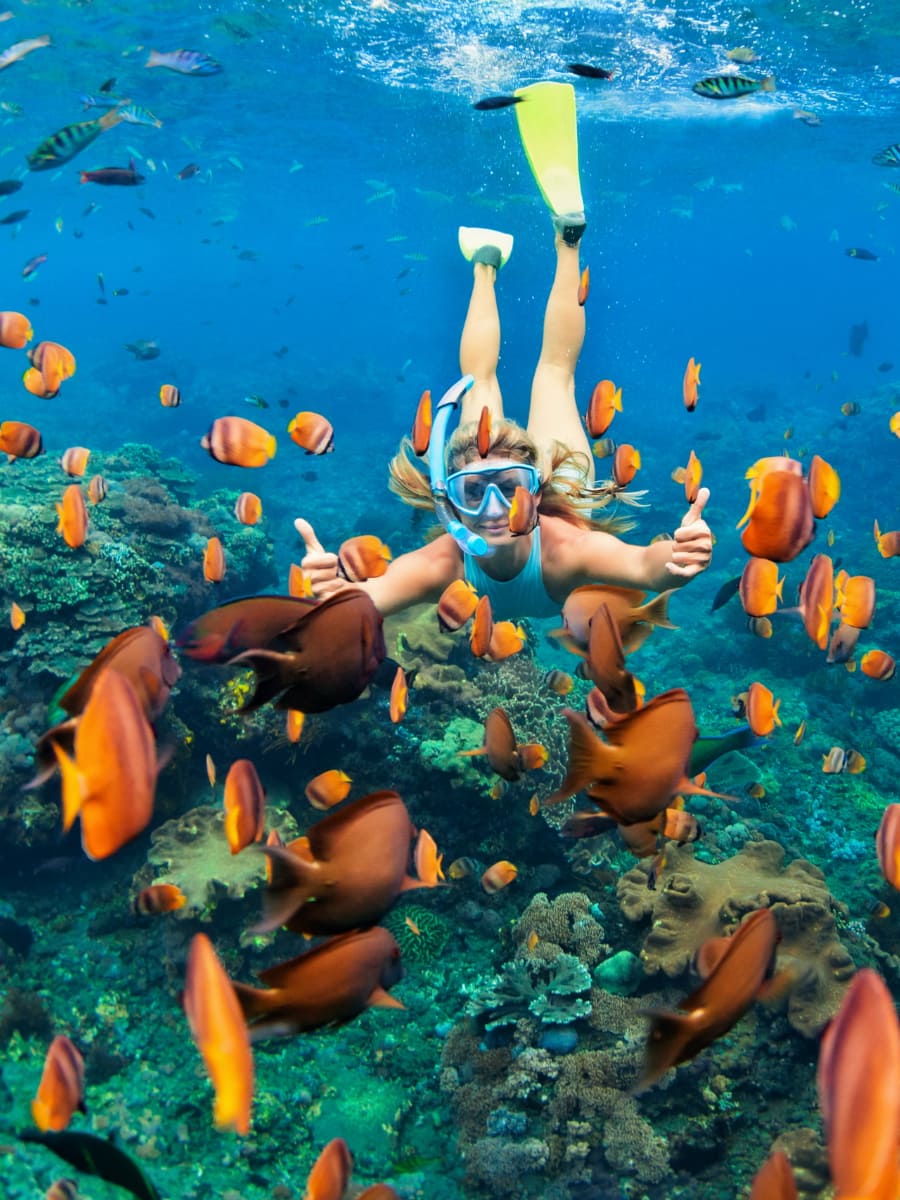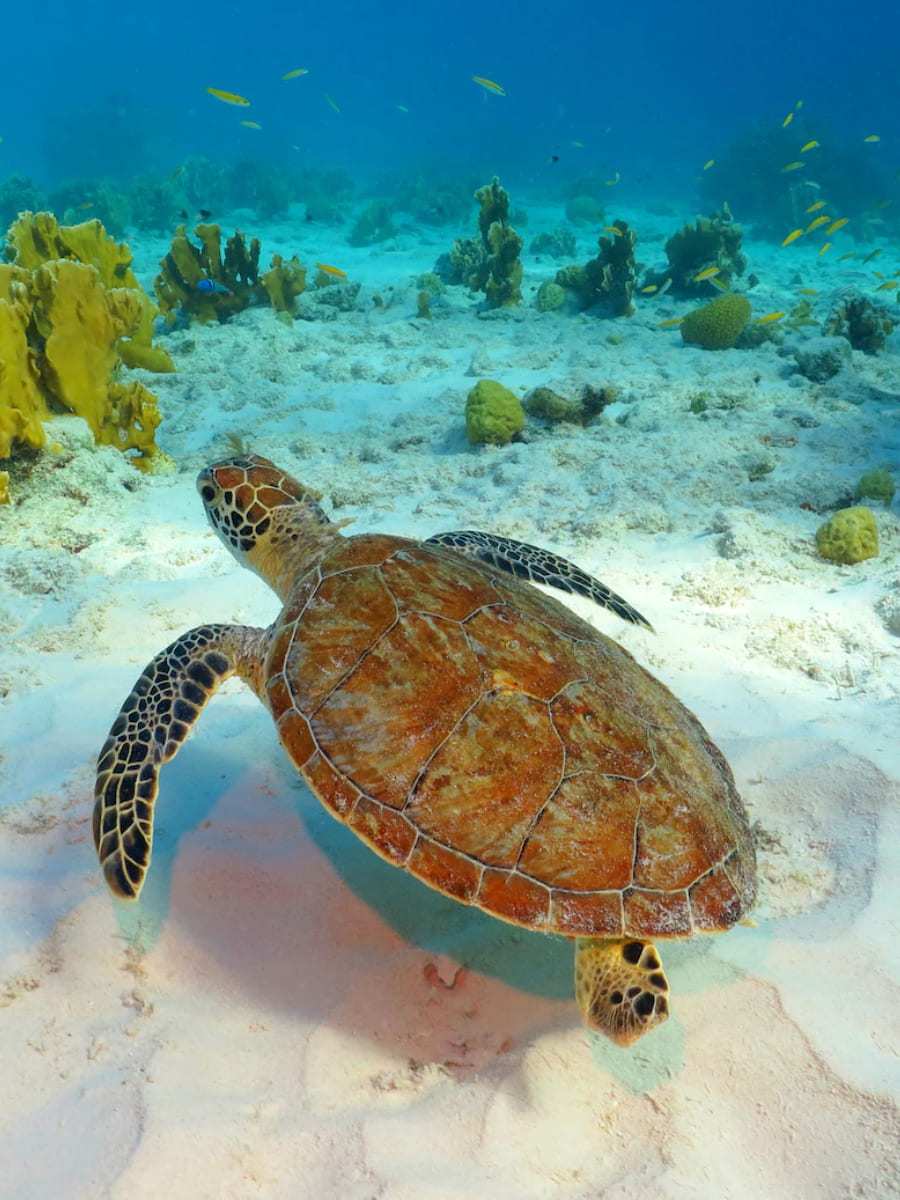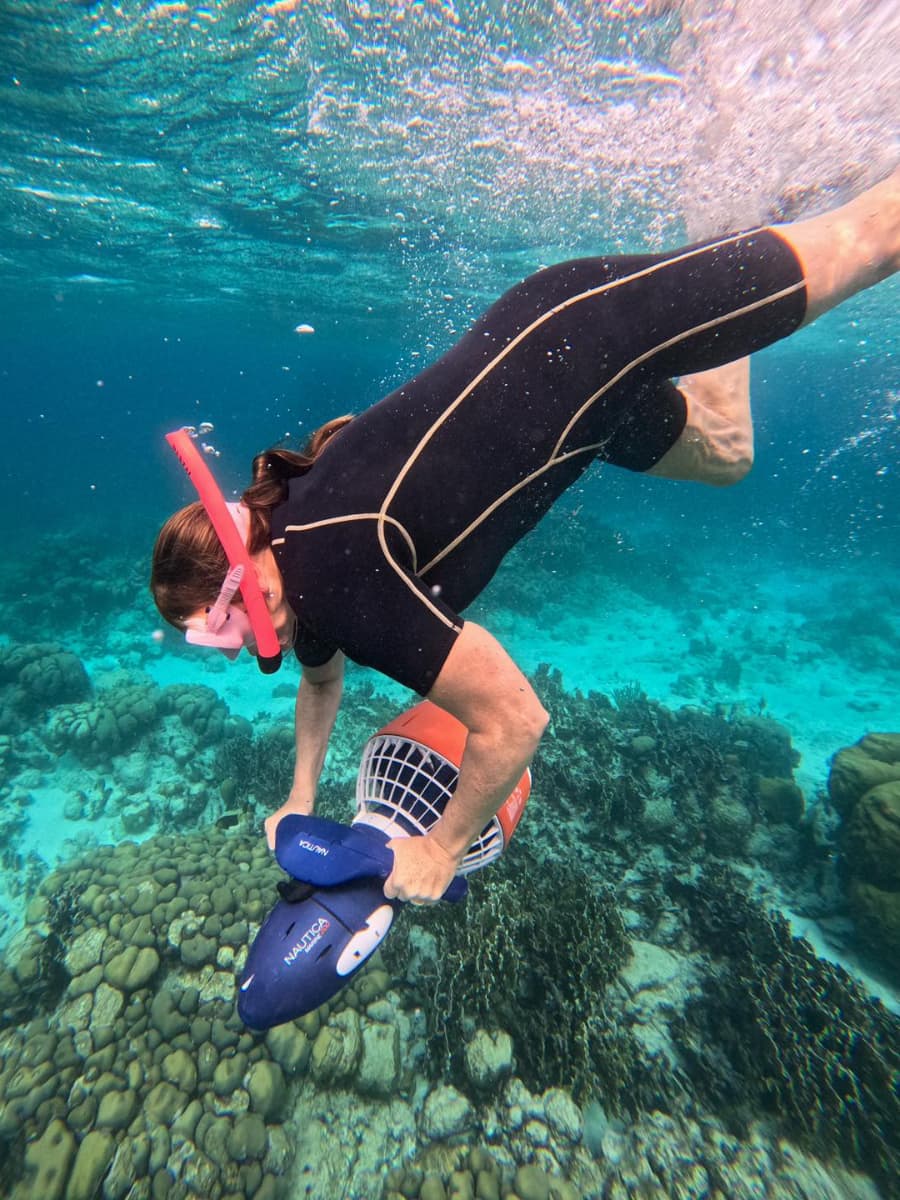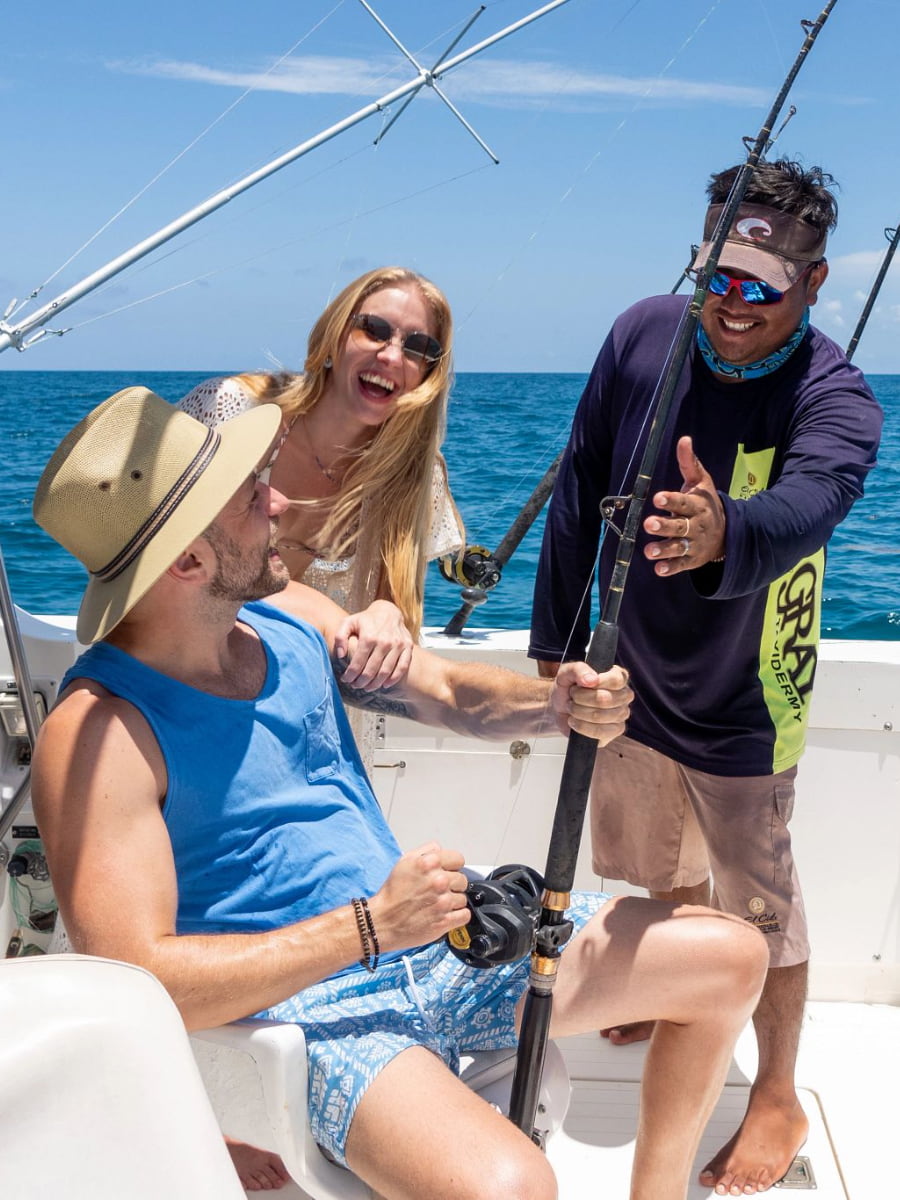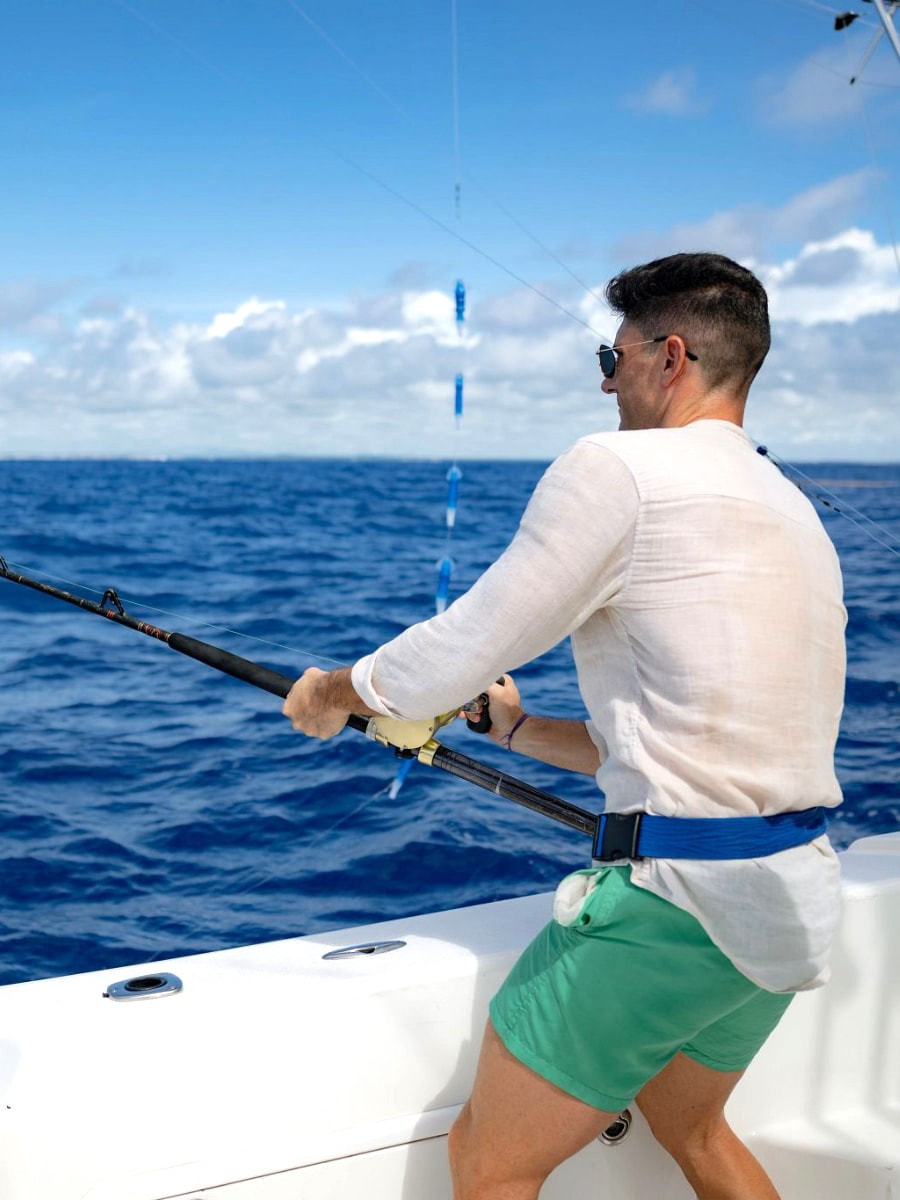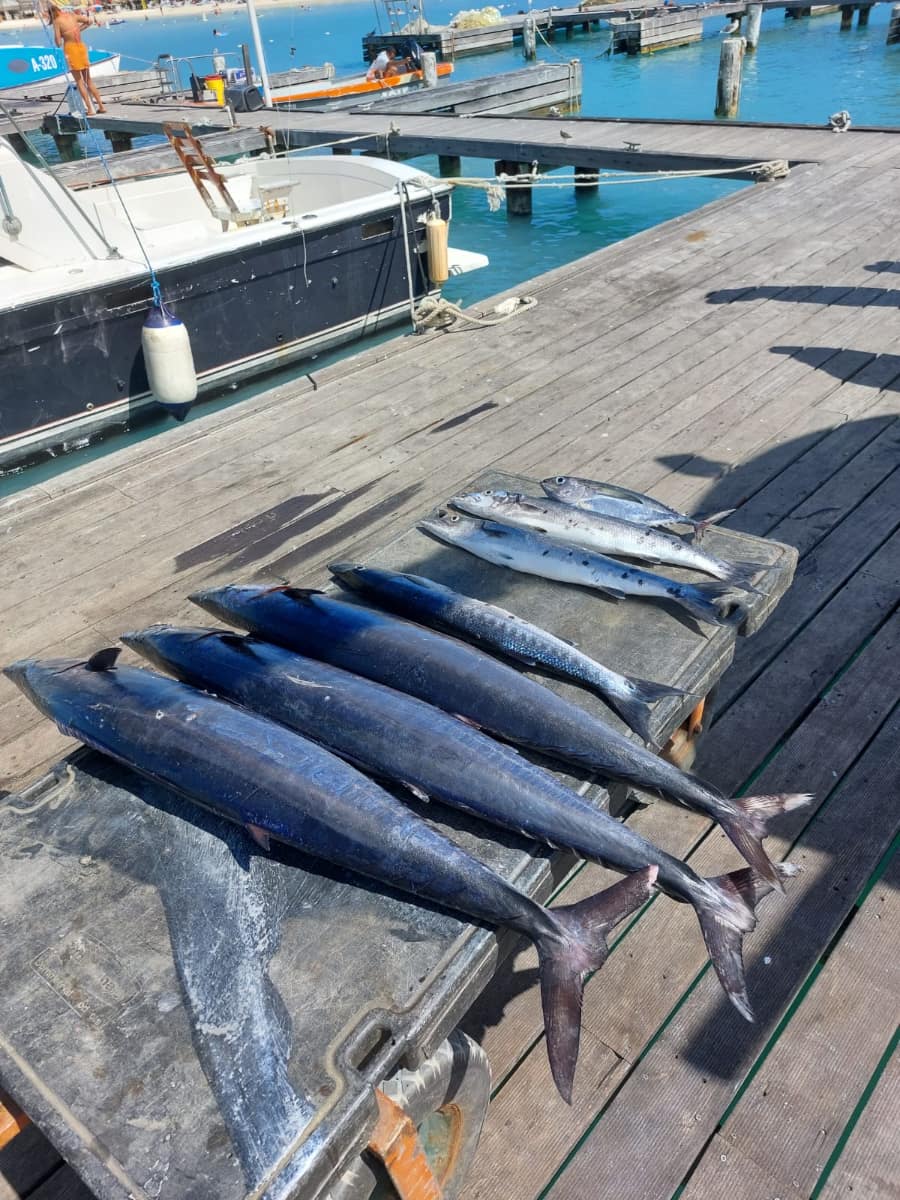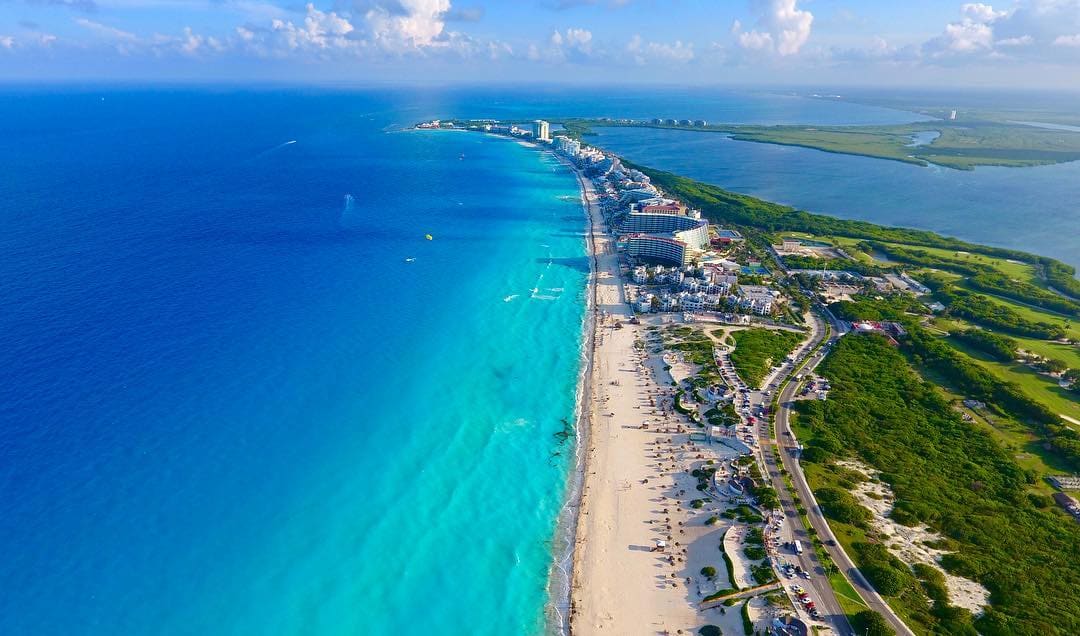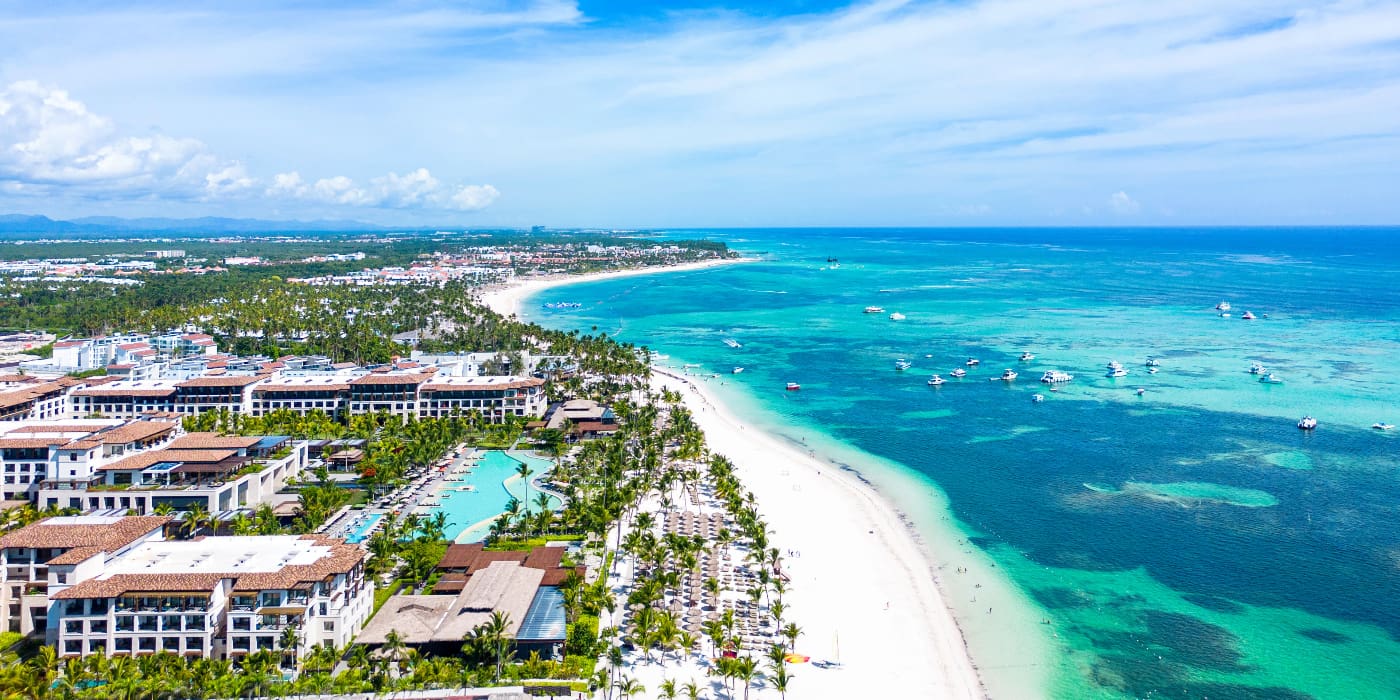Dreaming of white sandy beaches, crystal-clear turquoise waters, and endless sunshine? Aruba is the perfect Caribbean paradise that offers all this and so much more for every type of traveler. From thrilling water adventures to peaceful nature escapes, this happy island has something special waiting just for you.
Whether you’re planning your first visit or returning to this Dutch Caribbean gem, my guide will help you discover the best experiences Aruba has to offer. I’ve explored every corner of this beautiful island to bring you the most exciting activities, hidden gems, and local favorites that will make your trip unforgettable.
🏠 Where to Stay in Aruba
- 💎 Luxury Hotel: The Ritz-Carlton, Aruba, Palm-Eagle Beach
- ✨ 5-Star: Vistalmar Ocean Suites, Oranjestad
- 🏨 4-Star: Hilton Aruba Caribbean Resort & Casino
- 🛏️ 3-Star: Coconut Inn, Palm-Eagle Beach
- 💸 Cheap: Victoria City Hotel, Oranjestad
- 🏢 Apartment: The Mill Resort and Suites, Palm-Eagle Beach
- 👨👩👧👦 For Families: Courtyard by Marriott Aruba Resort, Palm-Eagle Beach
- 🏩 For Couples: Holiday Inn Resort Aruba - Beach Resort & Casino, Palm-Eagle Beach
💁 Best Guided Tours
- Aruba UTV Tour: Ride to Animal Sanctuary and Natural Cave Pool from € 122 (⭐4.9/5)
- Nightlife Tour with DJ and Dancing on Party Bus in Aruba from € 85 (⭐4.8/5)
- Aruba Secret Beach & Cave Pool ATV/UTV Adventure from € 162 (⭐4.9/5)
- Aruba: Catamaran Cruise, Mimosa Brunch, and Snorkeling from € 89 (⭐4.8/5)
Best Things to Do in Aruba
1. Palm Beach
Paradise Found. The beach is truly Aruba’s crown jewel with its two-mile stretch of powdery white sand and impossibly clear turquoise waters. I spent hours here just soaking up the Caribbean sun and watching the gentle waves lap against the shore. The calm waters make it perfect for swimming, even for those who aren’t strong swimmers.
Water Adventures. This beach is a watersport lover’s dream! While visiting Aruba, I tried parasailing (75 USD) which gave me breathtaking aerial views of the entire coastline. The beach is also fantastic for snorkeling, wakeboarding, and banana boat rides that had me laughing and holding on for dear life.
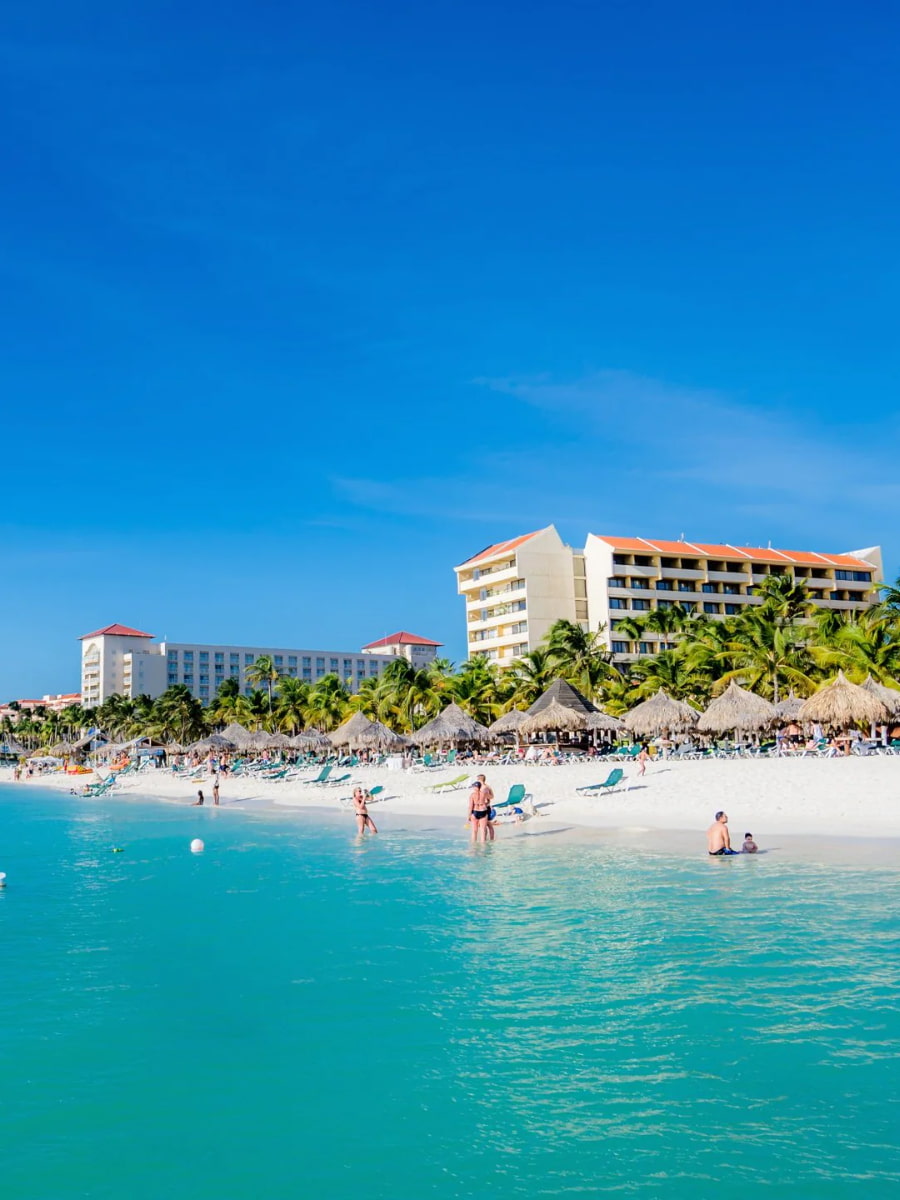
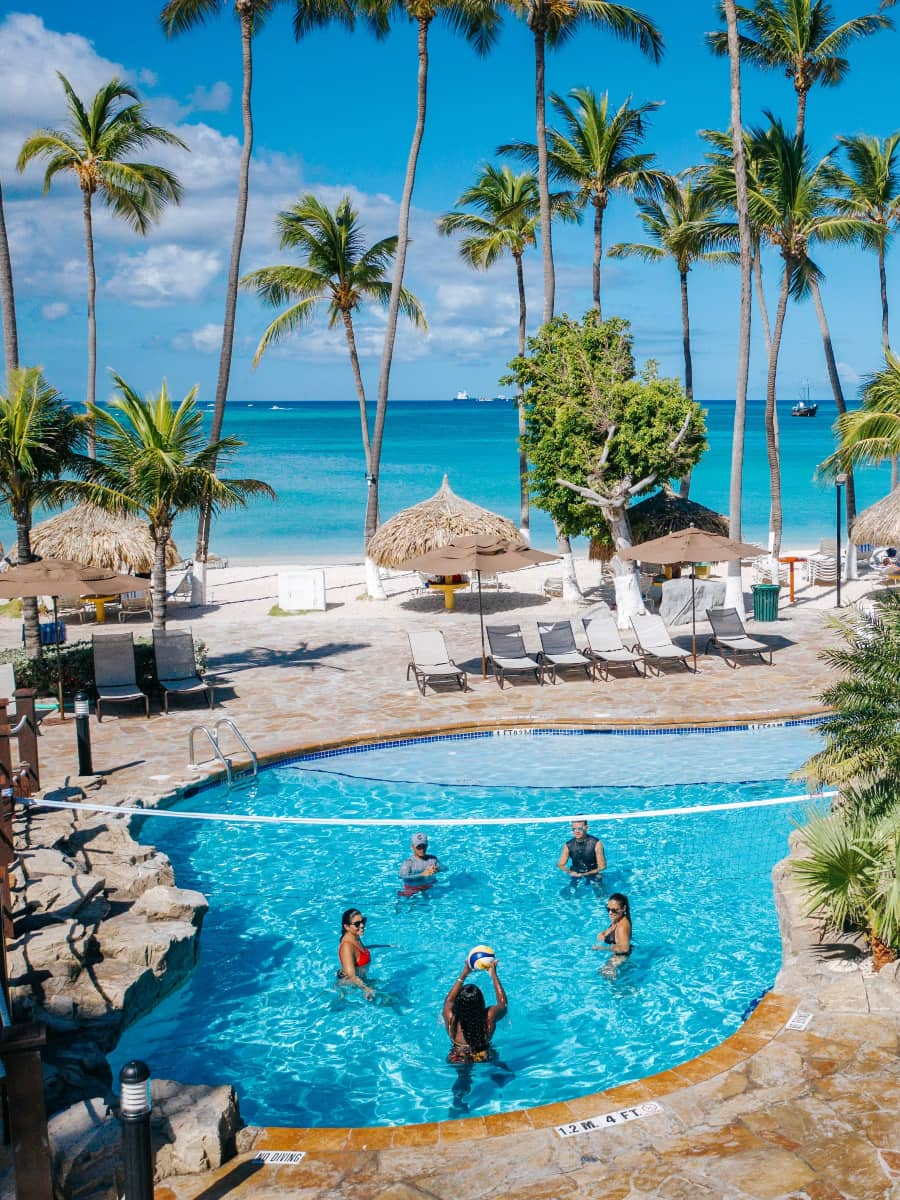
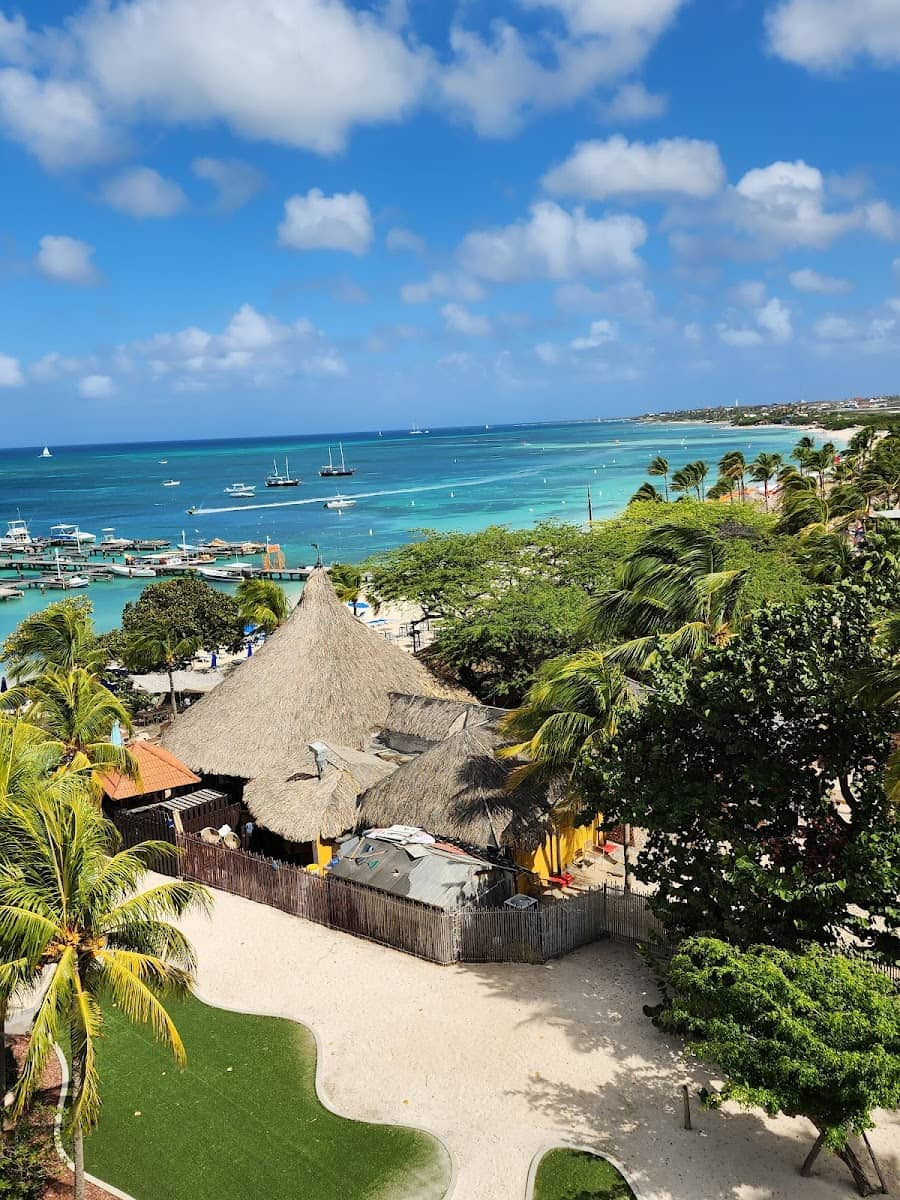
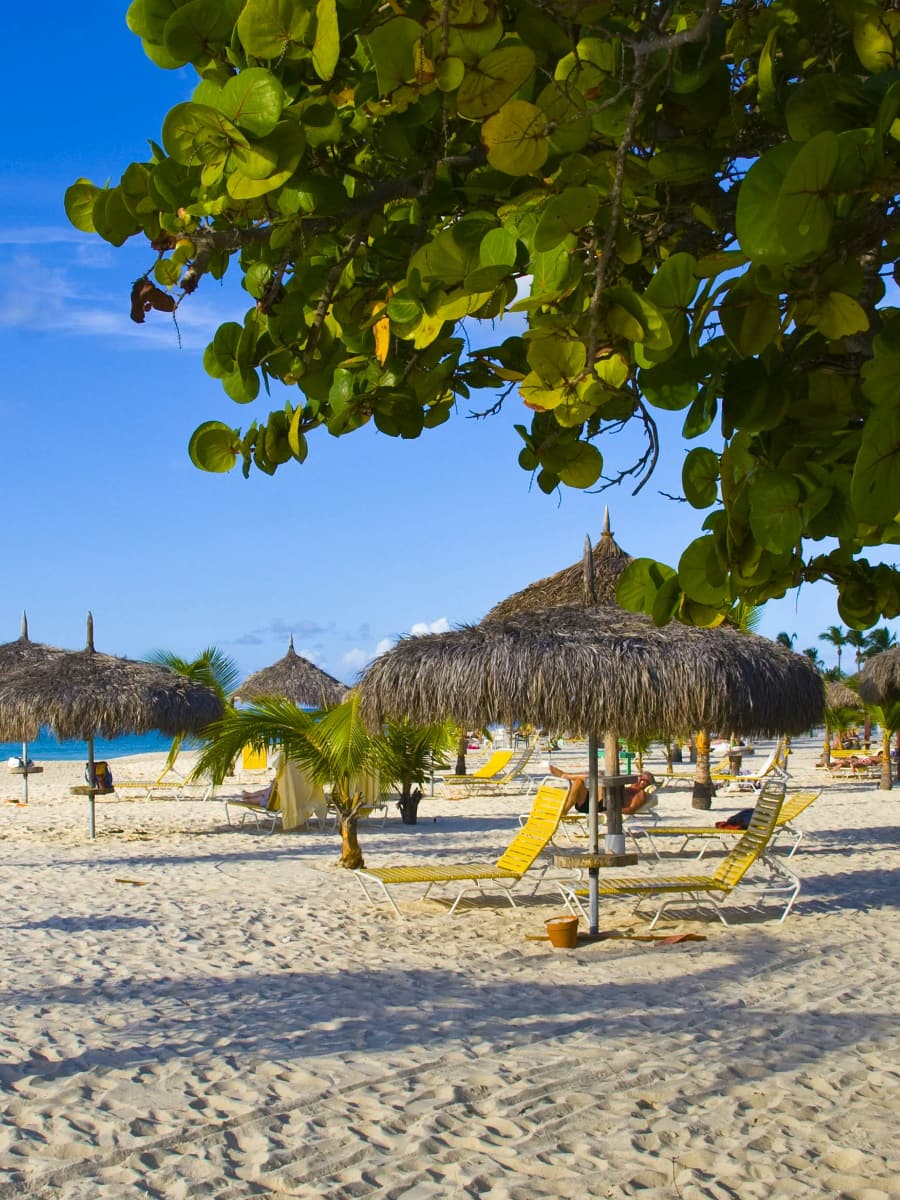
Sunset Magic. Walking along the beach during sunset became my daily ritual. The sky transforms into a canvas of orange and pink hues while kitesurfers create silhouettes against the horizon. My tip: head toward Hadicurari Beach on the eastern end for the most spectacular sunset views away from the crowds.
Beach Vibes. The atmosphere at the beach strikes the perfect balance between lively and relaxing. I loved stopping at Bugaloe Beach Bar and Grill on the pier for their refreshing Balashi beer (8 USD) while enjoying panoramic ocean views. After dark, the area comes alive with buzzing clubs and casinos just steps from the sand.
⭐ Best Activities
- Aruba Sunset Sail with Appetizers and Open Bar – Enjoy a relaxing evening aboard a luxury catamaran with unlimited drinks, tasty appetizers, and stunning sunset views along Aruba’s coastline while the friendly crew entertains with music and dancing.
2. Arikok National Park
Wild Beauty. Arikok National Park covers nearly 20% of Aruba, revealing a dramatically different side of the island that most tourists miss. I was amazed by the stark contrast between the rugged desert landscape and the turquoise coastline just minutes away. The park’s diverse ecosystems include limestone caves, sand dunes, and lava formations.
Here’s what you shouldn’t miss in Arikok:
- Quadiriki Caves with ancient Arawak petroglyphs
- Boca Prins sand dunes and hidden beach
- Jamanota Hill – Aruba’s highest point (188m)
Wildlife Encounters. During my morning hike, I spotted several species unique to Aruba, including the Aruban whiptail lizard and the Aruban burrowing owl. The park rangers explained that early morning offers the best chance to see wildlife before the heat intensifies. Remember to bring binoculars if you’re interested in birdwatching.
Practical Tips. Entry to Arikok costs 11 USD per person, and I highly recommend hiring a 4×4 vehicle (around 85 USD daily) as many areas aren’t accessible by regular car. The visitor center at the San Fuego entrance provides excellent maps and information about hiking trails ranging from easy 30-minute walks to challenging 3-hour treks.
Conservation Efforts. What impressed me most was learning about the park’s dedication to preserving Aruba’s natural heritage. The rangers are passionate about protecting endangered species like the Aruban rattlesnake. My guide mentioned that portions of entrance fees directly support conservation projects throughout the park.
⭐ Best Activities
- Horseback Ride Tour to Natural Pool in Arikok National Park – Experience Aruba’s rugged terrain on horseback as you journey through Arikok National Park to the famous Conchi Natural Pool, where you can swim in a volcanic rock formation protected from the ocean.
3. De Palm Island
Island Escape. Just a short boat ride from the mainland lies De Palm Island, Aruba’s all-inclusive day trip destination that’s perfect for families and adventure seekers alike. I spent an entire day here and still didn’t manage to try everything! The ferry departs regularly from the pier near Palm Beach, making it easily accessible.
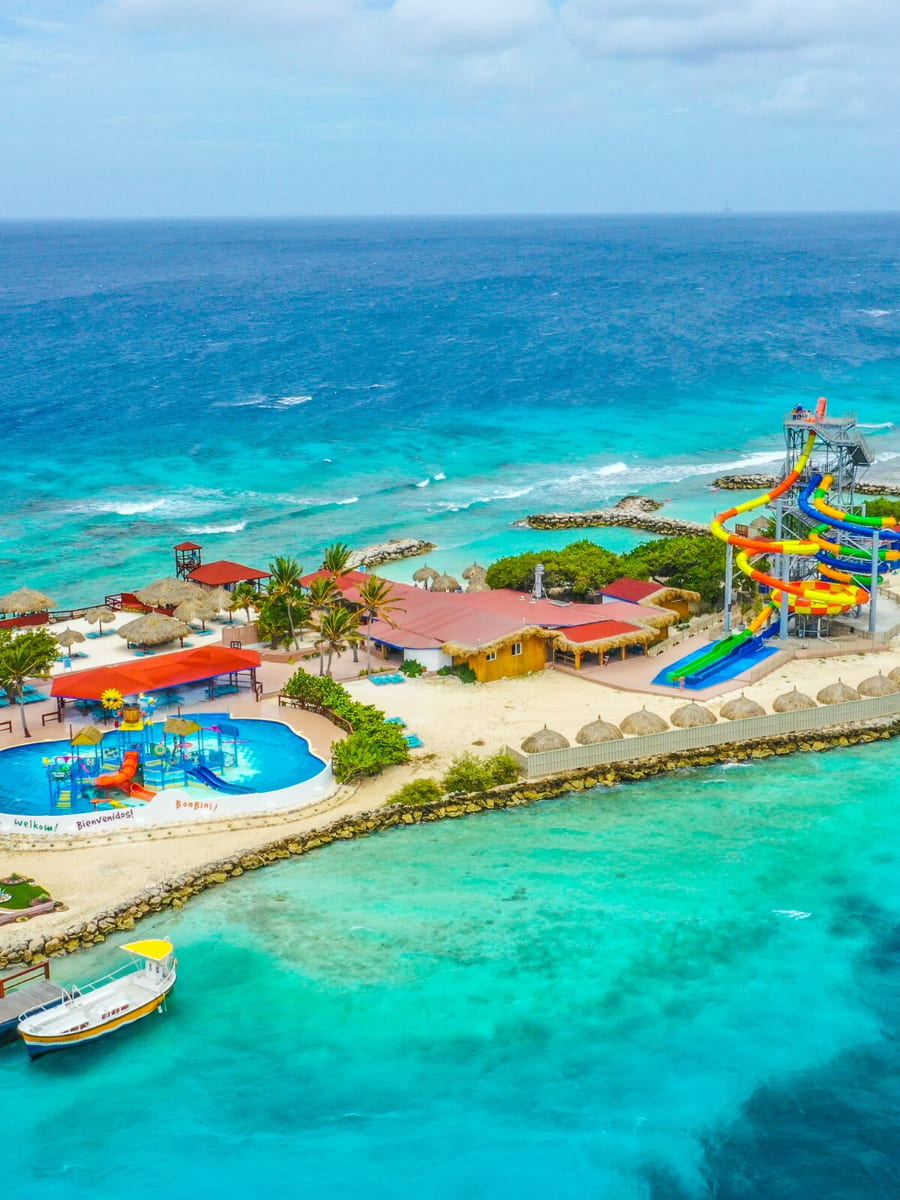

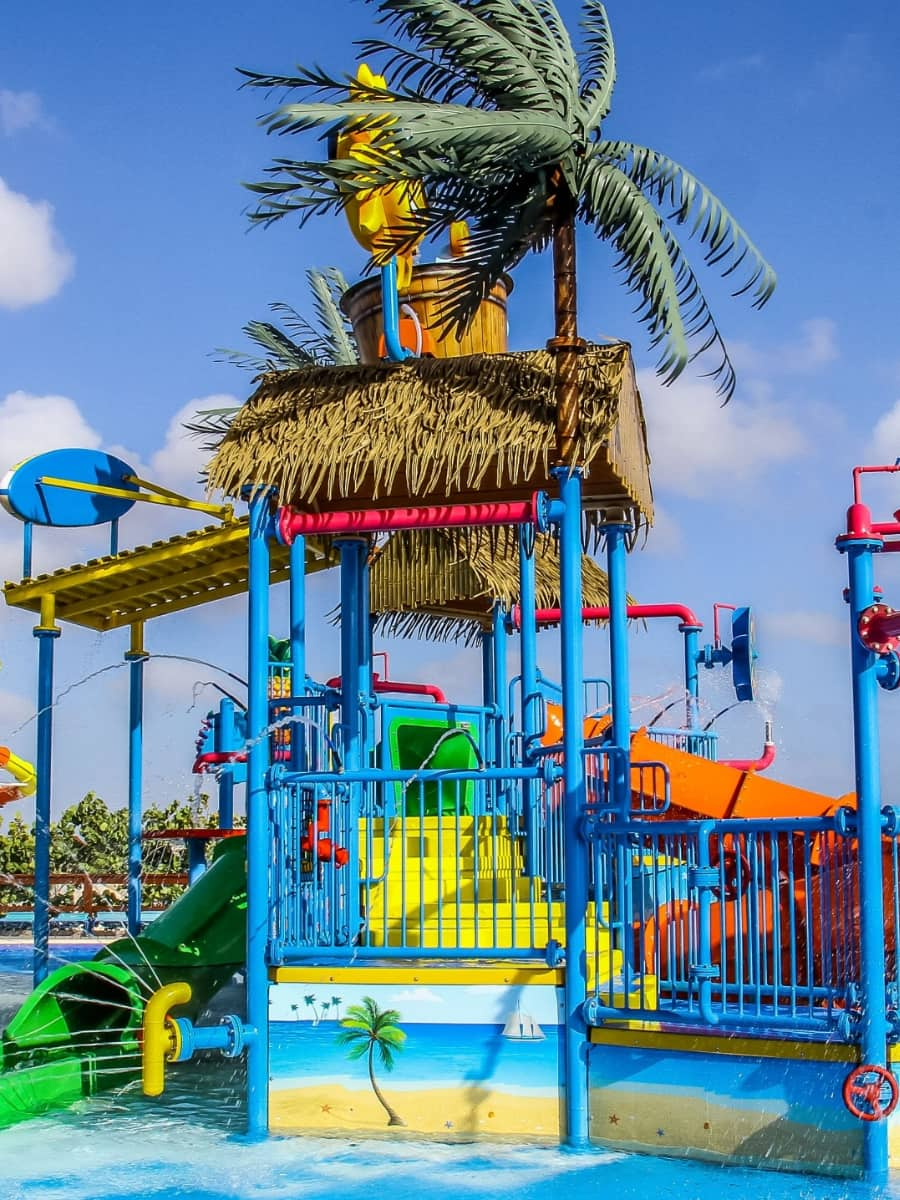
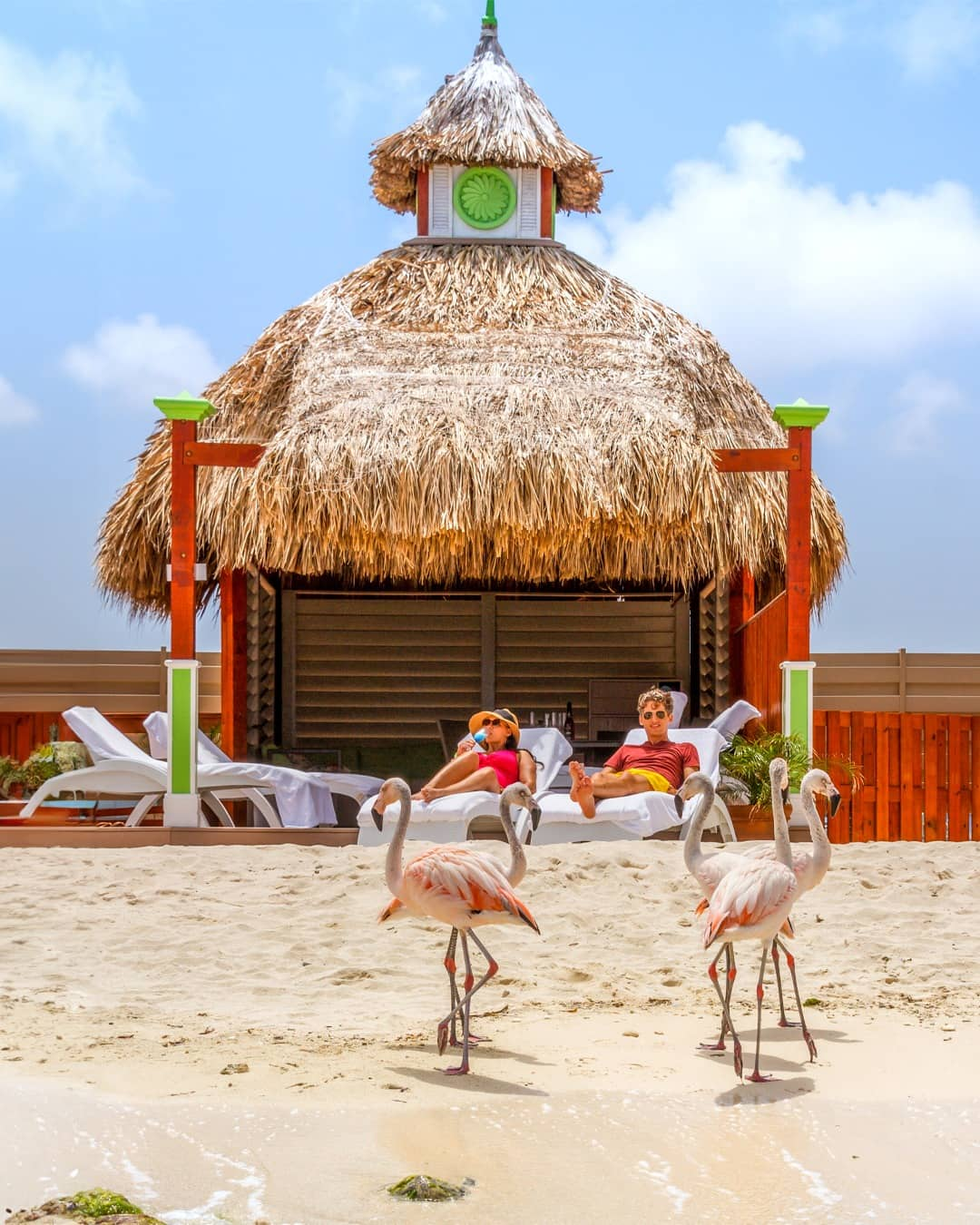
Water Park Heaven. The island’s water park became my playground for hours with its colorful water slides and splash zones. What really stood out was the unique underwater helmet walking experience where I could literally walk on the ocean floor surrounded by tropical fish.
De Palm Island Pricing:
| Package | Includes | Price (USD) |
|---|---|---|
| Basic | Ferry, food, drinks, beach | 115 |
| Premium | Basic + snorkeling gear | 135 |
| VIP | Premium + cabana, priority service | 199 |
| Children (ages 4-12) | Same as adult packages | 20% off |
Snorkeling Paradise. The protected reef area offers some of Aruba’s best snorkeling opportunities. I followed the underwater trail markers and discovered vibrant coral formations and schools of blue parrotfish. The clarity of the water was exceptional, with visibility extending beyond 50 feet on my visit.
⭐ Best Activities
- De Palm Island: Passport to Paradise Aruba – Spend a day at this all-inclusive private island featuring unlimited food and drinks, water park activities, snorkeling, banana boat rides, and more just off Aruba’s coast.
4. California Lighthouse
Landmark Views. Perched on Aruba’s northwestern tip, the Lighthouse offers the most spectacular panoramic views I’ve experienced on the island. Named after the steamship California that sank nearby in 1891, this 100-foot tall structure has become an iconic symbol of Aruba. The surrounding Hudishibana Hill provides a perfect vantage point for photography.
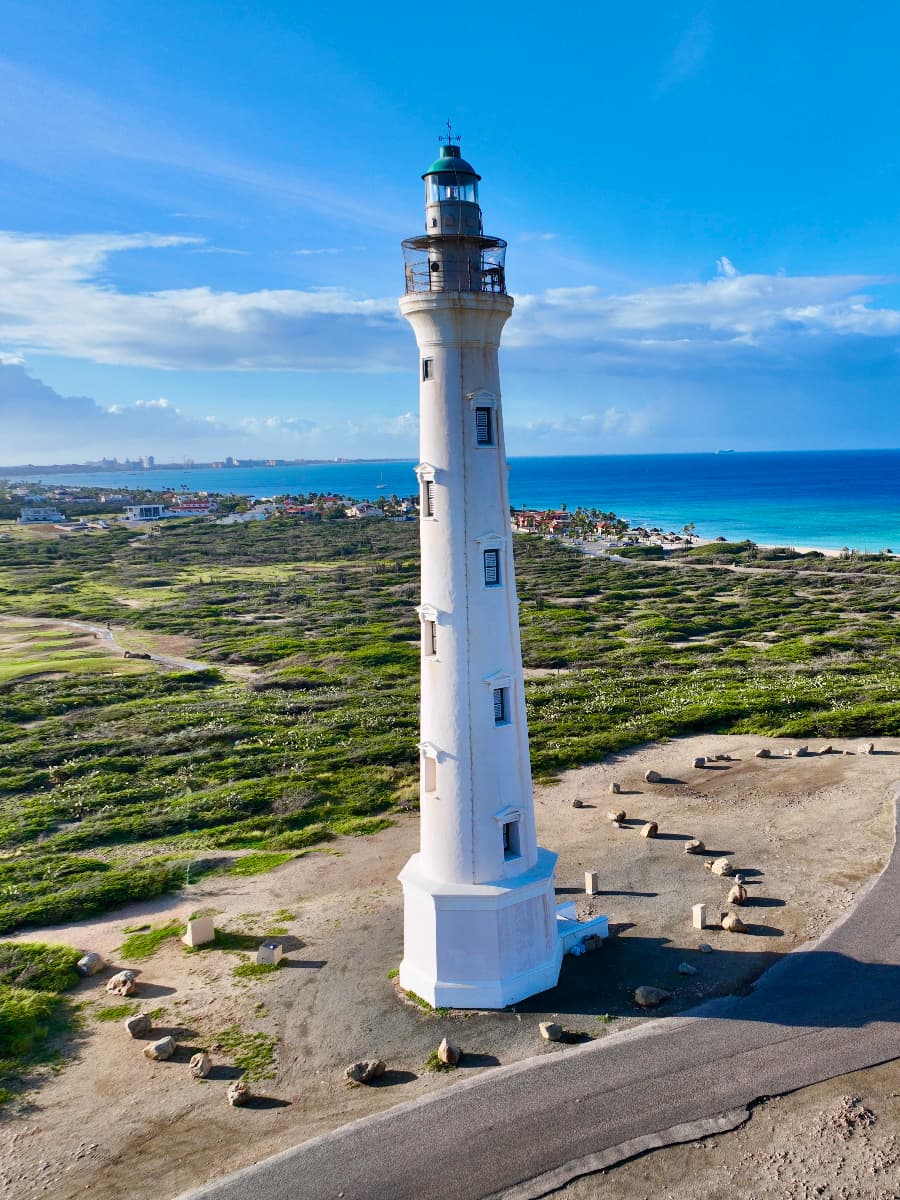


Top 5 things to see from the lighthouse:
- Dramatic coastline with crashing waves
- Arashi Beach’s pristine shoreline
- Tierra del Sol golf course’s green landscape
- Bubali Bird Sanctuary in the distance
- Sunset views over the Caribbean Sea
Climbing Adventure. For just 5 USD, I climbed the spiral staircase to the lighthouse’s viewing platform. The climb is relatively easy but narrow in spots. My effort was rewarded with unobstructed 360-degree views that truly showcase Aruba’s diverse landscape – from desert terrain to luxury resorts and the endless blue ocean.
Local Flavors. After exploring the lighthouse, I discovered Faro Blanco Restaurant just steps away. Their fresh catch of the day (around 28 USD) was perfectly prepared with Aruban spices. The restaurant’s terrace offers the same magnificent views as the lighthouse but with the comfort of shade and cool drinks.
⭐ Best Activities
- Full Island Tour of Aruba – Discover Aruba’s highlights in one comprehensive tour.
5. Baby Beach
Gentle Waters. Baby Beach earned its name for good reason – its calm, shallow lagoon is perfect for families with small children or anyone seeking tranquil swimming conditions. Located near San Nicolas on Aruba’s southeastern tip, this crescent-shaped beach feels worlds away from the busier resort areas. I spent hours floating in the crystal-clear water without a care in the world.
Snorkeling Spots. The reef area at the edge of the lagoon offers excellent snorkeling opportunities for beginners. I rented gear from the nearby Big Mama Grill (15 USD for a full set) and spotted angelfish, sergeant majors, and even a small barracuda during my underwater exploration.
Baby Beach Amenities:
- ✓ Public restrooms and showers
- ✓ Beach chair rentals (10 USD/day)
- ✓ Snack bars and restaurants
- ✓ Free parking
- ✓ Picnic areas with shade
- ✗ No lifeguards on duty
- ✗ Limited natural shade
Local Connection. Unlike Palm Beach’s resort atmosphere, Baby Beach offers a more authentic Aruban experience. I chatted with several locals who come here regularly for weekend picnics. They shared tips about the best spots to set up for the day and recommended trying the fresh fish sandwiches (7 USD) from the small yellow hut near the parking area.
⭐ Best Activities
- Full-Day Aruba Island Sightseeing Tour – Explore Aruba’s diverse landscapes and attractions in a single day, visiting natural wonders, historical sites, and beautiful beaches with transportation and guide included.
6. Natural Pool (Conchi)
Hidden Treasure. Tucked away within Arikok National Park, the Natural Pool (locally known as “Conchi”) is a volcanic rock formation that creates a tranquil swimming hole protected from the crashing waves of the Atlantic. Reaching this secluded spot requires effort, but the reward is absolutely worth it. I felt like I’d discovered a secret paradise.
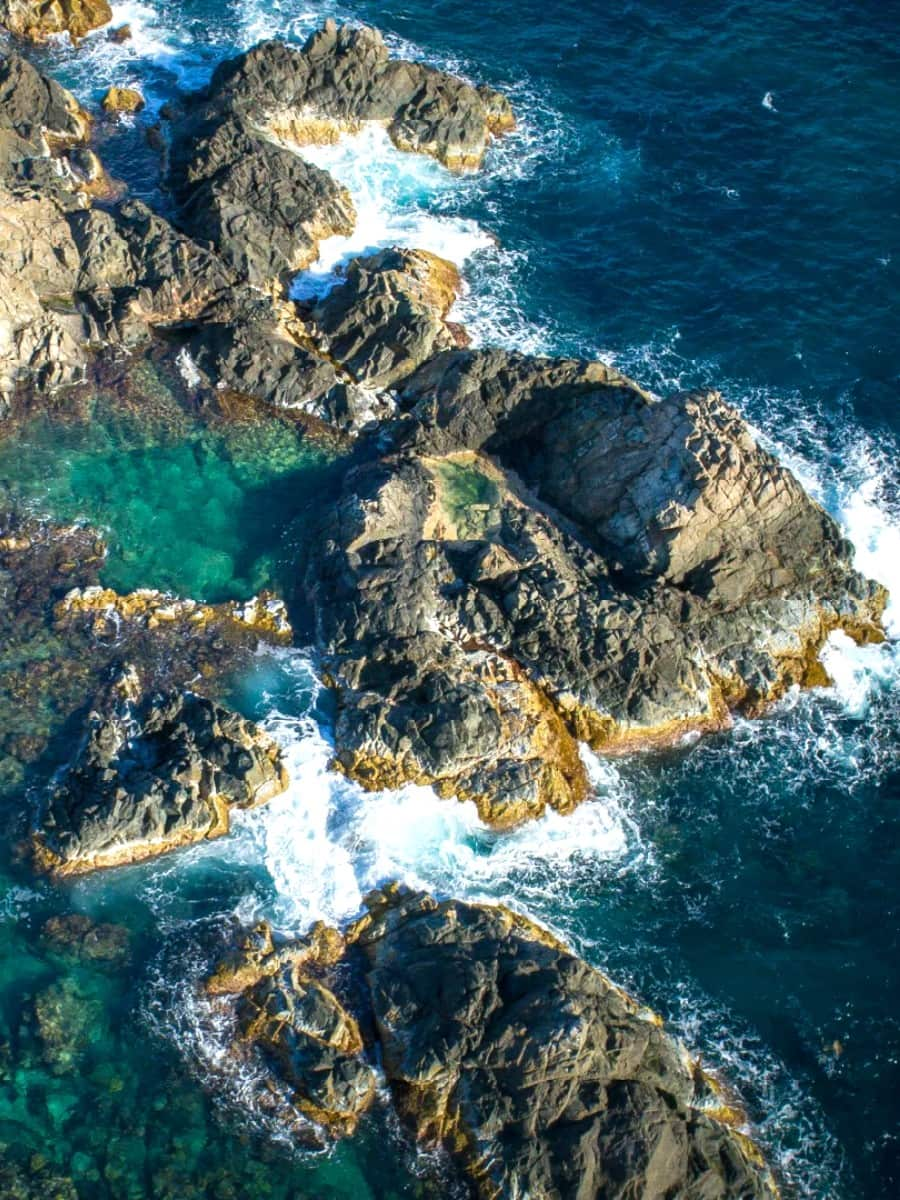
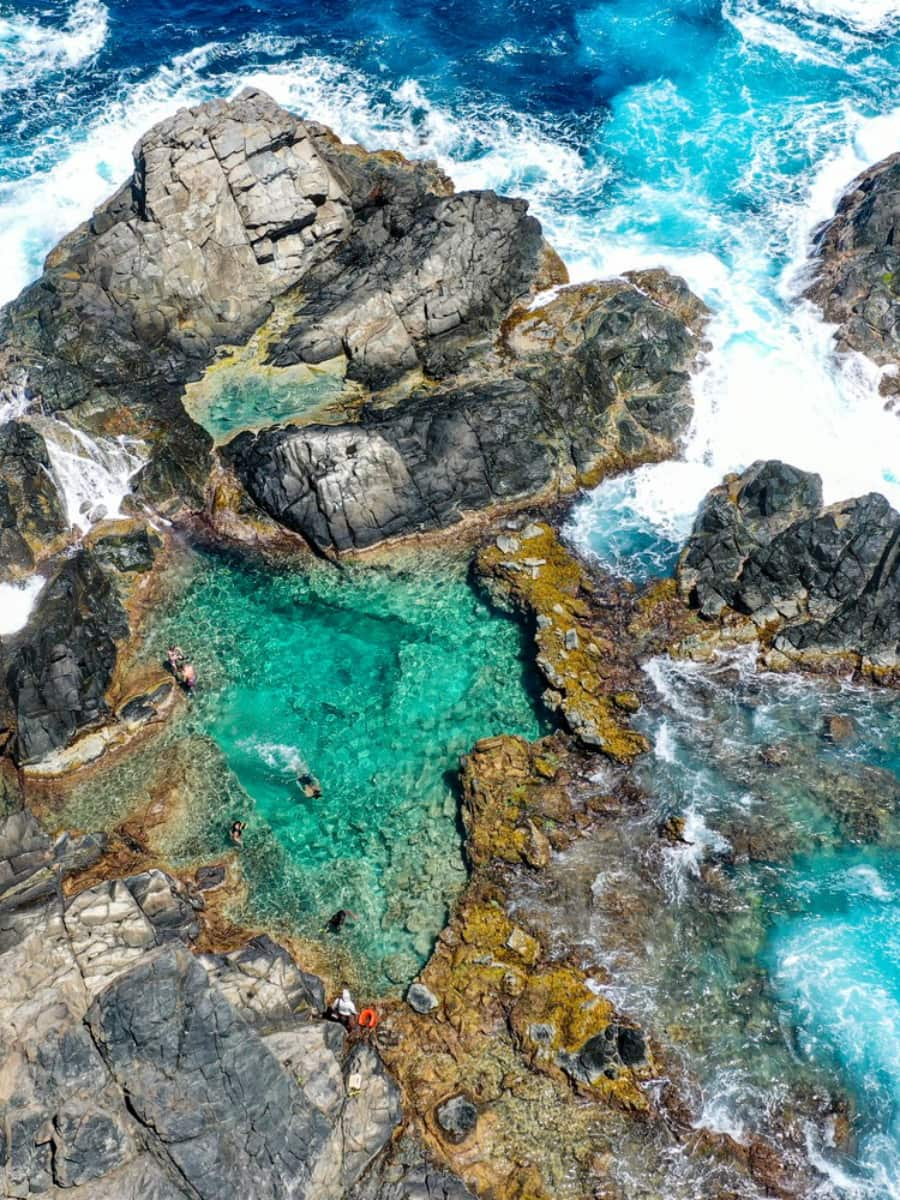

Adventure Journey. There are only two ways to reach the Natural Pool:
- By 4×4 vehicle:
- Rental cost: ~85 USD/day
- Rough terrain requires experienced drivers
- Allows flexibility to explore at your own pace
- Parking available about 10 minutes walk from pool
- Guided tour options:
- Jeep tours: 89 USD per person
- Horseback tours: 115 USD per person
- ATV tours: 125 USD per person
- Hiking tours: 75 USD per person
Swimming Experience. The natural pool itself is surprisingly deep in the center, perfect for jumping from the surrounding rocks (though always check water levels first). I spent nearly two hours here, alternating between cooling off in the refreshing water and sunbathing on the warm volcanic rocks. The contrast between the wild ocean beyond and the calm pool was mesmerizing.
Preparation Matters. This excursion requires proper planning. I brought water shoes which proved essential on the slippery rocks. Apply waterproof sunscreen as there’s zero shade at the pool. The best time to visit is early morning (before 10am) when tour groups haven’t yet arrived and you might have this magical spot all to yourself.
7. Bushiribana Gold Mill Ruins
Historical Mystery. The Bushiribana Gold Mill Ruins stand as a fascinating reminder of Aruba’s gold rush era. Built in 1872 by the Aruba Island Gold Mining Company, these stone ruins overlook the island’s rugged northern coastline. I spent an hour exploring the remaining walls and imagining the bustling activity that once filled this now-quiet place.
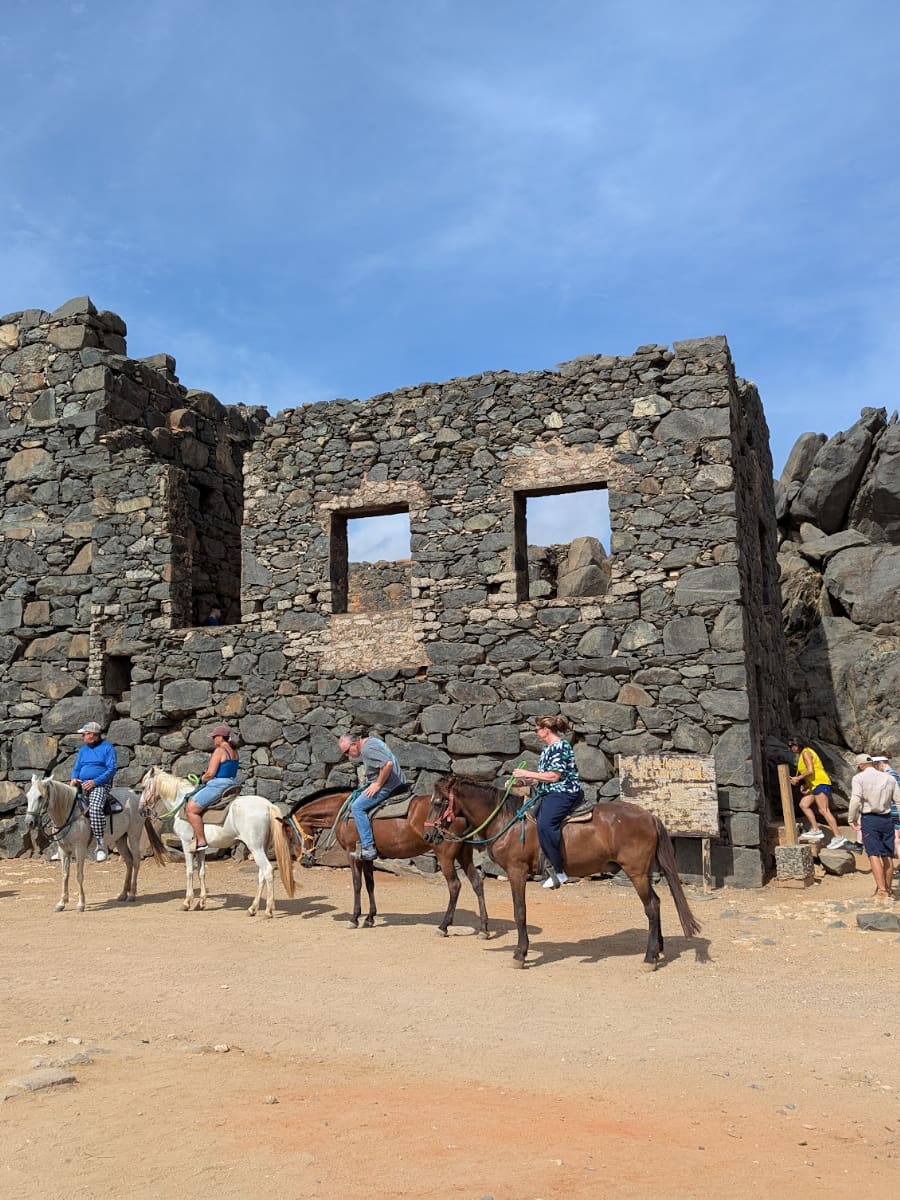
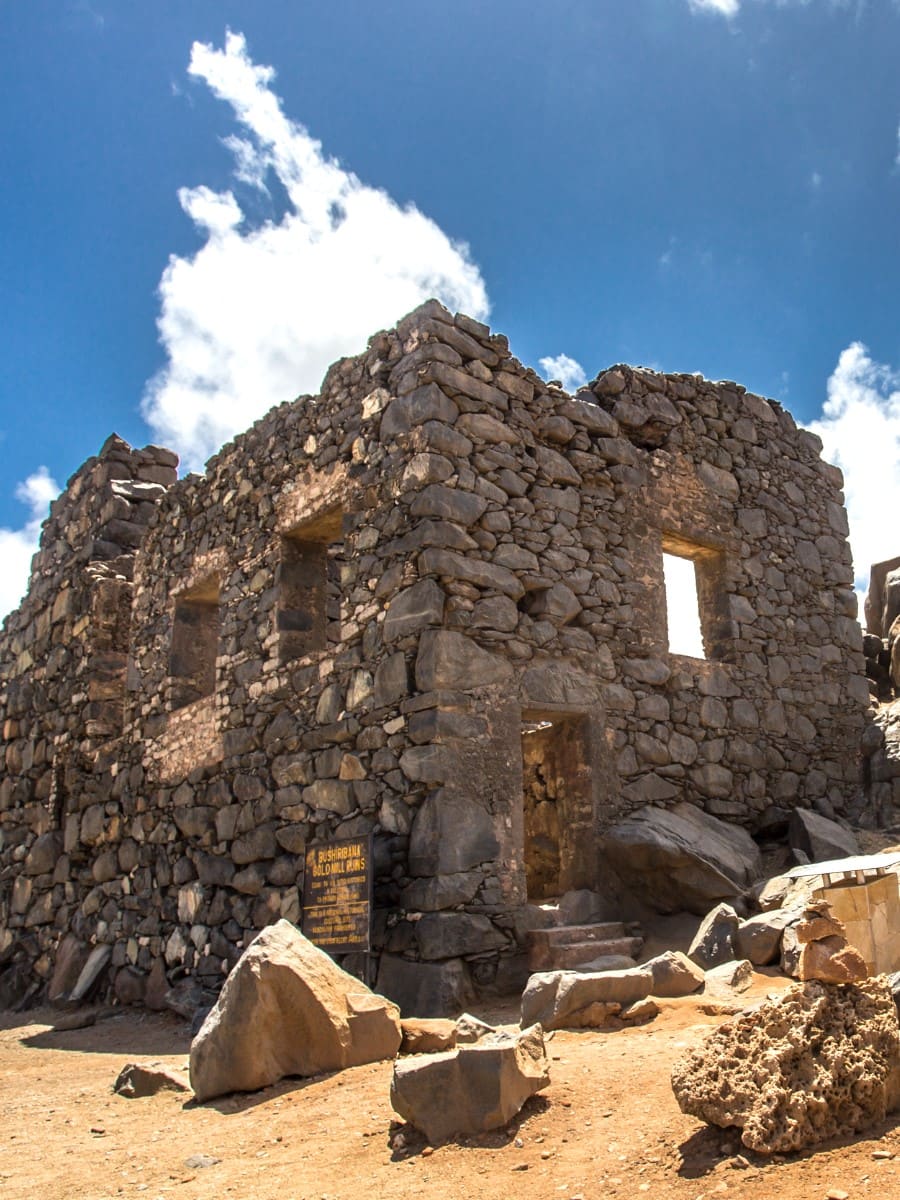
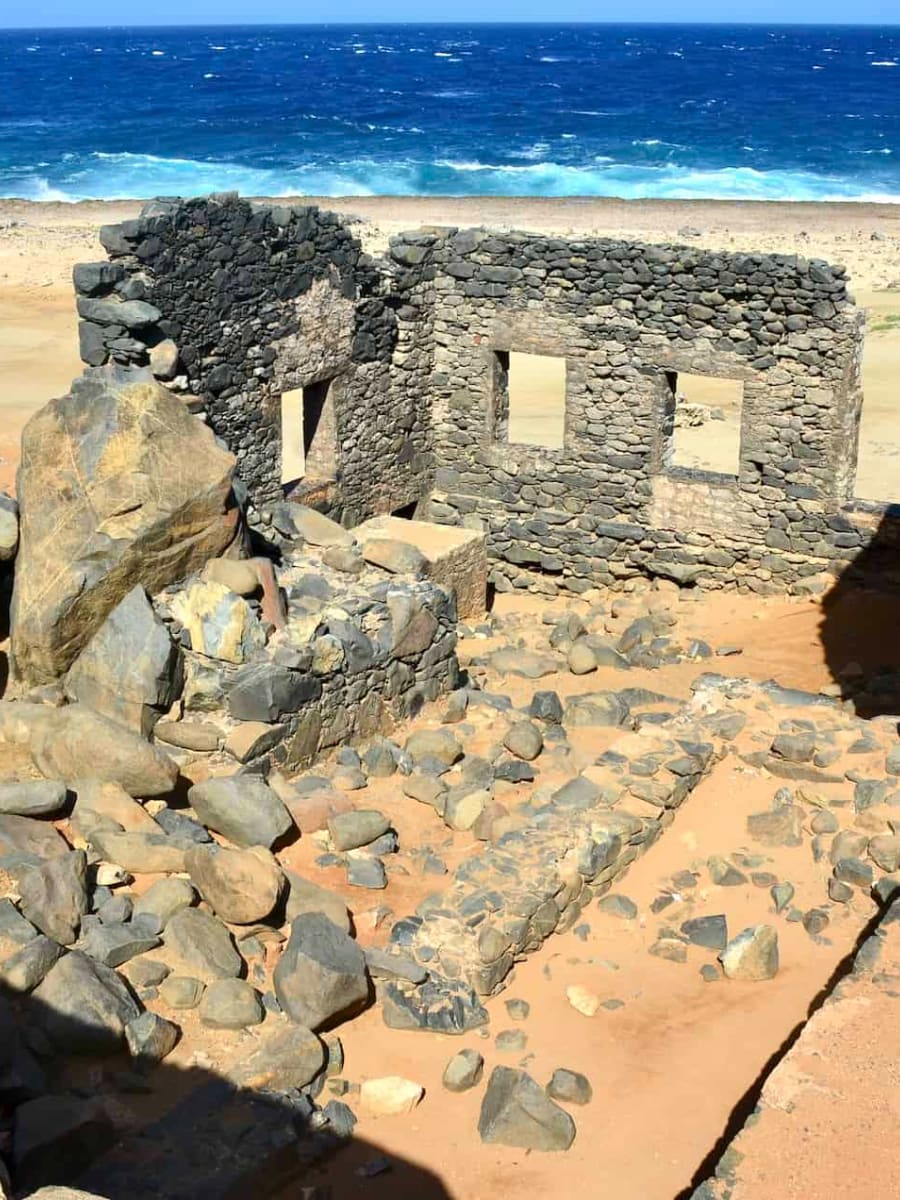
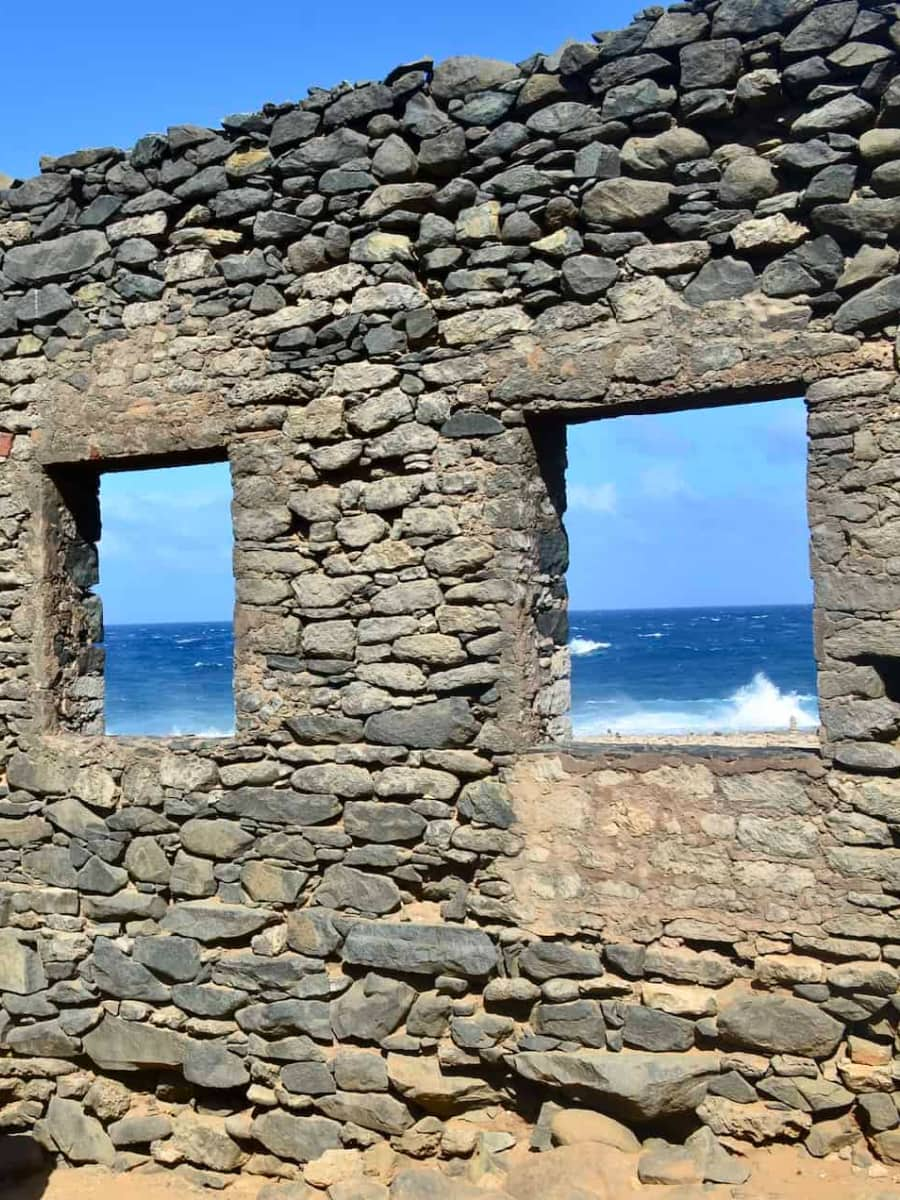
Photography Paradise. The contrast between the golden stone ruins and the deep blue sea creates stunning photo opportunities. I found the best lighting conditions in the late afternoon when the warm sunlight bathes the stones in a golden glow. The elevated position offers sweeping views of the coastline that are equally impressive.
Interesting facts about Bushiribana:
- Processed over 3 million pounds of gold during operation
- Built to resemble a medieval fortress for protection
- Operated for just ten years before closing
- Constructed using local stone and European techniques
- Now serves as a popular rest stop for island tours
Local Legends. While exploring the ruins, I met an Aruban guide who shared fascinating stories about the site. According to local legend, pirates once used the area to hide treasure, and some believe gold artifacts still remain buried nearby. Whether true or not, these tales add an extra layer of intrigue to the experience.
⭐ Best Activities
- Aruba ATV Tour – Navigate Aruba’s rugged terrain on an exciting ATV adventure that takes you to hidden beaches, desert landscapes, and scenic viewpoints not accessible by regular vehicles.
8. Jeep/ATV Tours
Off-Road Freedom. Exploring Aruba’s rugged terrain by Jeep or ATV was easily one of my most exhilarating island experiences. These tours access remote areas impossible to reach by regular car, including hidden beaches, desert landscapes, and rocky coastlines. I opted for a 4-hour Jeep tour that covered the island’s entire northeastern coast.
Tour comparison table:
| Tour Type | Duration | Price Range (USD) | Best For |
|---|---|---|---|
| Jeep Tour (guided) | 4-8 hours | 89-159 | Families, comfort seekers |
| ATV Tour | 2-4 hours | 99-149 | Adventure enthusiasts |
| UTV Tour | 3-5 hours | 115-189 | Couples, small groups |
| Self-Drive Jeep | Full day | 85-110 (rental) | Independent explorers |
Dusty Adventure. Be prepared to get dirty! The red dust of Aruba’s desert landscape gets everywhere, but that’s part of the fun. My guide stopped at natural bridges, hidden caves, and secluded beaches that I would never have found on my own. The bumpy ride added to the sense of adventure as we traversed terrain that seemed straight out of a western movie.
Local Knowledge. What made my tour exceptional was our guide Carlos from ABC Tours, who shared insights about Aruba’s geology, wildlife, and culture throughout the journey. He knew exactly when to stop for photos and pointed out tiny details I would have missed, like the rare Divi Divi trees that always point southwest due to the trade winds.
⭐ Best Activities
- 4x4 Tour and Natural Pool Snorkeling in Aruba – Explore Aruba’s wild side in a 4×4 vehicle, visiting highlights like the Natural Bridge and Bushiribana Gold Mill Ruins before snorkeling in the famous Natural Pool.
9. Shipwreck Diving (SS Antilla)
Underwater Time Capsule. The SS Antilla is one of the Caribbean’s largest and most accessible shipwrecks, making it a must-visit for diving enthusiasts. This 400-foot German freighter was scuttled during World War II and now rests in relatively shallow water (60 feet at its deepest point). Swimming through its massive hull was like traveling back in time.
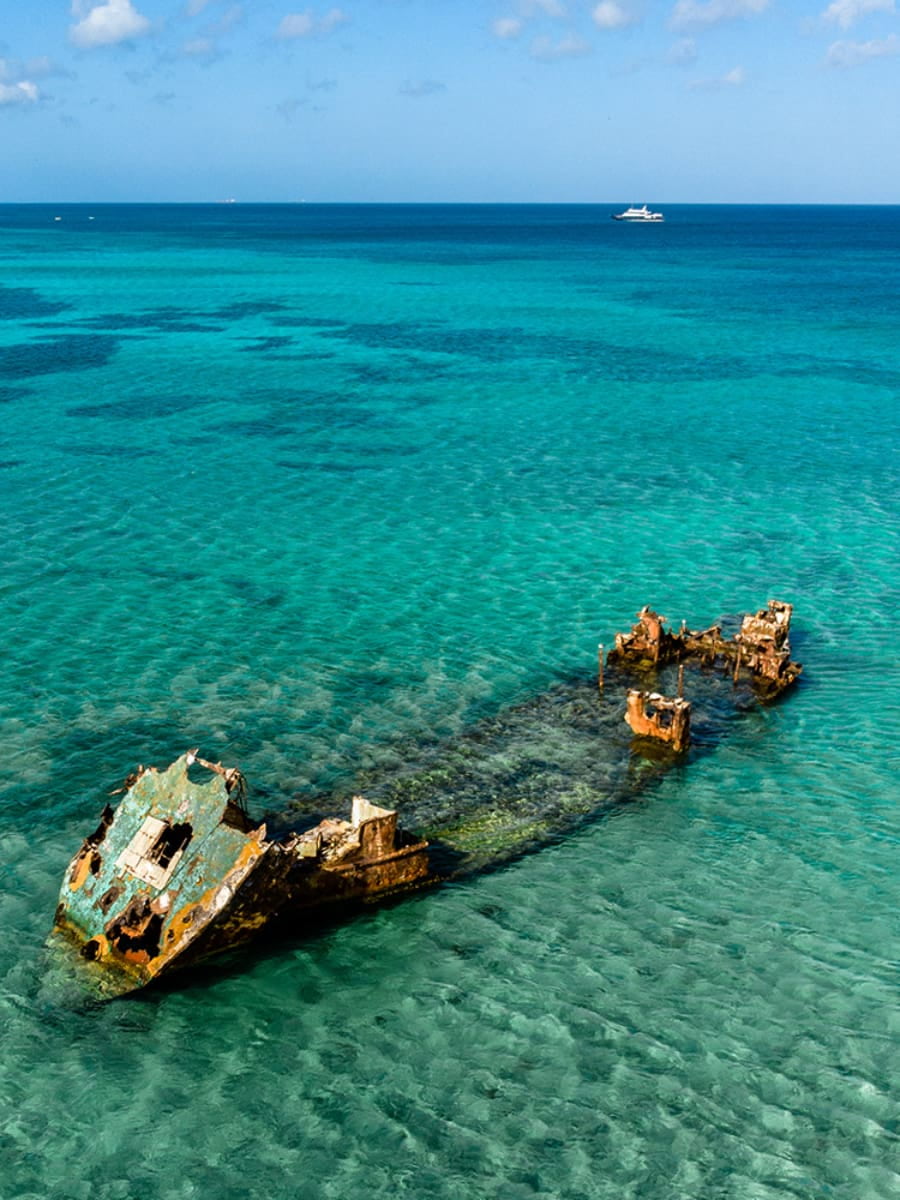
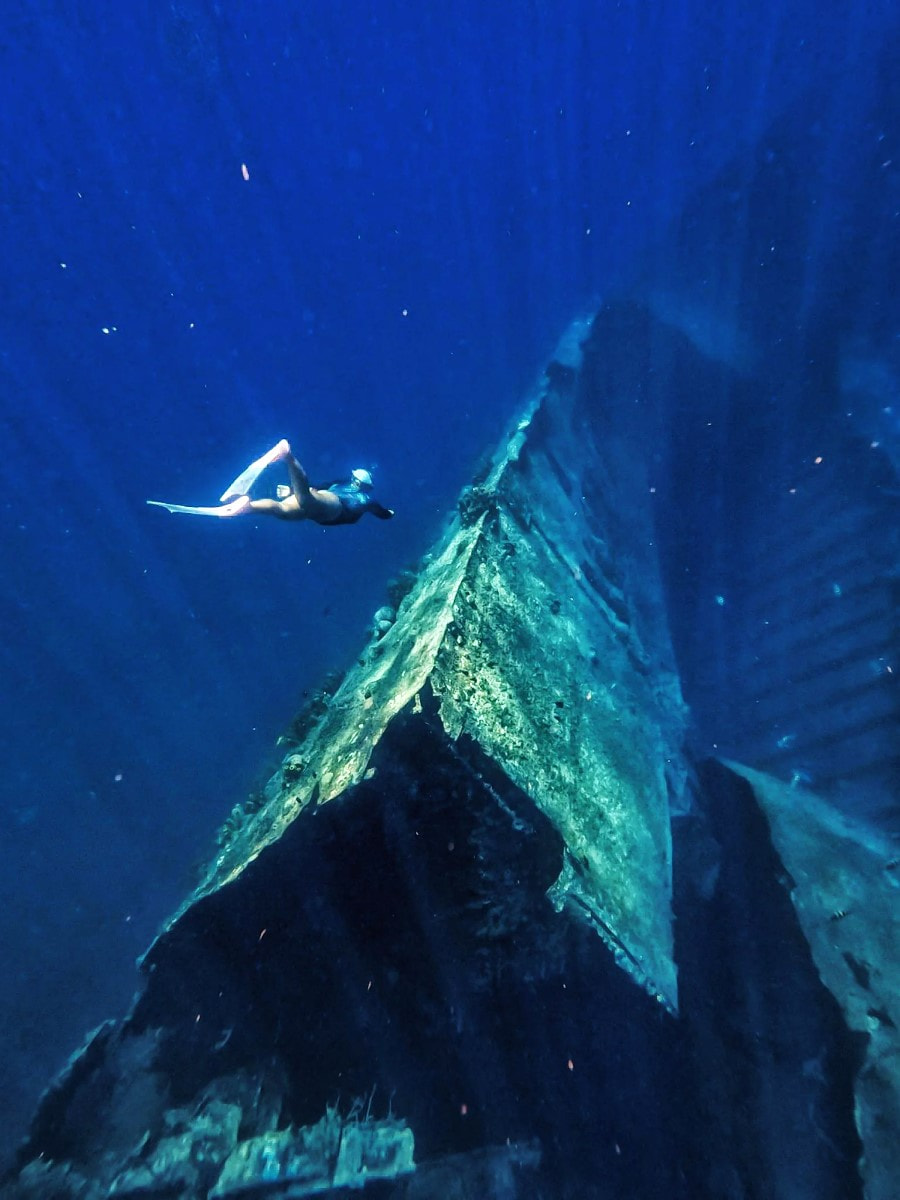
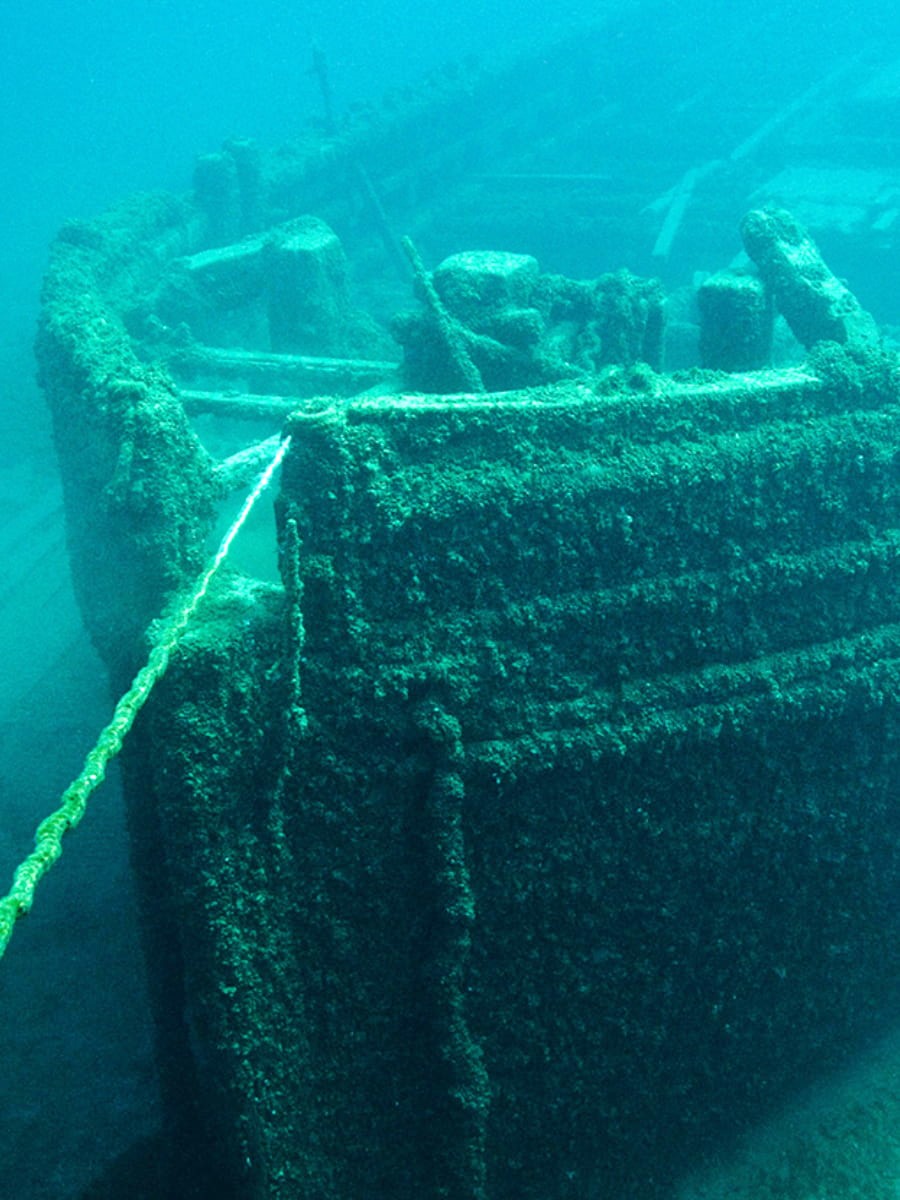

What you’ll see at the Antilla wreck:
- Coral-encrusted propeller shaft
- Massive cargo holds now home to schools of tropical fish
- Engine room accessible to advanced divers
- Deck guns still visible after decades underwater
- Lobsters and moray eels hiding in crevices
Diving Options. I booked my two-tank dive with Red Sail Sports for 149 USD, which included all equipment and an experienced divemaster. For non-certified divers, several operators offer guided snorkeling tours above the wreck for around 65 USD. The visibility typically ranges from 50-100 feet, making it possible to appreciate the wreck’s scale even from the surface.
Marine Life. What surprised me most was the abundance of marine life that has claimed the wreck as home. Thousands of blue tangs, parrotfish, and angelfish swarm around the structure. I spotted several hawksbill turtles feeding on the sponges growing along the hull. Our divemaster pointed out a well-camouflaged scorpionfish – a reminder to look but not touch!
⭐ Best Activities
- Aruba Guided Night Dive Adventure – Experience the underwater world after dark on this guided night dive that reveals nocturnal marine life, fluorescent coral, and a completely different perspective of Aruba’s reefs.
10. Oranjestad Attractions
Colorful Capital. Aruba’s charming capital blends Dutch colonial architecture with Caribbean vibrancy. The pastel-colored buildings along Main Street (Caya G.F. Betico Croes) create a picturesque backdrop for shopping and dining. I spent a delightful morning wandering through the compact downtown area, which is easily walkable.
Must-visit spots:
- Fort Zoutman & Willem III Tower (Historical Museum)
- Renaissance Mall (luxury shopping)
- Royal Plaza Mall (duty-free shopping)
- Cosecha Creative Center (local artisan market)
- Linear Park (waterfront promenade)
Cultural Immersion. For a taste of local culture, I visited the Fort Zoutman Historical Museum (entry: 5 USD). This small but informative museum showcases Aruba’s history from indigenous settlements through colonization to modern independence. On Tuesday evenings, the fort hosts the Bon Bini Festival with traditional music, dance, and food – a perfect introduction to Aruban culture.
⭐ Best Activities
- UTV Rental in Aruba – Create your own adventure with a UTV rental that gives you the freedom to explore Aruba’s off-road trails, hidden beaches, and natural attractions at your own pace.
11. Aruba Sunset Sail
Golden Hour Magic. Experiencing Aruba’s legendary sunset from the water was easily one of the highlights of my trip. As our catamaran glided along the coastline, I watched the sky transform into a canvas of orange, pink, and purple hues. The silhouette of Palm Beach against this colorful backdrop created postcard-perfect views.
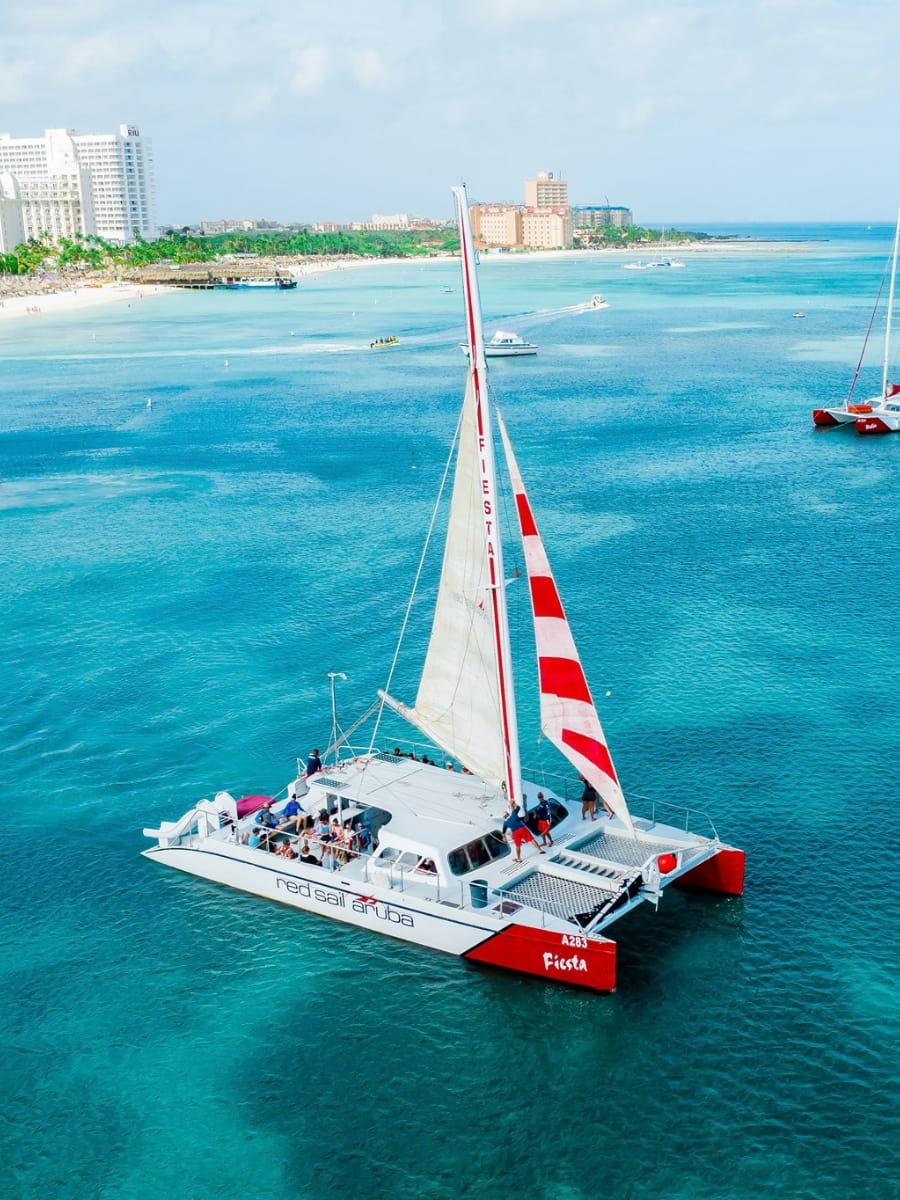
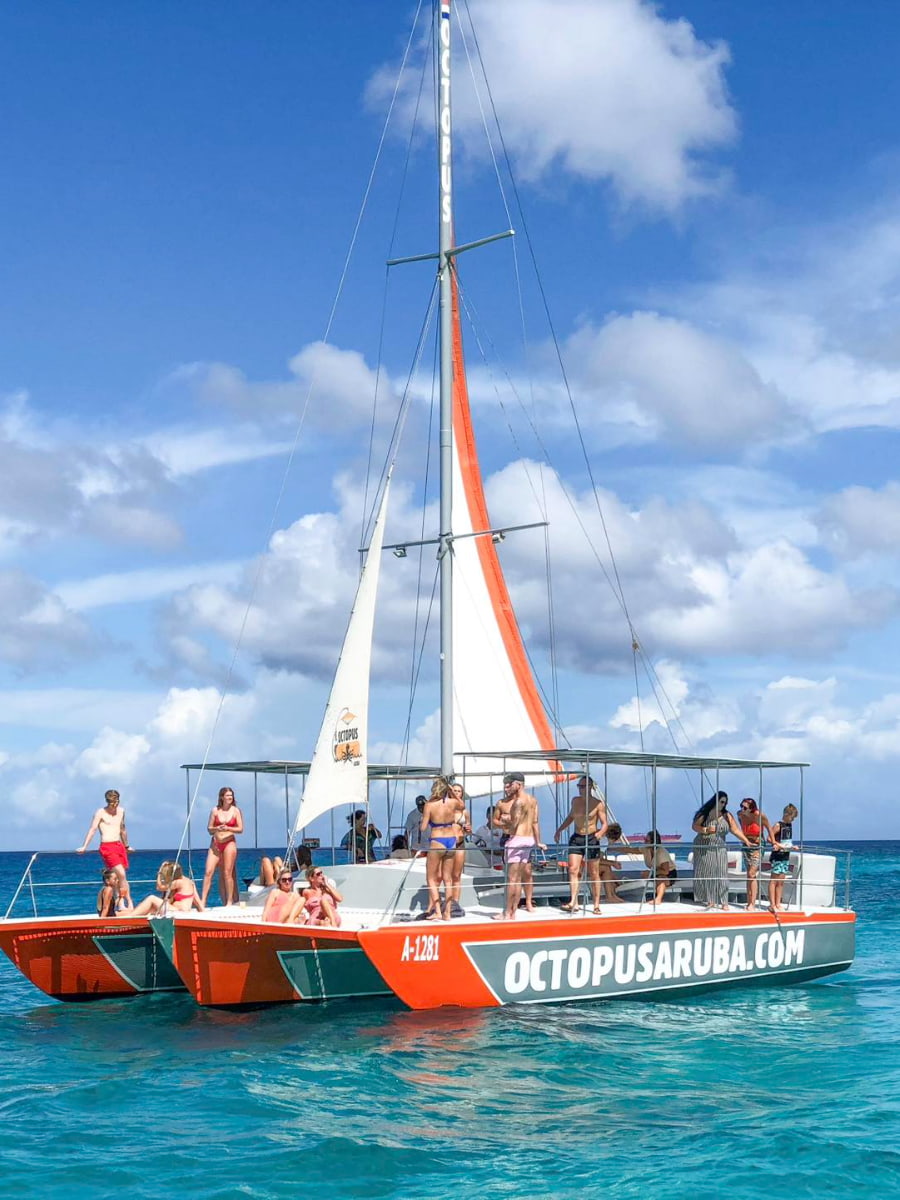

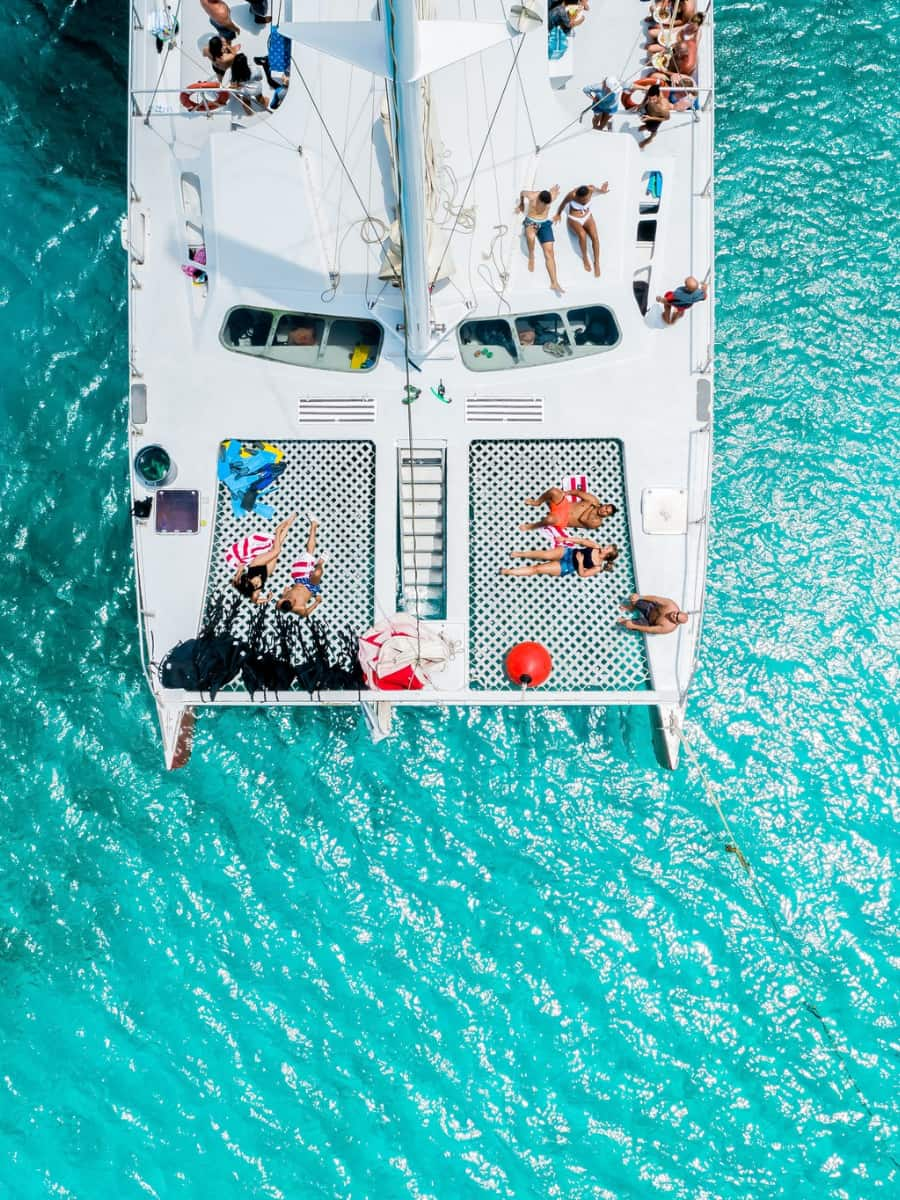
Sunset sail options comparison:
| Operator | Vessel Type | Duration | Inclusions | Price (USD) |
|---|---|---|---|---|
| Red Sail Sports | Luxury Catamaran | 2 hours | Open bar, snacks | 79 |
| Jolly Pirates | Traditional Schooner | 2.5 hours | Open bar, rope swing | 65 |
| Monforte Luxury Cruise | Private Yacht | 3 hours | Premium drinks, dinner | 149 |
| Pelican Adventures | Sailing Catamaran | 2 hours | Champagne toast, appetizers | 75 |
Social Atmosphere. The sunset sail I chose with Jolly Pirates created the perfect balance of relaxation and fun. Fellow travelers quickly became friends as we shared stories over rum punches. The crew kept the atmosphere lively with Caribbean music and entertaining stories about island life and pirate legends.
Photography Tips. For the best photos, I positioned myself on the boat’s port side as we sailed north to south along the coast. This angle captured both the sunset and the island’s silhouette. The captain knew exactly where to pause for the perfect shot when the sun touched the horizon – a moment of pure magic that I’ll never forget.
⭐ Best Activities
- Aruba Happy Hour Sunset Sail – Toast to another beautiful day in paradise on this evening catamaran cruise featuring premium open bar, gourmet appetizers, and spectacular sunset views along Aruba’s coastline.
12. Horseback Riding Tours
Beach Gallop. Exploring Aruba’s northern coastline on horseback offered a unique perspective of the island’s wild beauty. My morning ride with Rancho Notorious took me through desert landscapes, along secluded beaches, and past the California Lighthouse. The feeling of freedom as we cantered along the shoreline was absolutely exhilarating.
What to expect on horseback tours:
- Horses suitable for all experience levels
- Small groups (usually 6-8 riders maximum)
- English and Western saddles available
- Guides who know the best photo spots
- Refreshment stops at scenic locations
Natural Connection. The route through Arikok National Park revealed hidden corners of Aruba I couldn’t have accessed otherwise. My horse, Tornado, seemed to know the trail by heart, allowing me to focus on the stunning views of cacti-dotted hills and dramatic coastlines. We even spotted a family of wild goats scrambling across the rocky terrain.
Tour Options. Most ranches offer rides lasting 2-3 hours (75-115 USD per person). I recommend the sunrise tour for cooler temperatures and magical lighting. Rancho Daimari and Gold Mine Ranch also offer excellent tours, each with slightly different routes. For experienced riders, some operators provide private tours with opportunities for extended canters along the beach.
⭐ Best Activities
- Aruba Horseback Riding Tour For Advanced Riders – Gallop along Aruba’s beaches and trails on this specialized tour designed for experienced riders who want a more challenging and faster-paced equestrian adventure.
13. Aruba Casinos
Gaming Paradise. Aruba’s casinos offer world-class gaming with a relaxed Caribbean atmosphere. Unlike Las Vegas, the dress code is casual (though neat), and the pressure is low. I visited several casinos during my stay and found the Stellaris Casino at the Marriott Resort to be the largest and most impressive with over 500 gaming machines and 26 table games.
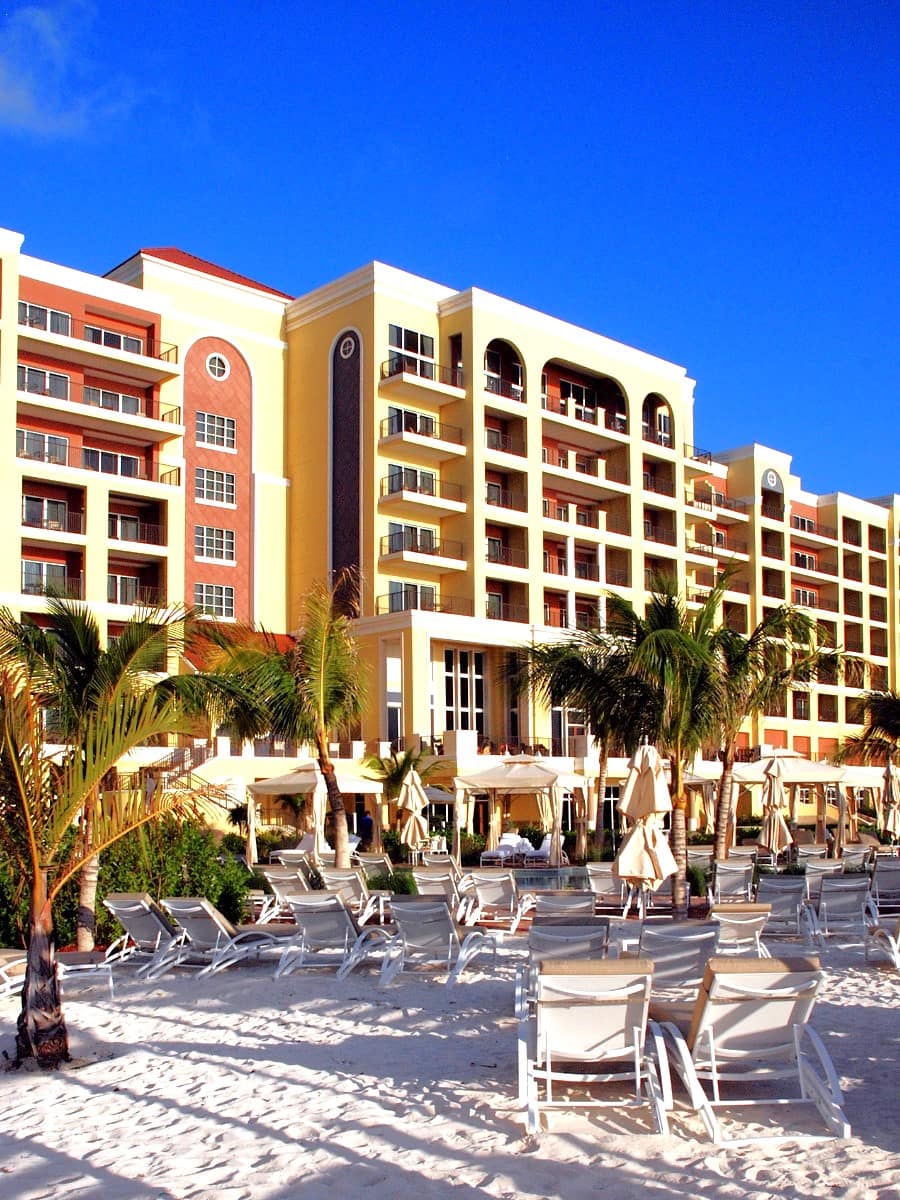
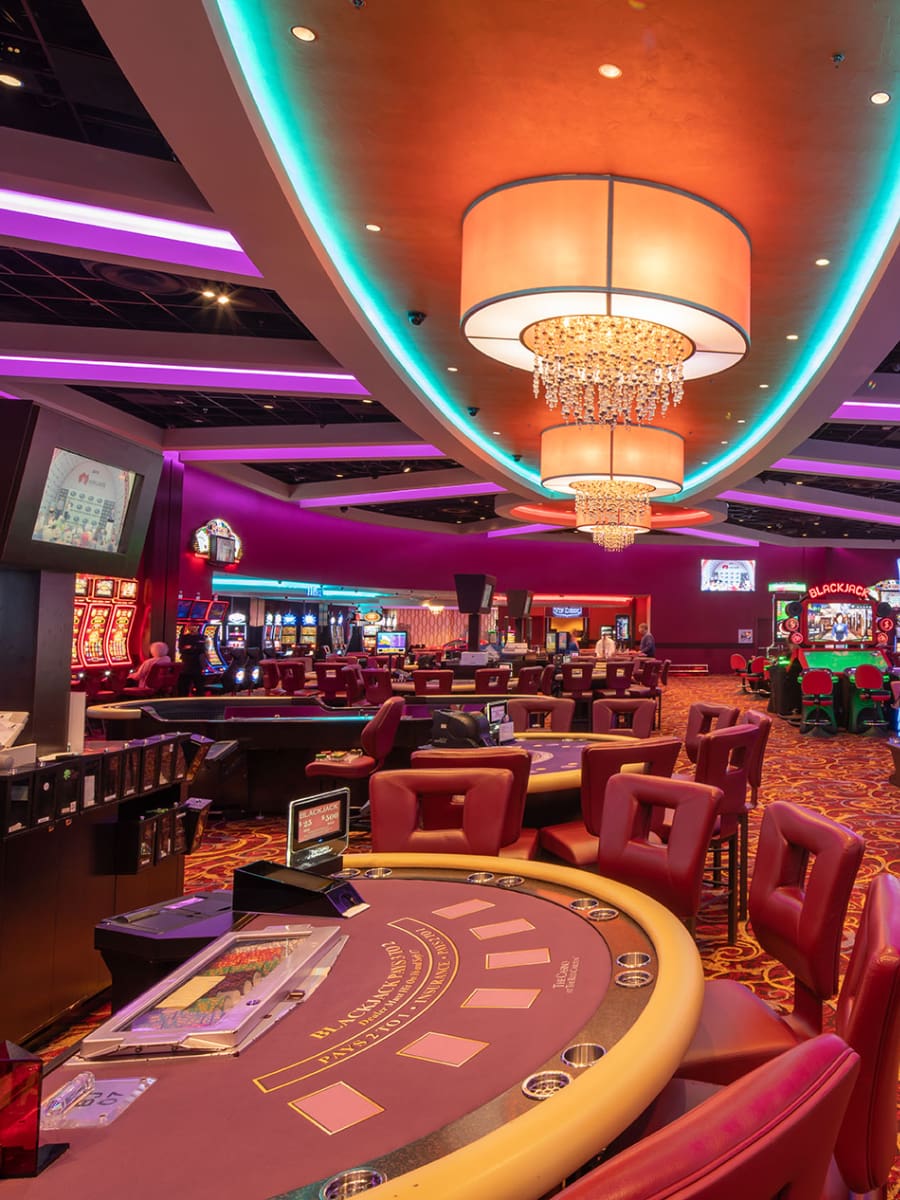


Popular Aruba casinos:
- Stellaris Casino (Palm Beach) – Open 24 hours
- Casino at the Ritz-Carlton (Palm Beach) – Elegant atmosphere
- Glitz Casino (Palm Beach) – Modern gaming floor
- Seaport Casino (Oranjestad) – Downtown location
- Crystal Casino (Renaissance) – Connected to shopping mall
Beginner-Friendly. What I appreciated most was how welcoming the casinos were to novices. At the Hyatt Regency’s casino, I joined a free gaming lesson where a dealer patiently explained blackjack basics. Table minimums start as low as 5 USD, making it accessible even for casual players wanting to try their luck.
Entertainment Plus. Casinos here aren’t just about gambling – they’re entertainment complexes. The Crystal Casino features live music several nights a week, while the Stellaris offers themed party nights. Most casinos serve complimentary drinks to active players, and some offer player’s club cards that earn you points toward meals, shows, and hotel stays.
14. Aruba Food Tours
Culinary Discovery. Exploring Aruba’s food scene through a guided tour opened my eyes to the island’s rich culinary heritage. The Aruba Food Tour through downtown Oranjestad (79 USD) included stops at seven local eateries, from street food vendors to upscale restaurants. Each bite told a story about the island’s diverse cultural influences.
Dishes you must try in Aruba:
- Keshi Yena (stuffed cheese with meat and spices)
- Pan Bati (sweet cornbread)
- Fresh catch of the day with Creole sauce
- Pastechi (filled pastry pockets)
- Dutch pancakes with local toppings
- Coconut rum cake
Hidden Gems. The tour led me to places I would never have discovered on my own, like Coco Plum, a tiny restaurant tucked away on a side street serving the most authentic Aruban home cooking. Their Keshi Yena (18 USD) – a traditional dish of spiced meat baked in a Gouda cheese shell – was the highlight of my culinary adventures.
Local Connections. Our guide Eduardo wasn’t just knowledgeable about food; he introduced us to chefs and restaurant owners who shared stories about their family recipes. At The Old Fisherman in Oranjestad, the owner demonstrated how they’ve prepared their famous fish soup (12 USD) using the same recipe for three generations.
⭐ Best Activities
- Fusion of the World Food Tour – Savor Aruba’s diverse culinary scene on this guided food tour that showcases the island’s international influences through tastings at multiple restaurants and food establishments.
15. Butterfly Farm Aruba
Winged Wonders. The Butterfly Farm near Palm Beach houses hundreds of exotic butterflies from around the world in a tropical garden paradise. Stepping inside the mesh enclosure, I was immediately surrounded by fluttering wings in every color imaginable. The guided tour (15 USD for adults, 7.50 USD for children) taught me fascinating facts about butterfly life cycles.
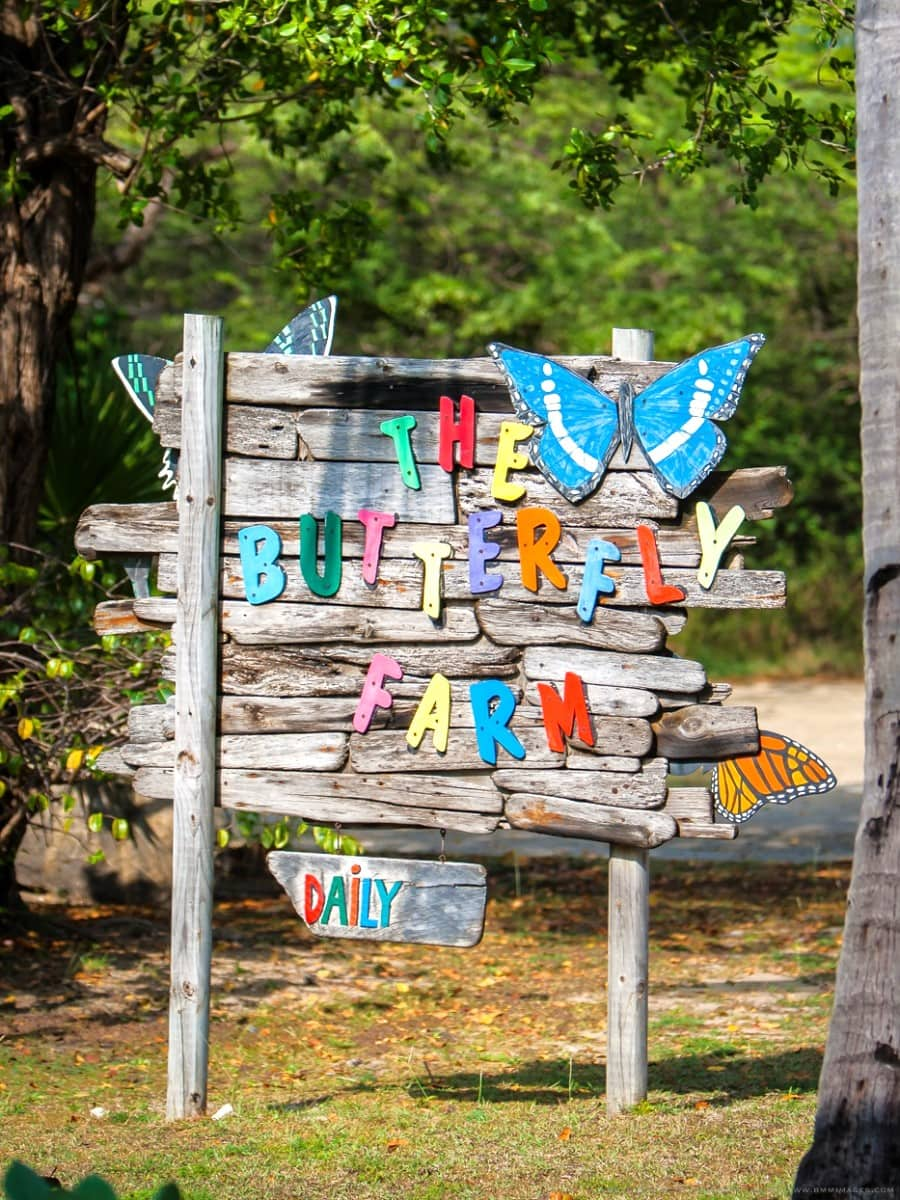
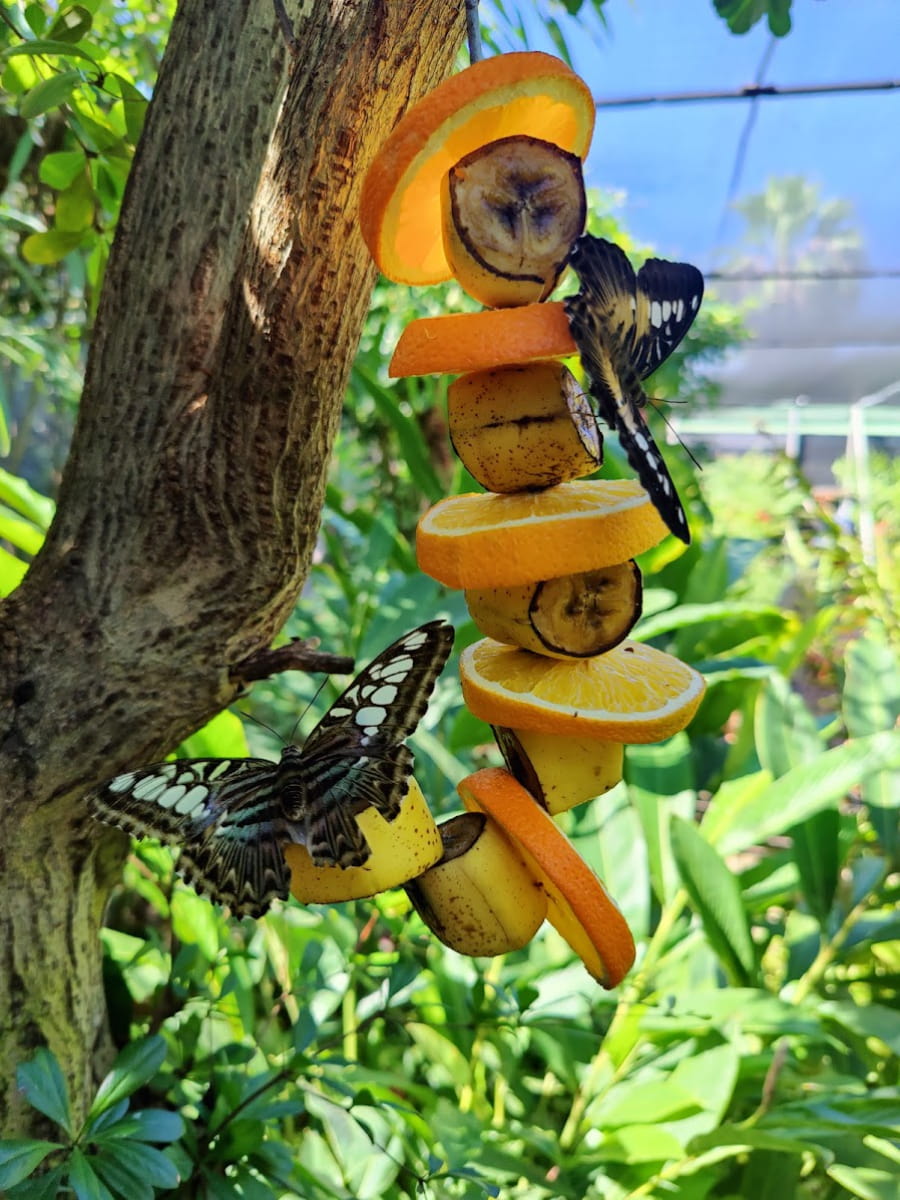
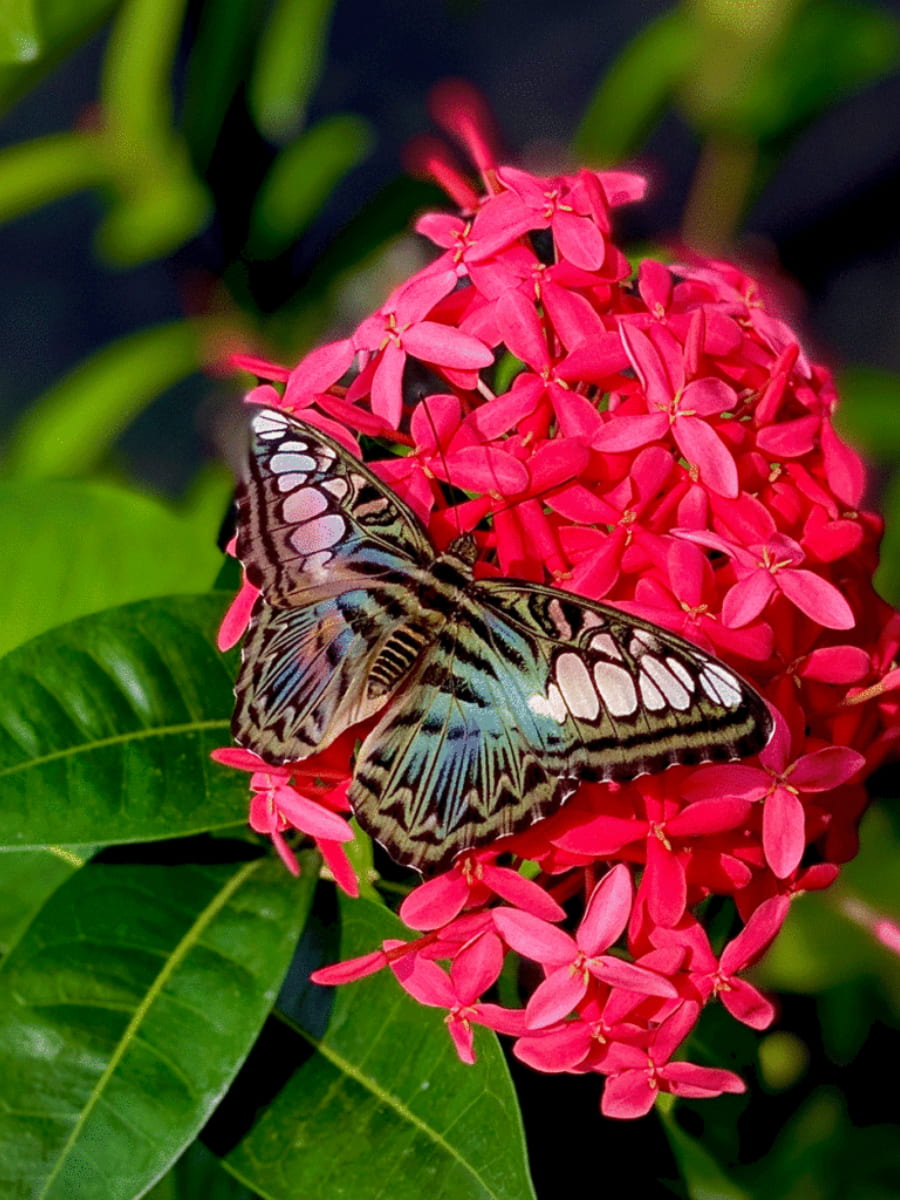

Butterfly species you might see:
- Blue Morpho (iridescent blue wings)
- Owl Butterfly (eye-like patterns)
- Postman Butterfly (bright red markings)
- Paper Kite (translucent white wings)
- Malachite (vibrant green coloration)
Life Cycle Display. What makes this attraction special is seeing every stage of butterfly development. The farm displays eggs, caterpillars, and chrysalises alongside information about each species’ unique characteristics. I was lucky enough to witness a butterfly emerging from its chrysalis – a magical moment that happens regularly throughout the day.
Photography Heaven. For nature photographers, this place is a dream. The butterflies are accustomed to visitors and often land on bright clothing or cameras. Morning visits (they open at 8:30 AM) offer the best experience as the butterflies are most active when temperatures are cooler. My tip: wear bright colors to attract these beautiful creatures.
Things to Do in Aruba with Kids
1. Donkey Sanctuary Aruba
Animal Rescue. The Donkey Sanctuary in Santa Lucia provides a safe haven for Aruba’s wild donkeys, which once roamed freely across the island. I spent a heartwarming morning meeting over 130 rescued donkeys in this non-profit sanctuary. Children’s faces lit up as friendly donkeys approached for gentle petting and feeding opportunities.
Interactive Experience. What makes this place special is how hands-on it is. The sanctuary provides visitors with apples and carrots (2 USD donation) to feed the donkeys. The staff taught us the proper way to offer food with flat palms and shared stories about each animal’s rescue. Many donkeys have names and distinct personalities that kids quickly connect with.
Activities for children at the sanctuary:
- Feeding the donkeys (supervised)
- Learning about donkey care and rescue
- Helping staff with simple chores
- Donkey “adoption” program (25 USD donation)
- Photo opportunities with baby donkeys (seasonal)
Educational Value. Beyond the fun interaction, the sanctuary offers valuable lessons about animal welfare and conservation. My guide explained how donkeys were brought to Aruba as work animals centuries ago but were abandoned when cars replaced them. The sanctuary’s educational center features informative displays about donkey history and behavior that fascinate visitors of all ages.
2. Aruba Water Park (De Palm Island)
Splash Zone. De Palm Island’s water park is a children’s paradise with six waterslides, splash pools, and water-based playground equipment. I watched kids of all ages squeal with delight as they raced down slides and dodged water cannons. The graduated depths of the pools make it suitable for different swimming abilities, with lifeguards stationed throughout.
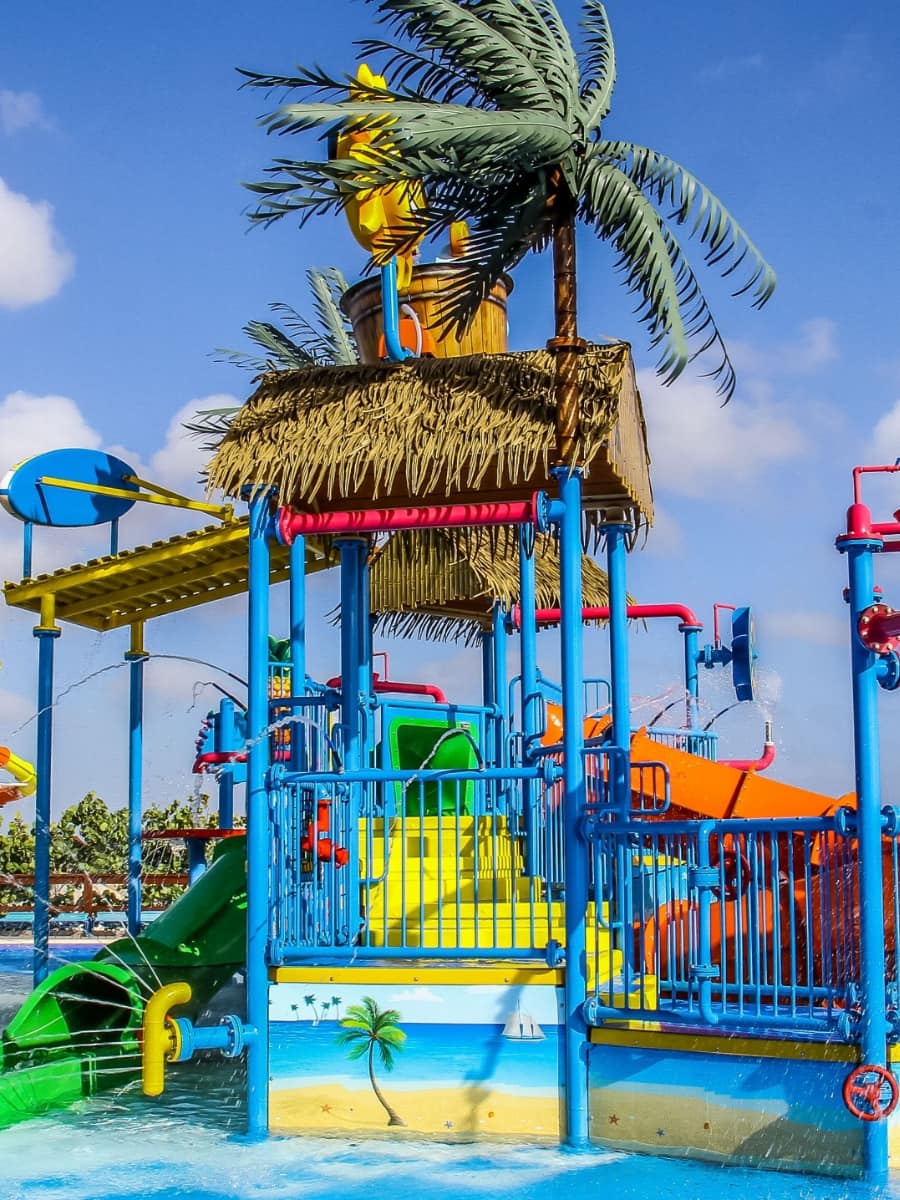
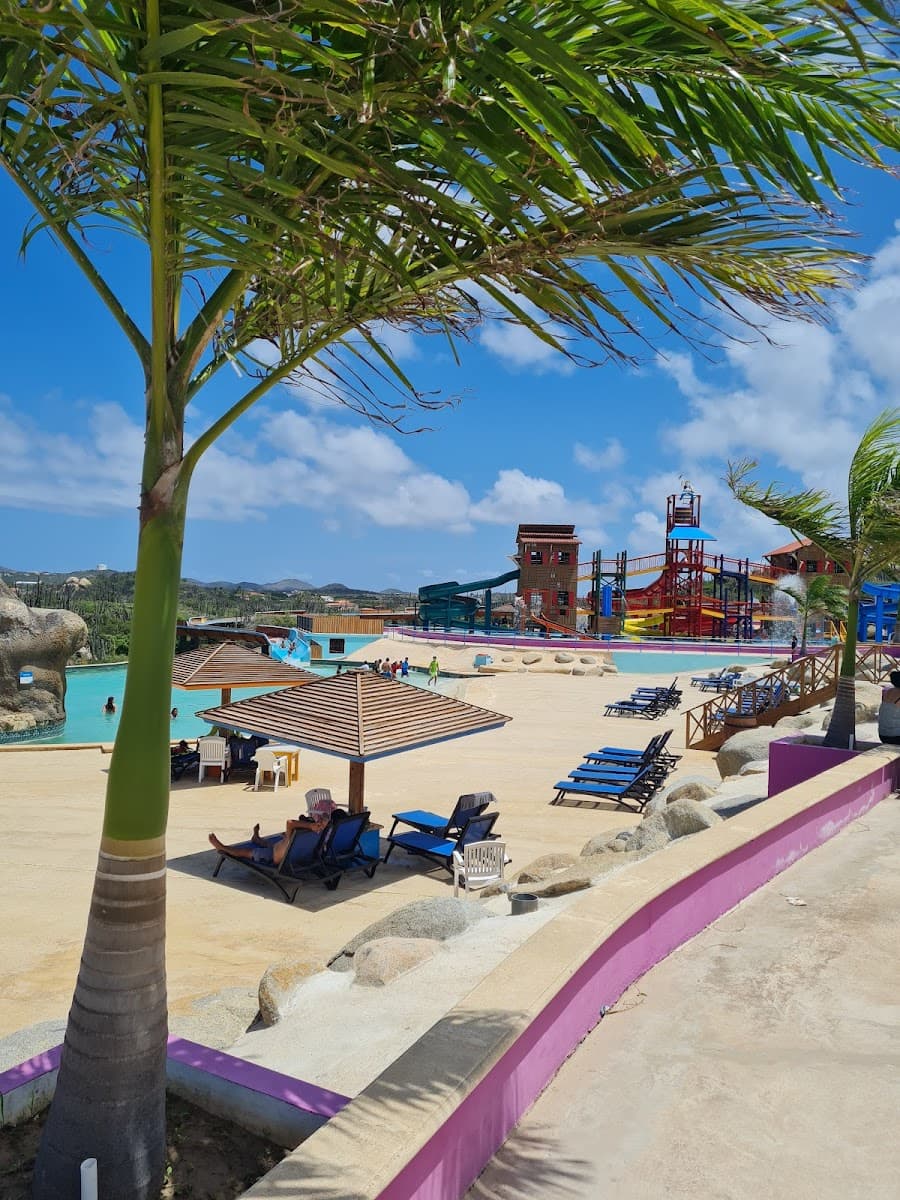
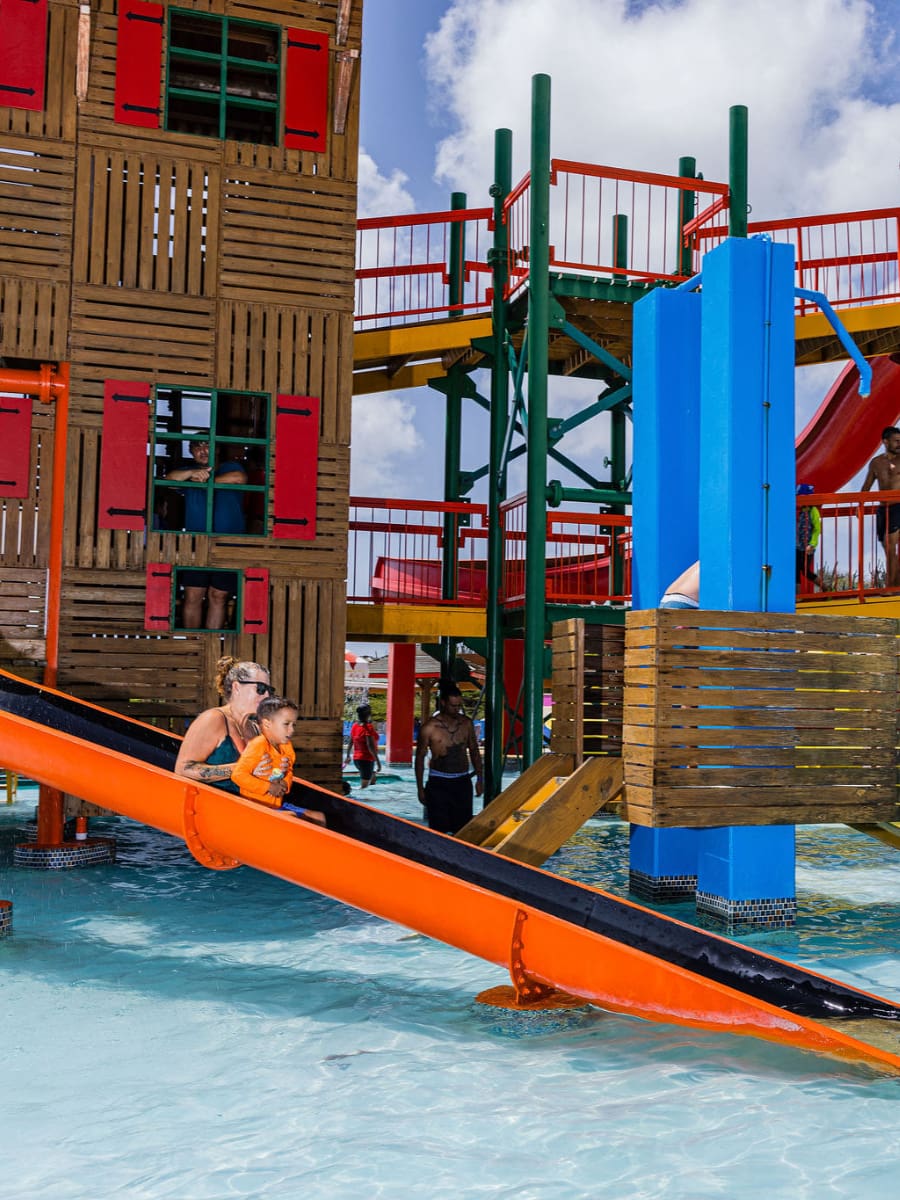
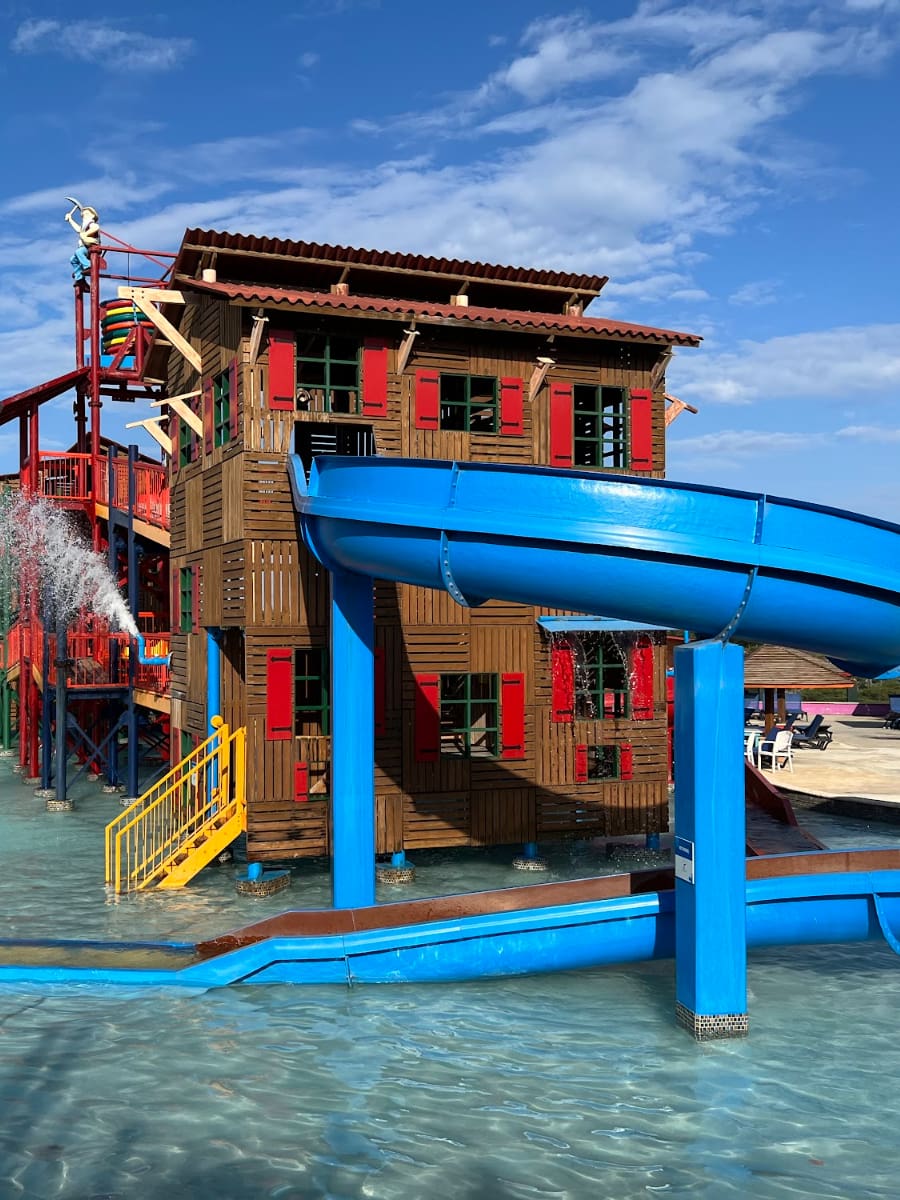
Water park features by age group:
| Age Group | Recommended Activities | Safety Features |
|---|---|---|
| Toddlers (2-4) | Shallow splash pool, mini slides | Zero-entry areas, parent seating |
| Young children (5-8) | Medium slides, water playground | Life vest stations, lifeguards |
| Older children (9-12) | Larger slides, climbing structures | Depth markers, safety rules |
| Teens (13+) | Speed slides, SNUBA, sea trek | Orientation sessions, buddy system |
Beyond Slides. What impressed me was the variety of activities beyond traditional water slides. The park features underwater helmet walking experiences (Sea Trek) suitable for children as young as 8, allowing them to explore the seafloor without swimming skills. The banana boat rides (included in admission) were another hit with the older kids.
All-Inclusive Convenience. Parents appreciate the all-inclusive nature of De Palm Island (115 USD adults, 89 USD children). Once you’re there, everything is covered – meals, drinks, snacks, and most activities. This eliminates the constant requests for purchases and allows families to relax and enjoy their day without worrying about additional costs.
⭐ Best Activities
- Meet the Animals of Aruba Tour – Discover Aruba’s wildlife on this family-friendly tour visiting animal sanctuaries and natural habitats where you can interact with and learn about the island’s diverse creatures.
3. Animal Shelter Visit
Furry Friends. The Aruba Animal Shelter (Fundacion Stimami Sterilisami) offers a unique opportunity for animal-loving families to make a difference during their vacation. I spent a morning volunteering at this no-kill shelter, where visitors can walk dogs along nearby beaches or simply provide much-needed socialization for cats and puppies.
Meaningful Experience. What makes this activity special is the genuine impact it has on both the animals and the children. The shelter staff explained how even short interactions benefit the animals’ socialization and adoption prospects. Kids learn compassion and responsibility while enjoying the unconditional love of grateful shelter pets.
How families can help:
- Dog walking program (minimum age 10)
- Cat socialization (all ages welcome)
- Donation of supplies from their wish list
- “Vacation foster” programs for select animals
- Spreading awareness through social media
Practical Information. The shelter welcomes visitors Monday through Saturday from 9 AM to 12 PM. No appointment is necessary for brief visits, though calling ahead (297-592-5079) is recommended for families wanting to participate in dog walking. There’s no fee, but donations are greatly appreciated – even small contributions of 5-10 USD help provide food and medical care.
4. Paddle Boarding
Gentle Adventure. Stand-up paddle boarding offers the perfect balance of excitement and accessibility for families with children. I tried this activity at Mangel Halto Beach, where the calm, shallow waters create ideal conditions for beginners. Kids as young as 8 can master the basics within minutes, building confidence while enjoying a new perspective of Aruba’s coastline.
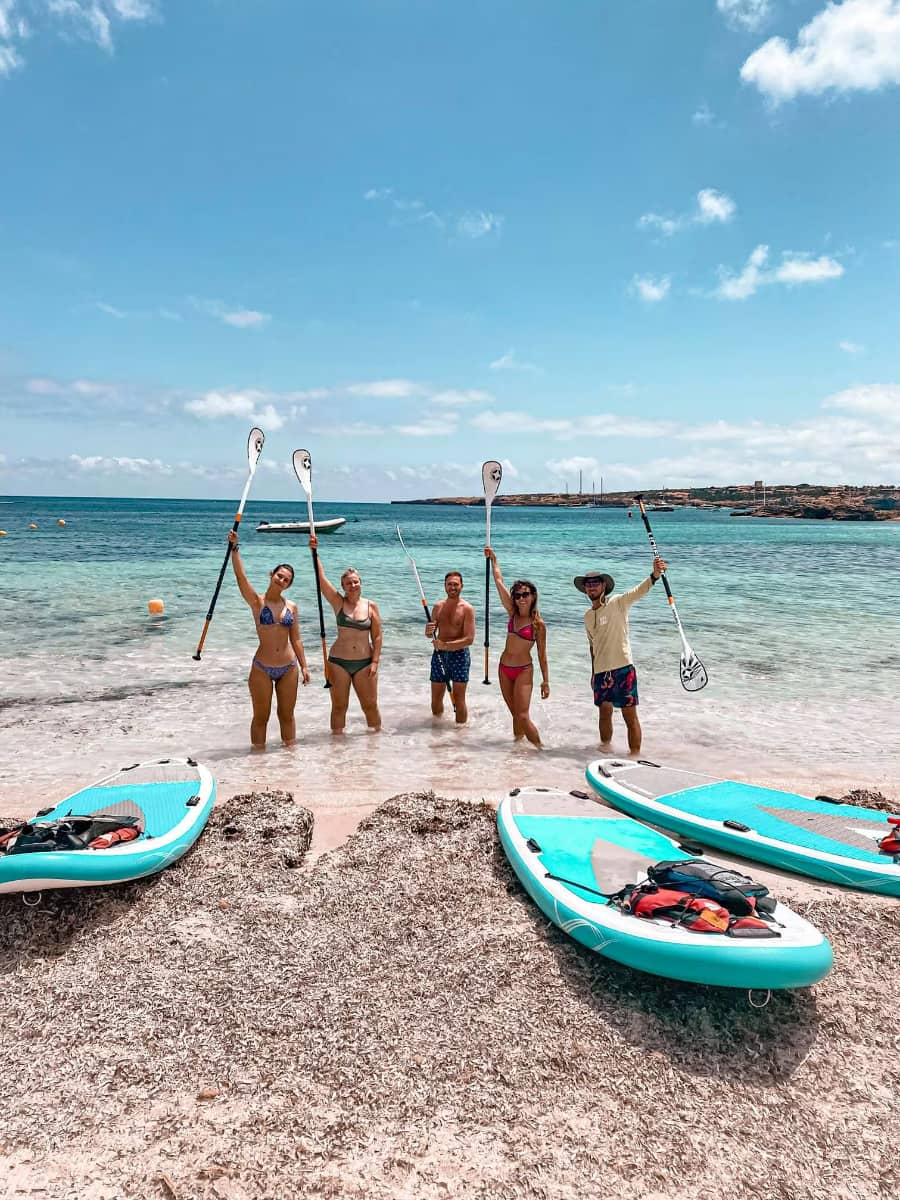


Paddle boarding locations for families:
- Mangel Halto Beach – Protected lagoon, clear water
- Palm Beach – Calm waters, rental shops nearby
- Baby Beach – Shallow lagoon, perfect for beginners
- Boca Catalina – Small cove with marine life
- Spanish Lagoon – Mangrove exploration for advanced paddlers
Wildlife Spotting. The transparent boards available from Vela Aruba (35 USD for 2 hours) allowed us to see tropical fish swimming directly beneath us. My daughter spotted stingrays, colorful parrotfish, and even a small sea turtle while paddling in the clear waters near Mangel Halto. The experience connected us with marine life in a non-intrusive way.
Family Bonding. What I loved most was seeing my children’s pride as they mastered this new skill. Instructors from Aruba Surf & Paddle School offer family lessons (65 USD per person) that focus on safety and basic techniques. They also organize guided eco-tours through mangrove areas where kids learn about Aruba’s coastal ecosystems while improving their paddling skills.
5. Snorkeling Lessons
Underwater Discovery. Introducing children to snorkeling opens up an entirely new world of exploration. I booked a beginner snorkeling lesson with JADS Dive Center at Mangel Halto Beach, where patient instructors taught proper mask clearing, breathing techniques, and marine life identification. Even my 7-year-old was confidently exploring the reef within an hour.
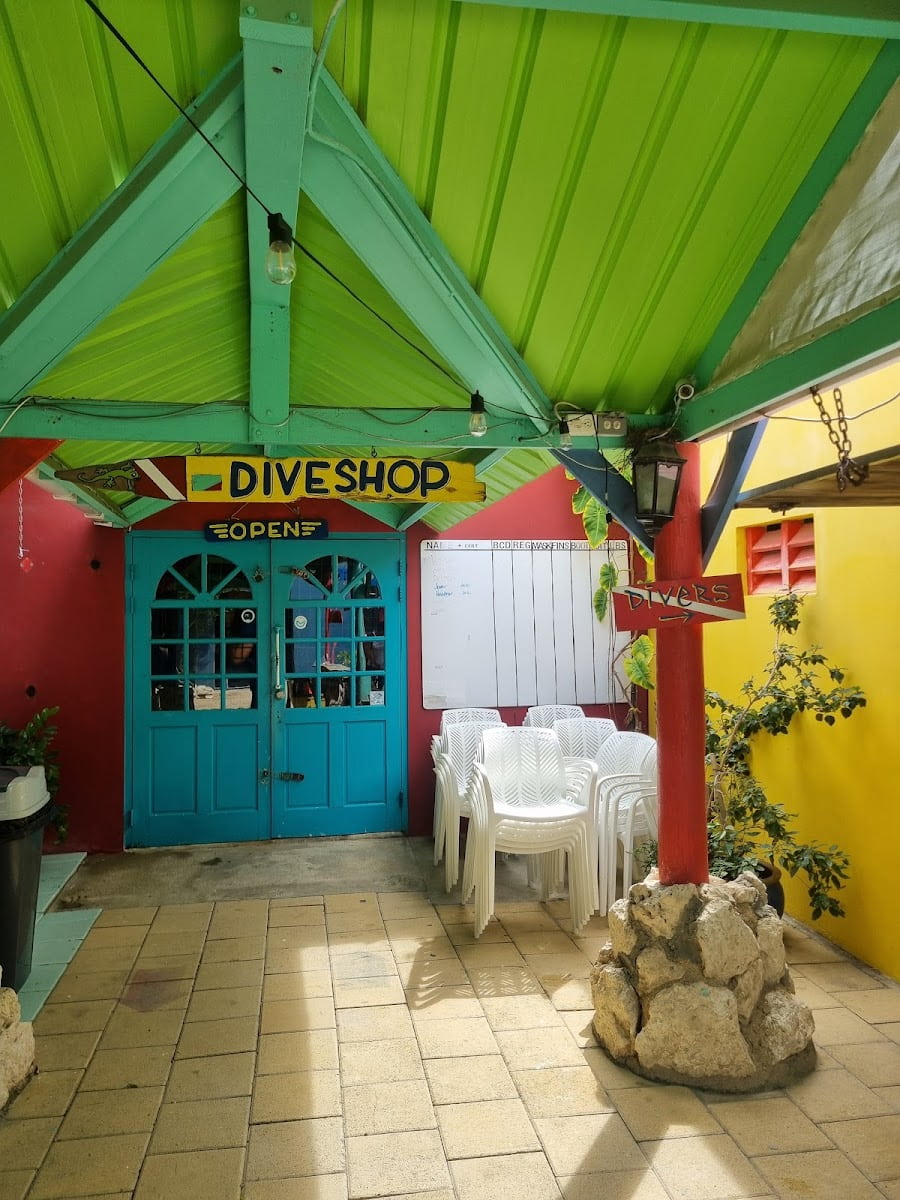
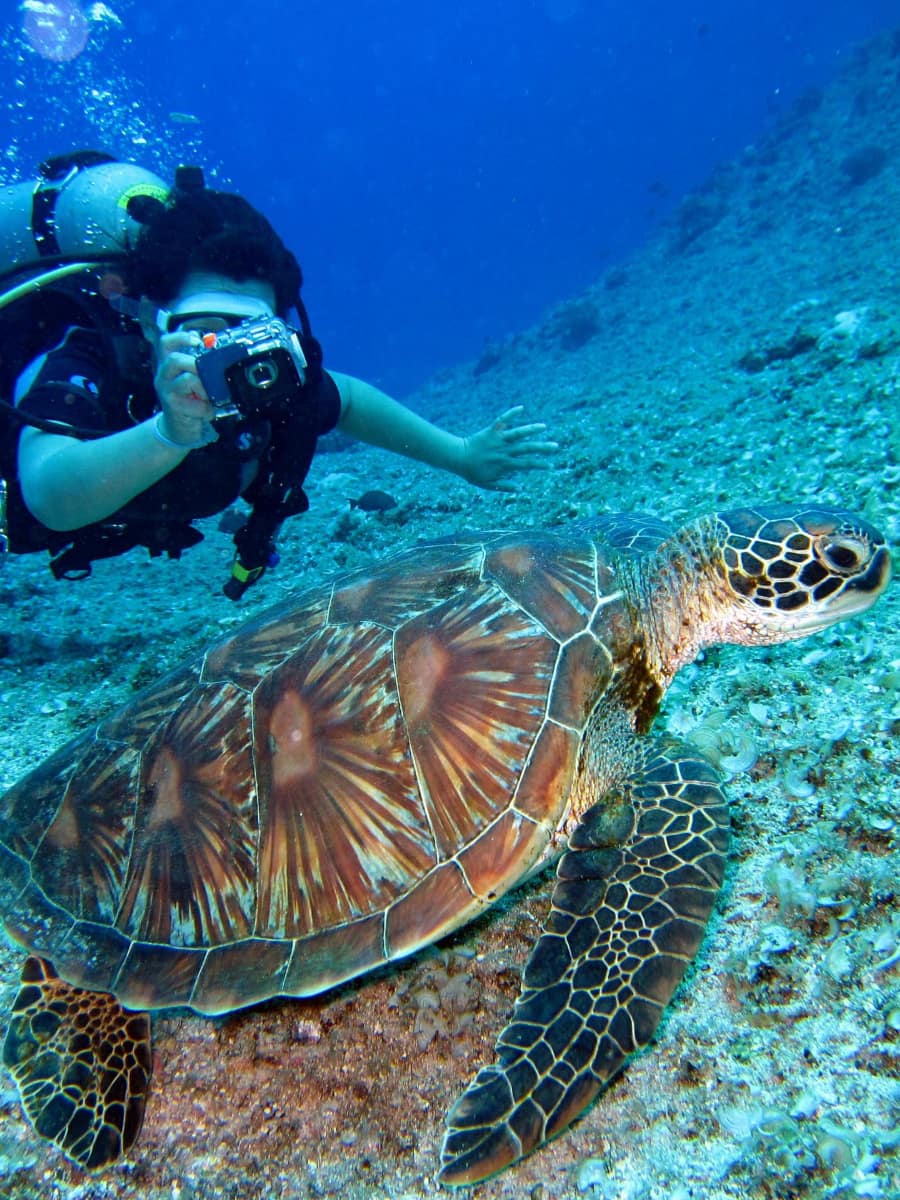
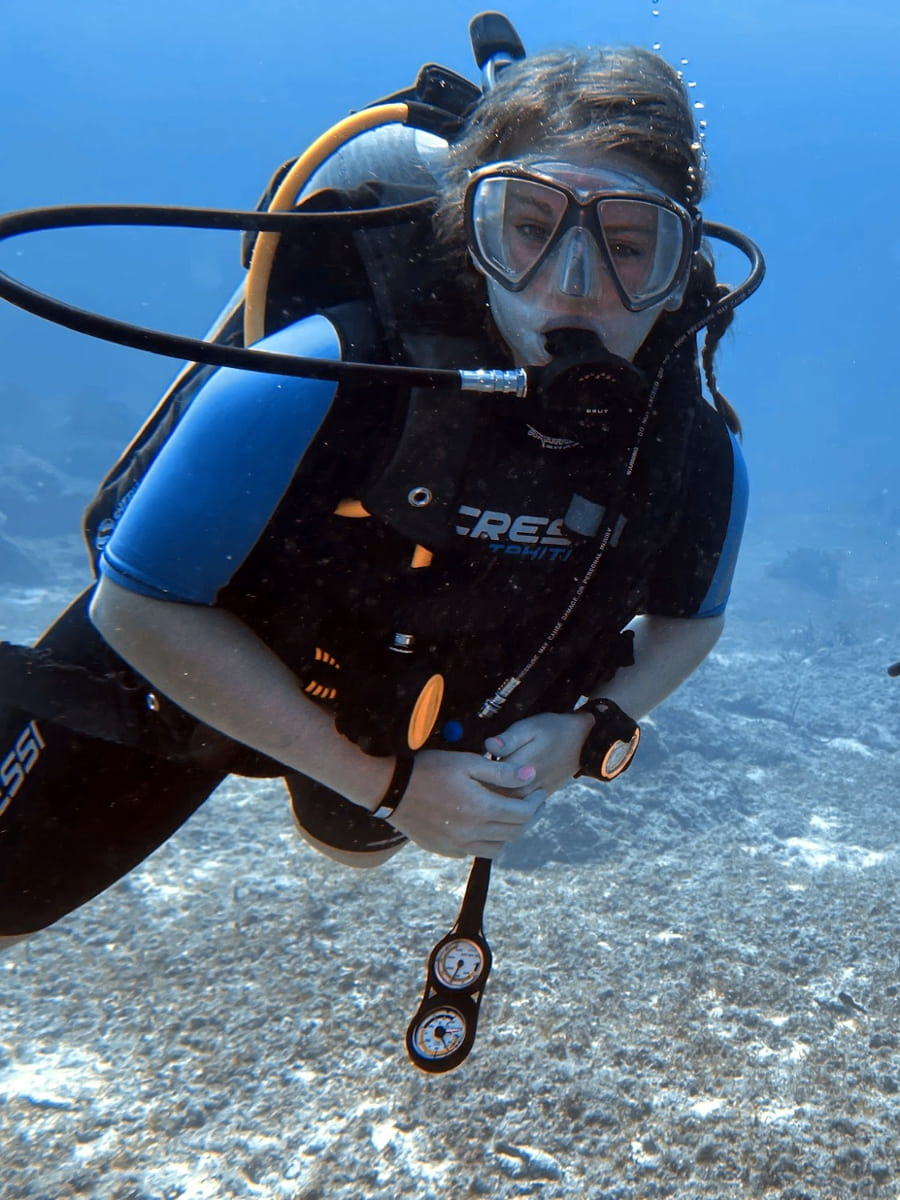
Safe Learning. What impressed me most was the emphasis on safety and comfort. The lesson began in very shallow water where kids could stand while practicing with their equipment. Instructors used floating devices and noodles to help children feel secure before gradually moving to deeper areas. The step-by-step approach built confidence naturally.
Beginner-friendly snorkeling spots:
- ✓ Boca Catalina – Shallow entry, abundant fish
- ✓ Baby Beach – Protected lagoon, minimal current
- ✓ Mangel Halto – Clear waters, small reef formations
- ✓ Arashi Beach – Gentle slope, good visibility
- ✗ Malmok Beach – Stronger currents, better for experienced snorkelers
- ✗ Bachelor’s Beach – Rocky entry, deeper water
Equipment Tips. Renting quality gear makes all the difference for beginners. Full-face snorkel masks (15 USD daily rental) eliminate the common problems of fogging and water entering the snorkel. For children, I recommend the Cressi Junior sets from Aruba Watersports Center, which are properly sized for smaller faces and provide better seals.
⭐ Best Activities
- Aruba Catamaran Cruise and Snorkeling Adventure – Sail along Aruba’s stunning coastline on a spacious catamaran before snorkeling at vibrant coral reefs teeming with tropical fish and marine life.
6. Family-Friendly Jeep Safari
Customized Adventure. ABC Tours offers a specialized family Jeep safari that balances excitement with child-friendly pacing. Unlike standard tours, these family excursions include more stops, gentler off-roading, and guides experienced with children. I was impressed by how our guide, Maria, engaged the kids with scavenger hunts and wildlife spotting games throughout the journey.
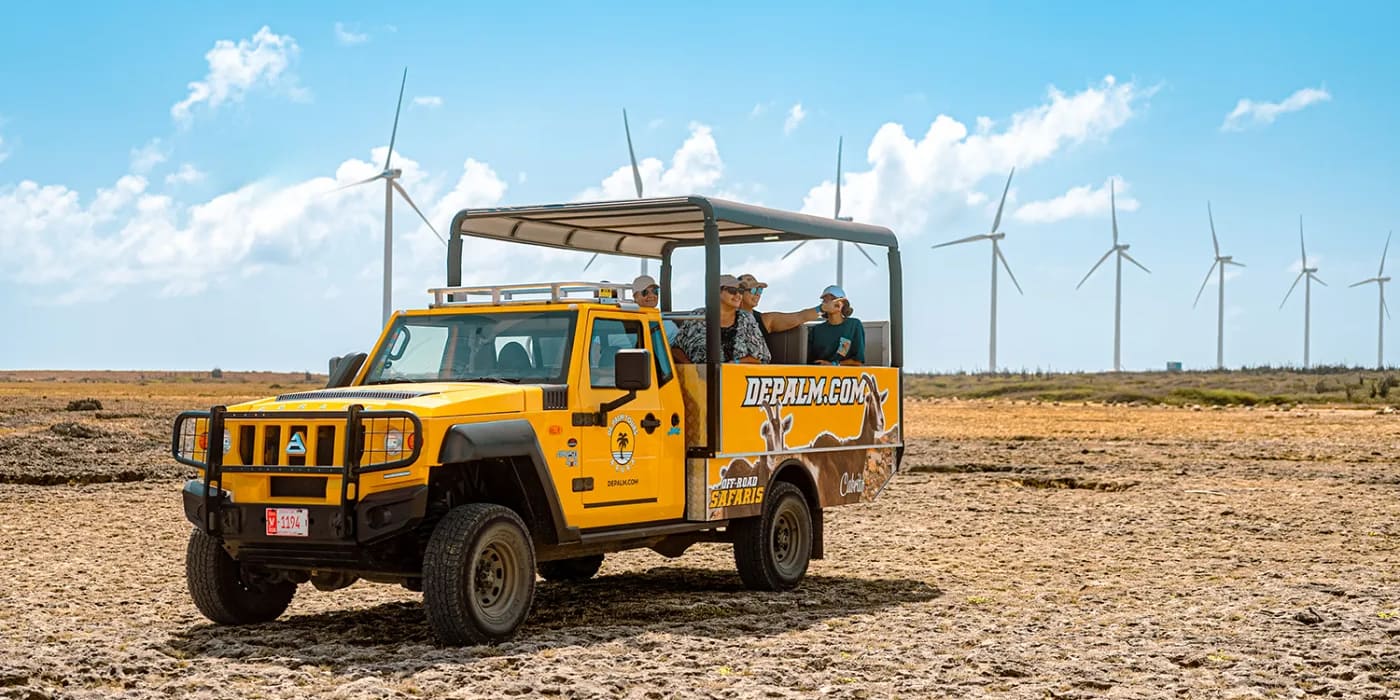
Natural Wonders. The tour took us to Aruba’s most accessible natural attractions, including the Casibari Rock Formations where children can safely climb the stone steps for panoramic views. At the Natural Bridge site, our guide shared age-appropriate stories about Aruba’s geology that fascinated both adults and children.
Family safari highlights:
- California Lighthouse (climb optional)
- Casibari Rock Formations (natural playground)
- Baby Natural Bridge (smaller than the collapsed original)
- Shallow natural pools for wading
- Wildlife spotting (lizards, birds, goats)
Comfort Considerations. What sets the family safari apart are thoughtful details like cushioned seats, frequent bathroom breaks, and a cooler stocked with kid-friendly drinks and snacks. The 4-hour tour (89 USD adults, 65 USD children) hits the sweet spot for family attention spans while still covering impressive ground across the island’s northern region.
Free Things to Do in Aruba
1. Eagle Beach (public access)
Award-Winning Beauty. Eagle Beach consistently ranks among the world’s best beaches – and amazingly, it’s completely free to visit. I spent several days enjoying its powdery white sand and crystal-clear waters without spending a dime. The wide shoreline means there’s always space to spread out, even during peak season.
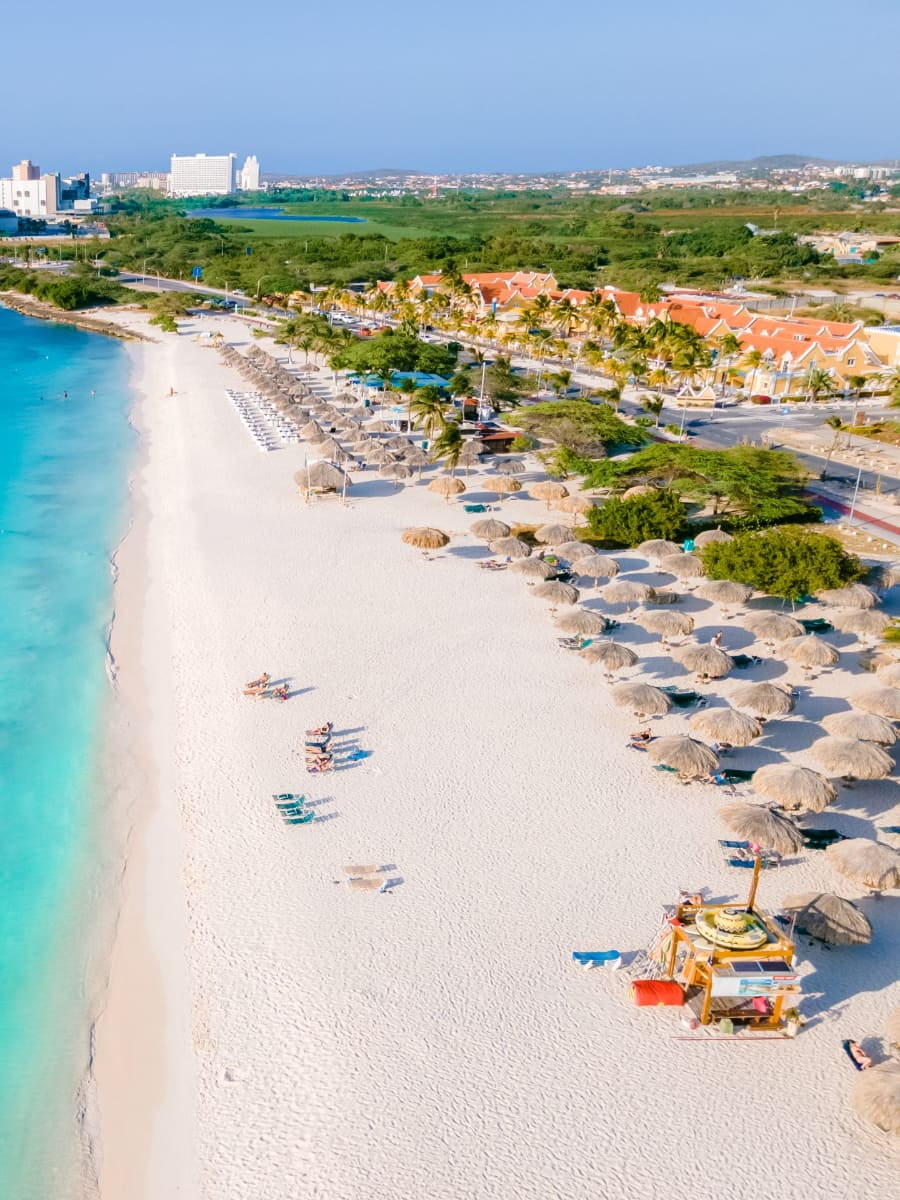
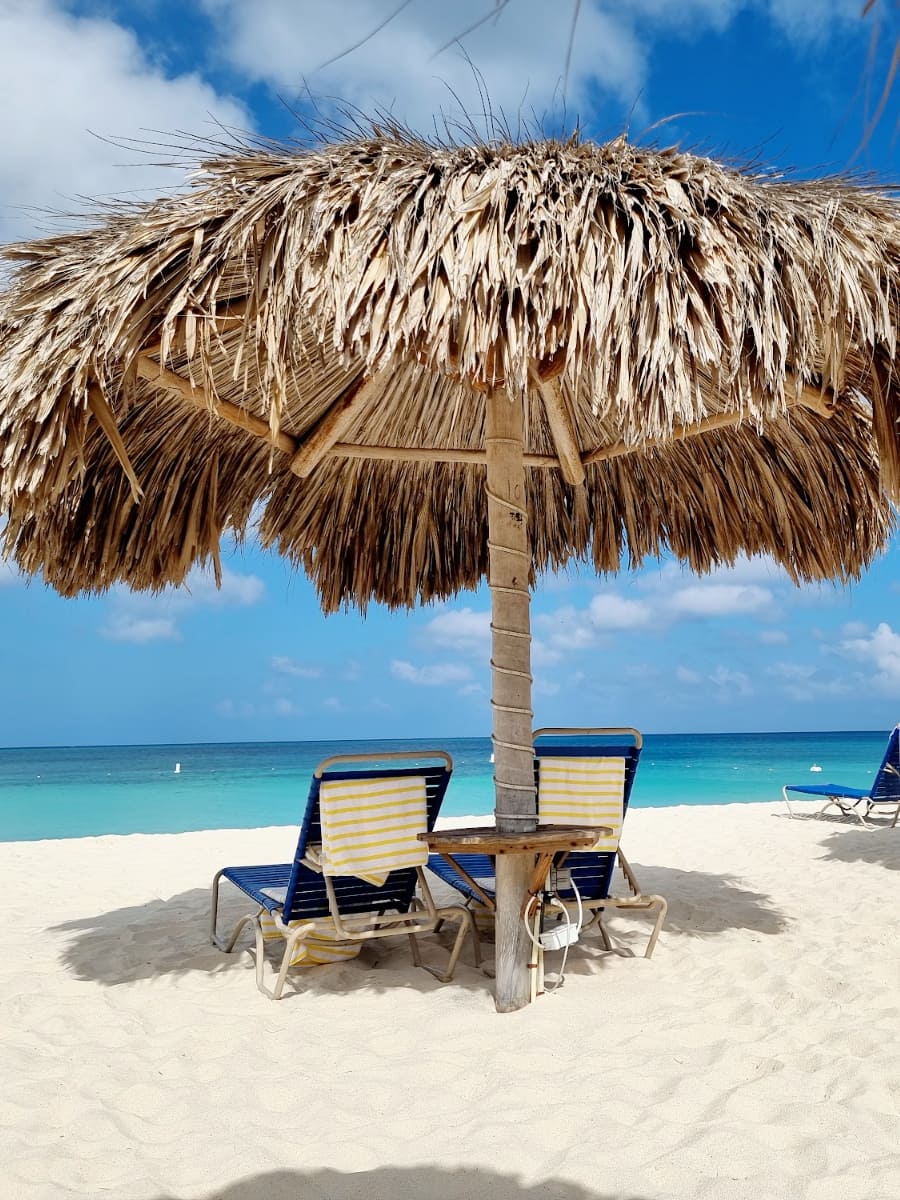
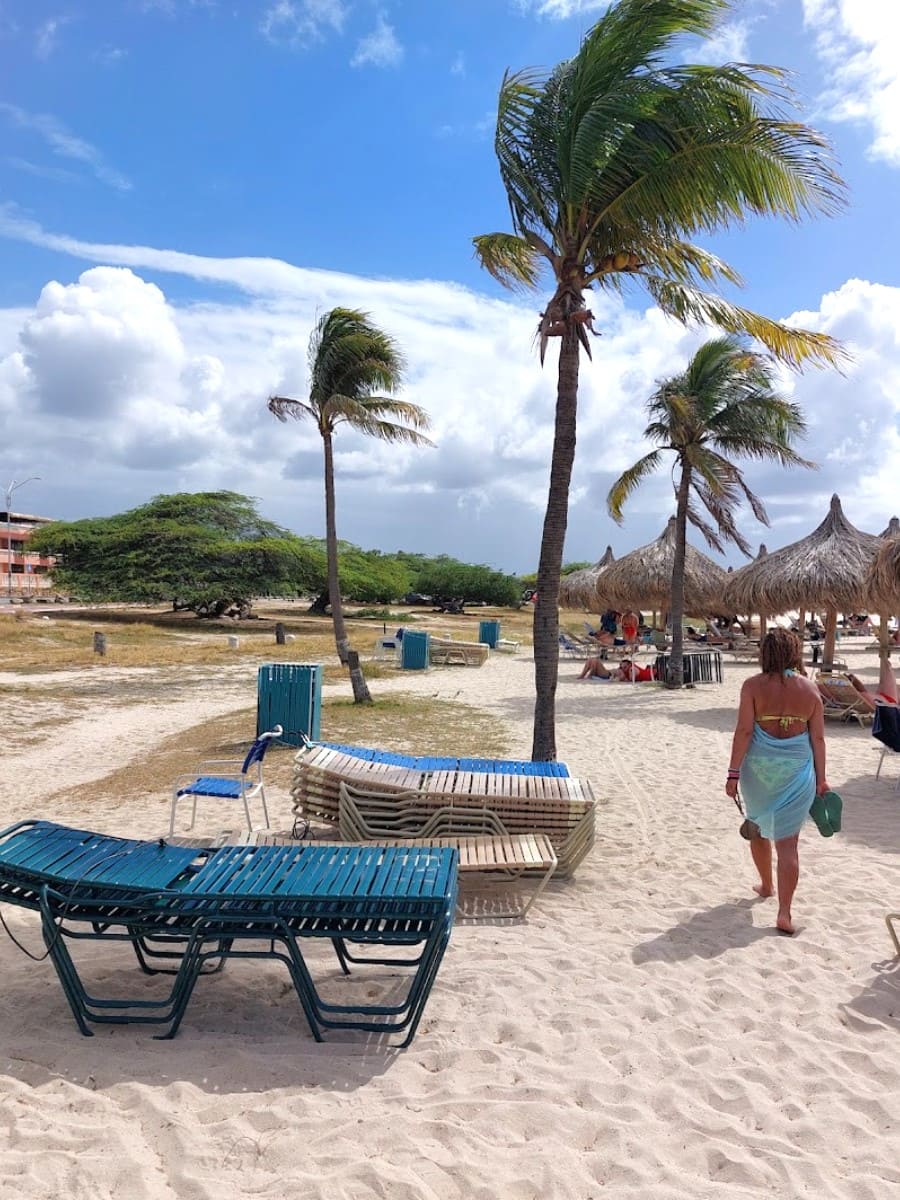
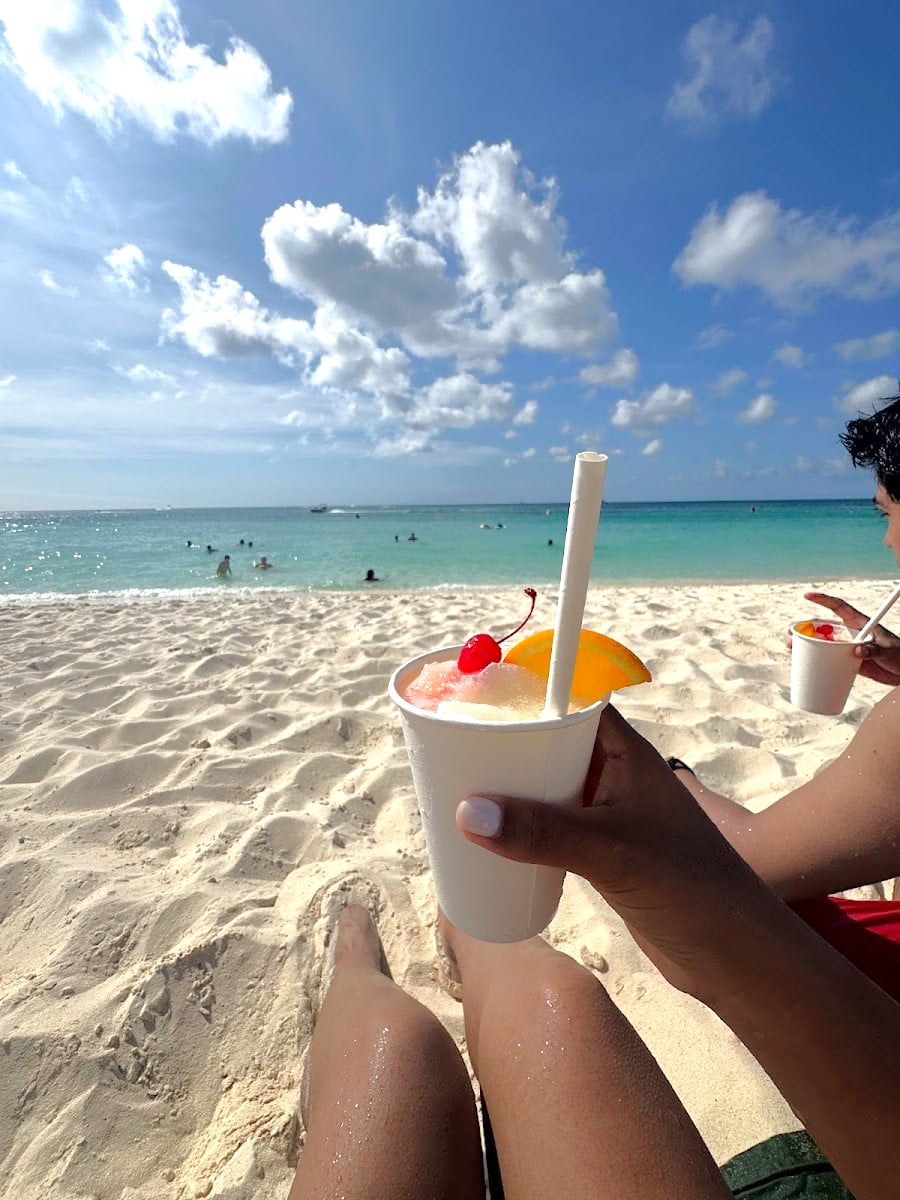
Perfect Swimming. What makes Eagle Beach special is its gentle slope and typically calm waters, ideal for swimmers of all abilities. The beach is marked with clear swimming zones separated from water sports areas, creating a safe environment for everyone. I found the water temperature perfect – refreshing but never cold.
Eagle Beach facilities (all free):
- Public parking areas
- Beach showers
- Shaded picnic areas
- Designated swimming zones
- Volleyball courts (bring your own ball)
- Walking/jogging paths
- Sunset viewing points
- Public restrooms
Local Tip. For the best experience, I arrived early (before 9 AM) to claim a spot under one of the iconic Divi Divi trees that provide natural shade. While chair rentals are available (around 15 USD for the day), many locals bring their own beach blankets and portable umbrellas. The beach is particularly magical at sunset when the sky explodes with color.
2. Watch Sunset at the Beach
Nature’s Show. Aruba’s position in the southern Caribbean creates spectacular sunsets that transform the sky into a canvas of orange, pink, and purple hues. I made it a nightly ritual to find a different beach for sunset viewing – a completely free activity that became one of my most cherished island memories.

Best Viewing Spots. While any western-facing beach offers sunset views, I found Eagle Beach provided the perfect combination of unobstructed horizon and convenient access. The wide shoreline allows plenty of space to find a private spot away from crowds, even during peak season.
Top sunset viewing locations:
- Eagle Beach – Wide open views, silhouettes of divi-divi trees
- Palm Beach – Lively atmosphere, boats on horizon
- Arashi Beach – California Lighthouse in distance
- Malmok Beach – Rocky outcroppings for foreground interest
- Surfside Beach – Local favorite, less crowded
Photography Tips. For the best sunset photos, I arrived about 30 minutes before the predicted sunset time (usually around 6:30 PM) to capture the changing light. The moments just after the sun dips below the horizon often produce the most dramatic colors. Silhouettes of Divi Divi trees, sailboats, or fellow beachgoers create interesting compositional elements.
3. Alto Vista Chapel
Spiritual Serenity. The Alto Vista Chapel, known as the “Pilgrim’s Church,” sits on a hilltop overlooking Aruba’s north coast. This small yellow chapel holds significant historical importance as the site of Aruba’s first Catholic church built in 1750. I found it to be a peaceful place for quiet reflection, regardless of religious beliefs.


Scenic Drive. The journey to Alto Vista is as rewarding as the destination. I followed the winding road lined with white crosses representing the Stations of the Cross. The desert landscape dotted with cacti and divi-divi trees creates a uniquely Aruban setting that feels worlds away from the busy resort areas.
What to experience at Alto Vista Chapel:
- Peaceful interior with simple wooden pews
- Stunning coastal views from the grounds
- Historical information displays
- Peace labyrinth for meditative walking
- Weekly Tuesday services (open to visitors)
- Candle lighting for personal intentions
Local Traditions. During my visit, I observed locals participating in the tradition of placing small stones on the stone wall surrounding the chapel. Each stone represents a prayer or wish. This simple practice connects visitors to generations of islanders who have sought solace at this special place for nearly three centuries.
4. Ayo Rock Formations
Ancient Wonder. The Ayo Rock Formations present a fascinating geological marvel that costs nothing to explore. These massive tonalite boulders seem almost deliberately arranged, creating cave-like spaces and climbing opportunities. I spent hours wandering through these ancient stones, marveling at how they’ve remained balanced for millions of years.
Historical Significance. What makes Ayo truly special are the petroglyphs – rock carvings created by indigenous Arawak people centuries ago. These simple drawings provide a tangible connection to Aruba’s original inhabitants. Information signs throughout the site explain the cultural and historical significance of these markings.
Tips for visiting Ayo Rock Formations:
- Visit early morning or late afternoon to avoid midday heat
- Wear closed-toe shoes with good grip for climbing
- Apply sunscreen liberally (no shade available)
- Bring plenty of water
- Download offline maps as cell service can be spotty
- Bring a wide-angle lens for dramatic photos
Natural Playground. Children and adults alike enjoy scrambling over the smaller boulders and discovering hidden passages between rocks. I followed unmarked but obvious paths to reach a high point offering panoramic views of the surrounding countryside. The formations create natural frames for stunning landscape photography.
5. Walk Oranjestad’s Colorful Streets
Architectural Charm. Exploring Oranjestad’s vibrant streets costs nothing yet offers rich cultural rewards. I spent a delightful morning wandering among the Dutch colonial buildings painted in Caribbean pastels. The blend of European design with tropical colors creates a uniquely Aruban aesthetic that’s perfect for photography and leisurely exploration.
Self-Guided Tour. Starting at the harbor where cruise ships dock, I created my own walking tour through the historic downtown. The compact size of Oranjestad makes it easy to cover the main highlights in 2-3 hours of casual strolling. Free maps are available at the tourist information center near the cruise terminal.
Oranjestad walking route highlights:
- Renaissance Marketplace (waterfront shops)
- Wilhelmina Park (royal statues and gardens)
- Fort Zoutman & Willem III Tower (exterior view)
- Plaza Daniel Leo (central square)
- Main Street shopping district
- Parliament Building (distinctive architecture)
- Protestant Church (historic landmark)
- Linear Park (waterfront promenade)
Local Interaction. What I enjoyed most was chatting with shopkeepers and residents along the way. Unlike the resort areas, downtown offers authentic glimpses of local life. I discovered a small bakery where locals line up for fresh pan bati (cornbread) each morning – a delicious and inexpensive taste of Aruban cuisine.
6. Local Markets
Cultural Immersion. Aruba’s local markets offer free entertainment and cultural insights even if you don’t buy anything. The Marshe di Cunucu (Countryside Market) held on the first Sunday of each month at Plaza Daniel Leo showcases local farmers, artisans, and food vendors in a festive atmosphere with live music and demonstrations.
Artisan Treasures. I was fascinated by the craftsmanship displayed at the Cosecha Creative Center in downtown Oranjestad. This artisan marketplace features local creators working with traditional techniques and materials. Watching artists create jewelry from local seeds, weave baskets from palm fronds, or paint scenes of Aruban landscapes provided a deeper appreciation of the island’s creative heritage.
Market schedule in Aruba:
| Market | Location | Days | Hours | Specialties |
|---|---|---|---|---|
| Marshe di Cunucu | Plaza Daniel Leo | 1st Sunday monthly | 9am-2pm | Local produce, crafts |
| Aruba Art Fair | San Nicolas | Annual (November) | All day | Street art, performances |
| Local Craft Market | Cruise Terminal | Cruise ship days | 9am-5pm | Souvenirs, handicrafts |
| Santa Cruz Market | Santa Cruz | Last Saturday monthly | 8am-2pm | Food, community event |
| Fisherman’s Market | Savaneta | Daily (early) | 6am-10am | Fresh seafood |
People Watching. Markets provide excellent opportunities to observe local life and interactions. I spent an entertaining morning at the fisherman’s market in Savaneta, watching the animated negotiations between fishermen and restaurant buyers. Though I didn’t purchase anything, the lively atmosphere and glimpse into daily Aruban commerce was well worth the visit.
7. Self-Guided Art Tour
Street Gallery. San Nicolas, Aruba’s “Sunrise City,” has transformed into an open-air art gallery through the Aruba Art Fair initiative. I discovered dozens of vibrant murals painted by international and local artists throughout this southern town. Following the self-guided mural route costs nothing yet provides a fascinating glimpse into Aruba’s contemporary cultural scene.

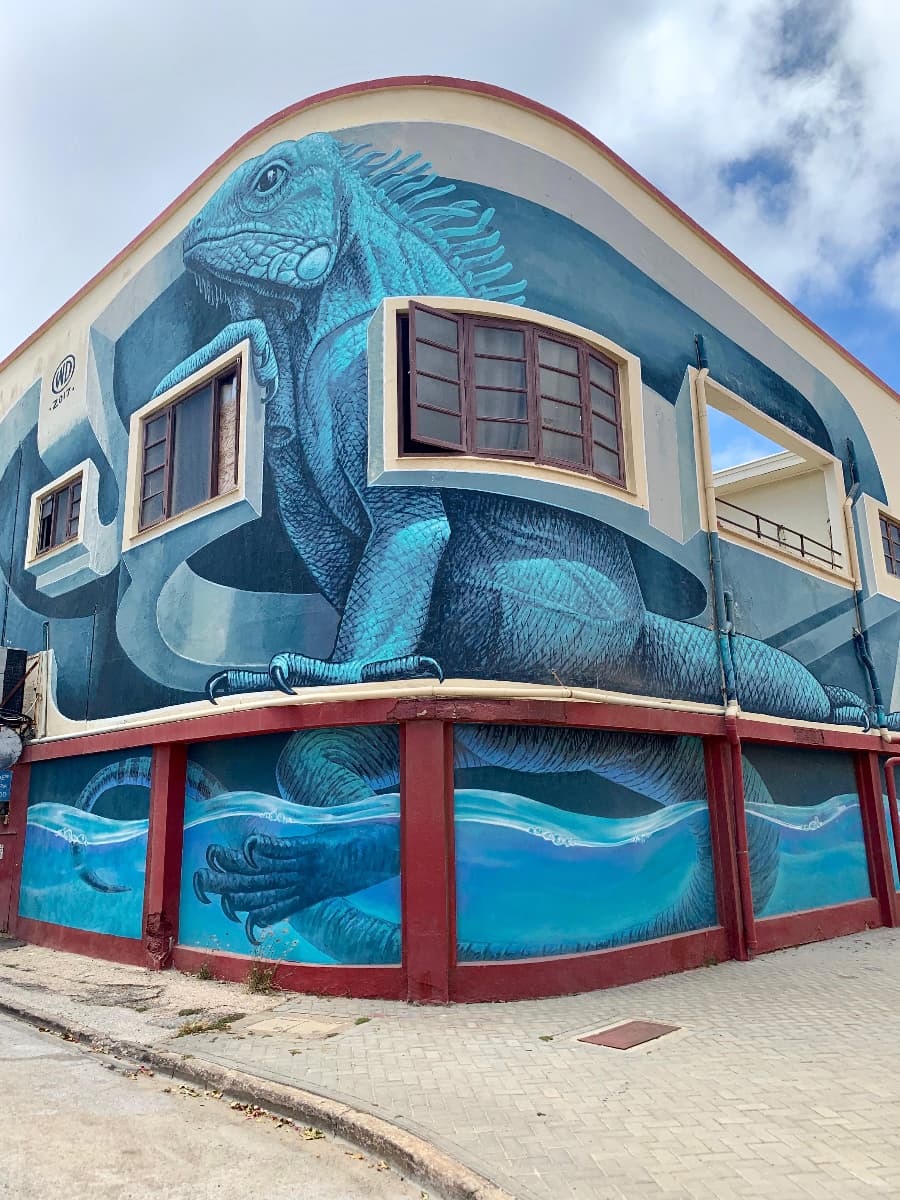

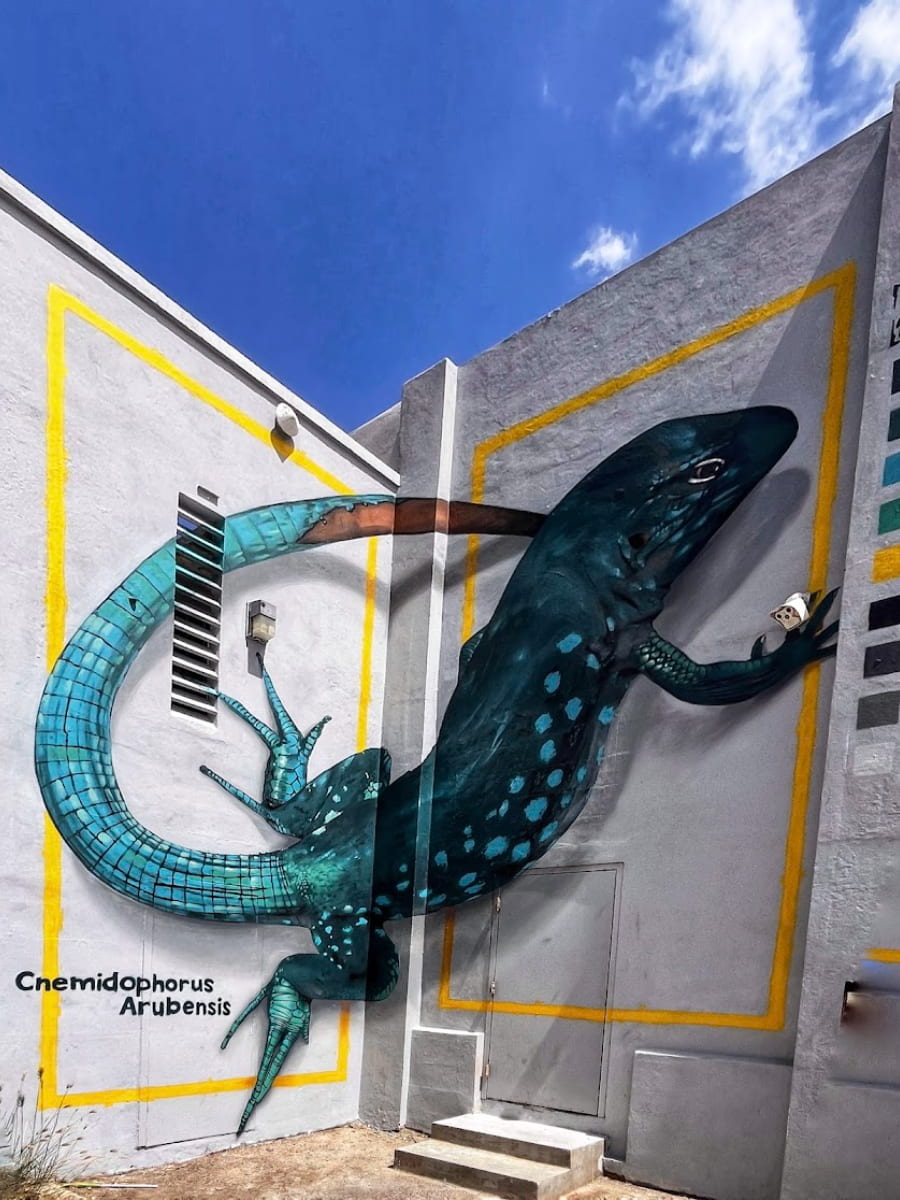
Creative Renaissance. What makes this experience special is the story behind it – San Nicolas was once a thriving oil refinery town that fell into decline when the refinery scaled back operations. The art movement has breathed new life into the area, with each mural reflecting aspects of Aruban heritage, natural beauty, or social themes.
Must-see murals:
- “Uniting Cultures” by Isidora Paz López (Main Street)
- “The Fisherman” by Dopie (near water tower)
- “One Happy Island” by Chemis (B. v/d Veen Zeppenfeldtstraat)
- “Iguana” by Bordalo II (made from recycled materials)
- “Aruban Girl” by Garrick Marchena (near craft market)
- “Sea Turtle” by Edjean Segebre (waterfront)
8. Hiking Trails in Arikok National Park (some trails)
Natural Exploration. While Arikok National Park has an entry fee (11 USD), several hiking trails around its perimeter are accessible without charge. I discovered the Miralamar Trail, which begins outside the official park boundaries but offers similar dramatic landscapes of volcanic formations and coastal views. This moderate 2-mile loop took about an hour to complete.
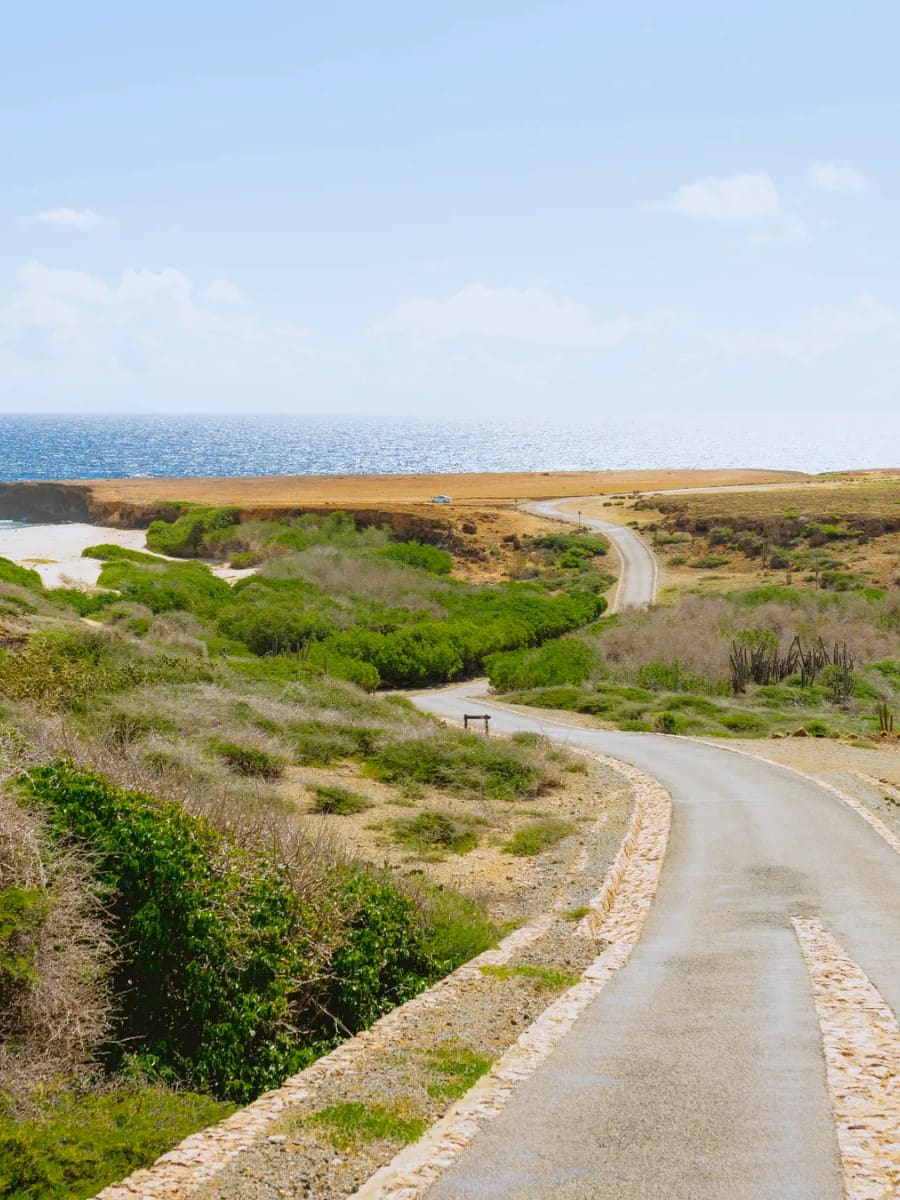
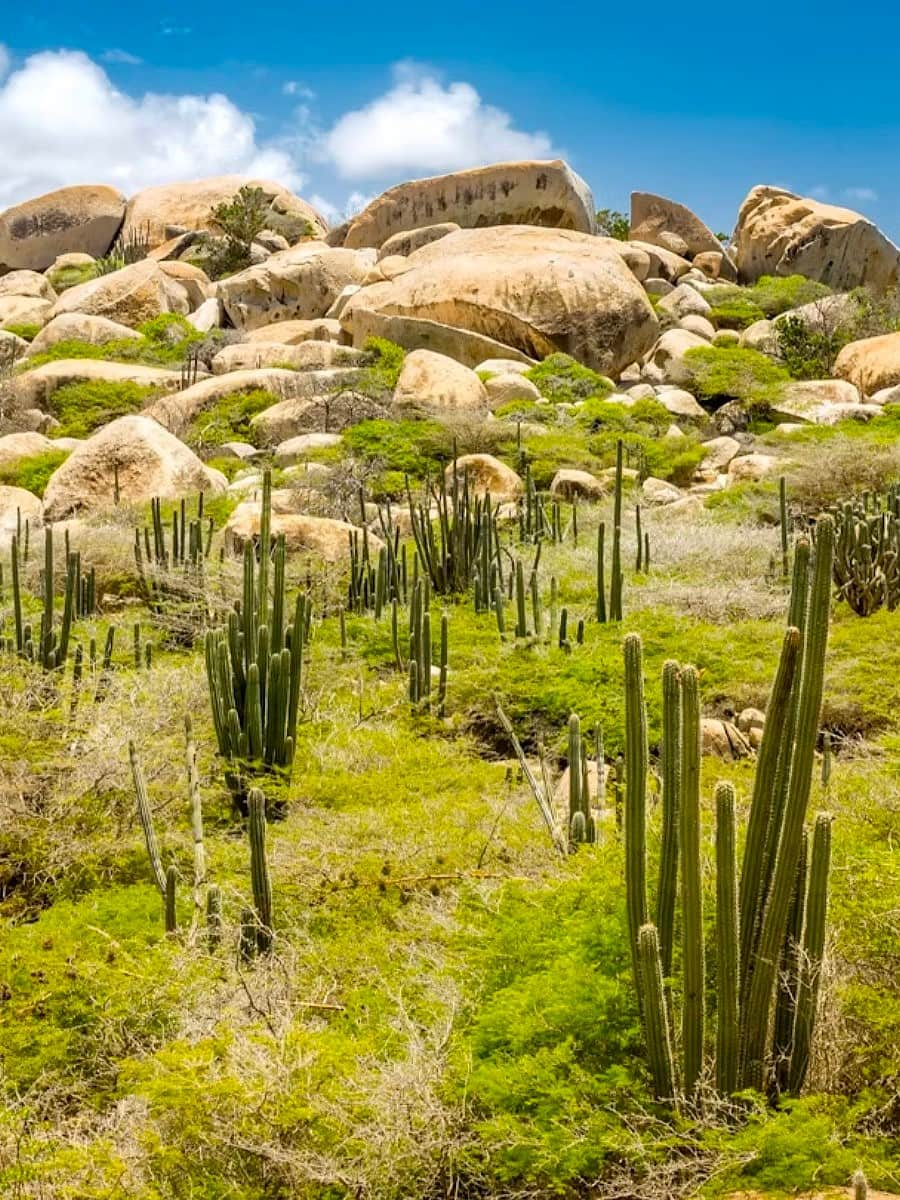
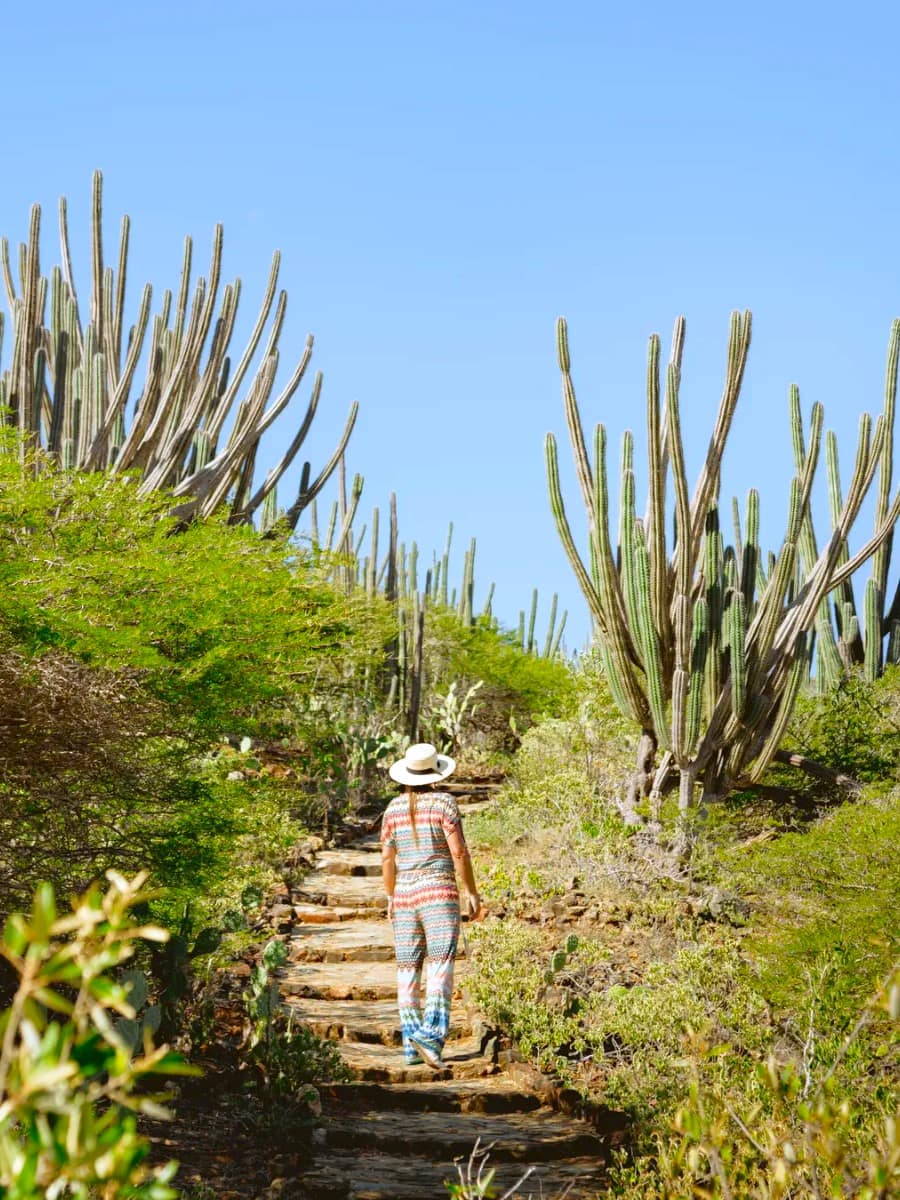
Coastal Pathways. Another free option is the coastal trail that runs from Dos Playa to Boca Prins along the park’s eastern edge. This rugged path follows dramatic limestone cliffs with crashing waves below. Though challenging in spots, the reward is accessing secluded beaches and breathtaking viewpoints without paying park admission.
Free hiking options near Arikok:
- ✓ Miralamar Trail (northern perimeter)
- ✓ Dos Playa to Boca Prins coastal path
- ✓ Jamanota Hill approach trail
- ✓ Spanish Lagoon mangrove walk
- ✓ Frenchman’s Pass historical trail
- ✗ Conchi Natural Pool trail (requires park entry)
- ✗ Fontein Cave trail (requires park entry)
Wildlife Viewing. Even on the free perimeter trails, I encountered plenty of Aruba’s unique wildlife. The early morning hours offered sightings of the Aruban whiptail lizard, burrowing owls, and tropical mockingbirds. Bringing binoculars enhanced the experience without adding any cost to my adventure.
Seasonal Activities
Christmas in Aruba
Tropical Holiday. Experiencing Christmas in Aruba offers a delightful twist on traditional celebrations. I was charmed by the blend of familiar holiday elements with Caribbean flair. Downtown Oranjestad transforms with thousands of twinkling lights, while palm trees wrapped in colorful decorations replace the typical pine trees of colder climates.
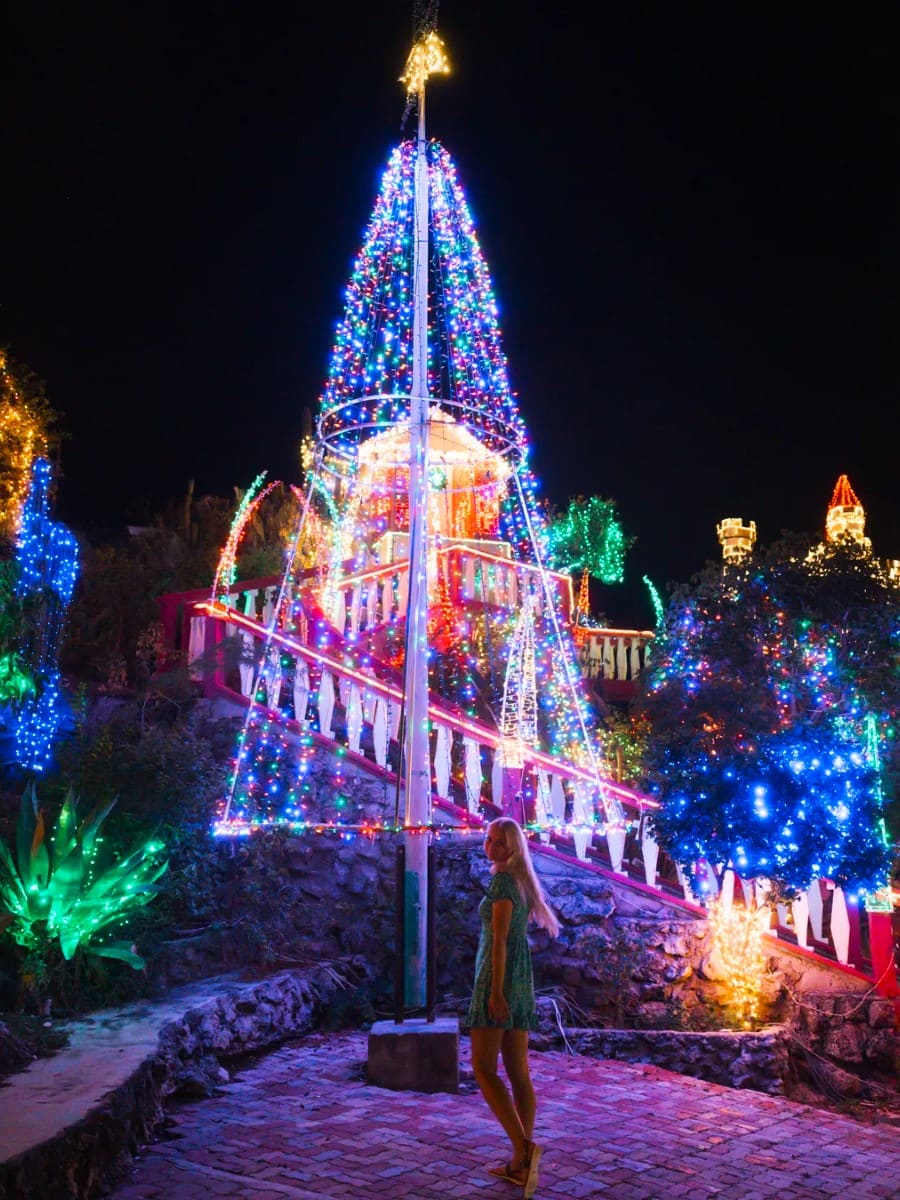

Gaita Music. What makes an Aruban Christmas unique is the festive gaita music that fills the air. This Venezuelan-influenced holiday music features fast-paced rhythms, distinctive drums, and Spanish lyrics. I caught several free gaita performances at Renaissance Marketplace throughout December, where locals and tourists gathered to enjoy the festive atmosphere.
Aruba Christmas traditions:
- Sinterklaas arrival by boat (December 5)
- Dande music groups visiting homes (December 31)
- Midnight fireworks on New Year’s Eve
- Ayaca (tamale-like dish) as holiday food
- Beach bonfires on Christmas Eve
- “Pagara” firecrackers to chase away bad spirits
Festive Events. The highlight of my holiday visit was the annual Torch Parade (December 15) in San Nicolas, where hundreds of participants carry flaming torches through the streets while dancing to live music. The parade culminates in Plaza Daniel Leo with performances and food stalls selling traditional holiday treats like pan de jamon (ham bread) and ponche crema (eggnog).
Aruba Carnival (January–February)
Island Celebration. Aruba’s Carnival season spans several weeks from early January through February, culminating just before Ash Wednesday. I was blown away by the scale and energy of this cultural celebration that takes over the entire island. The Grand Parade in Oranjestad features elaborate floats, thousands of costumed participants, and non-stop music.
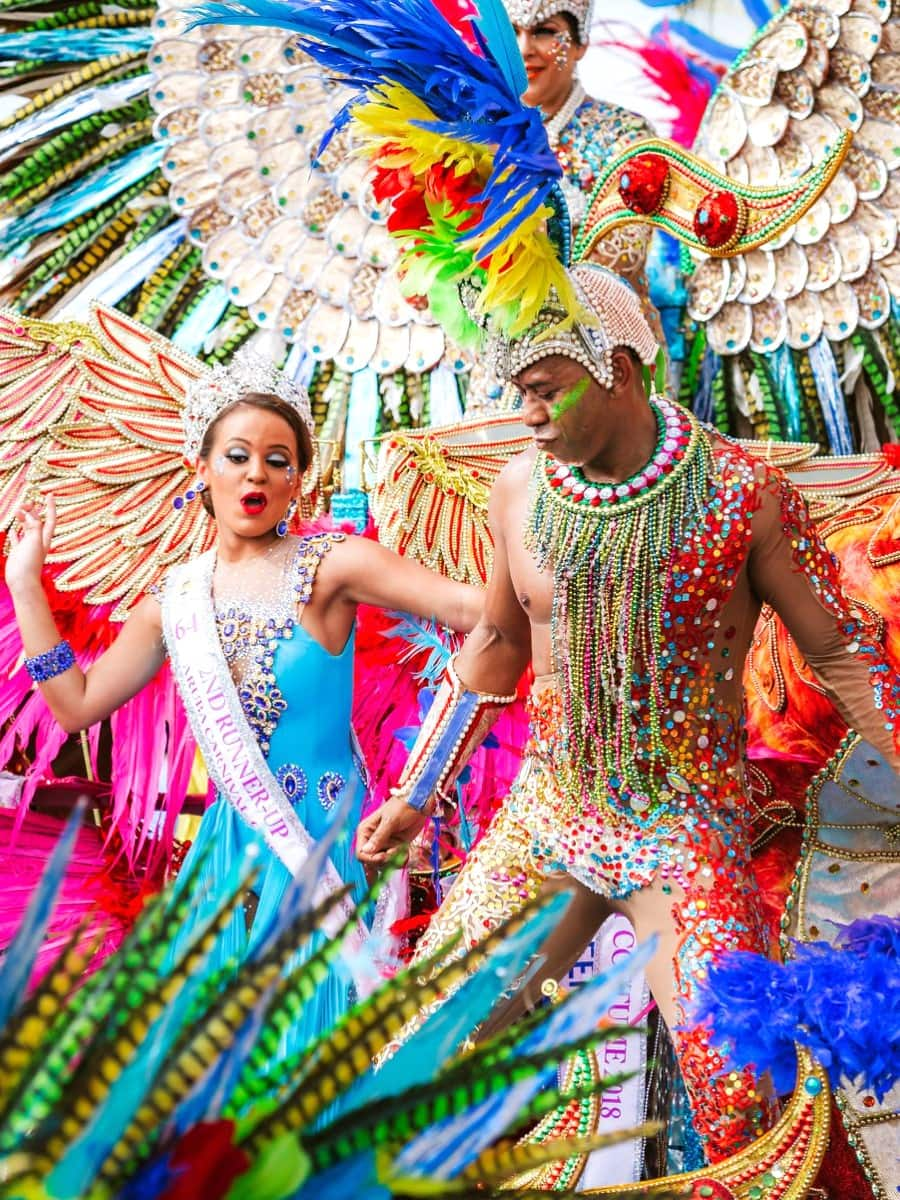
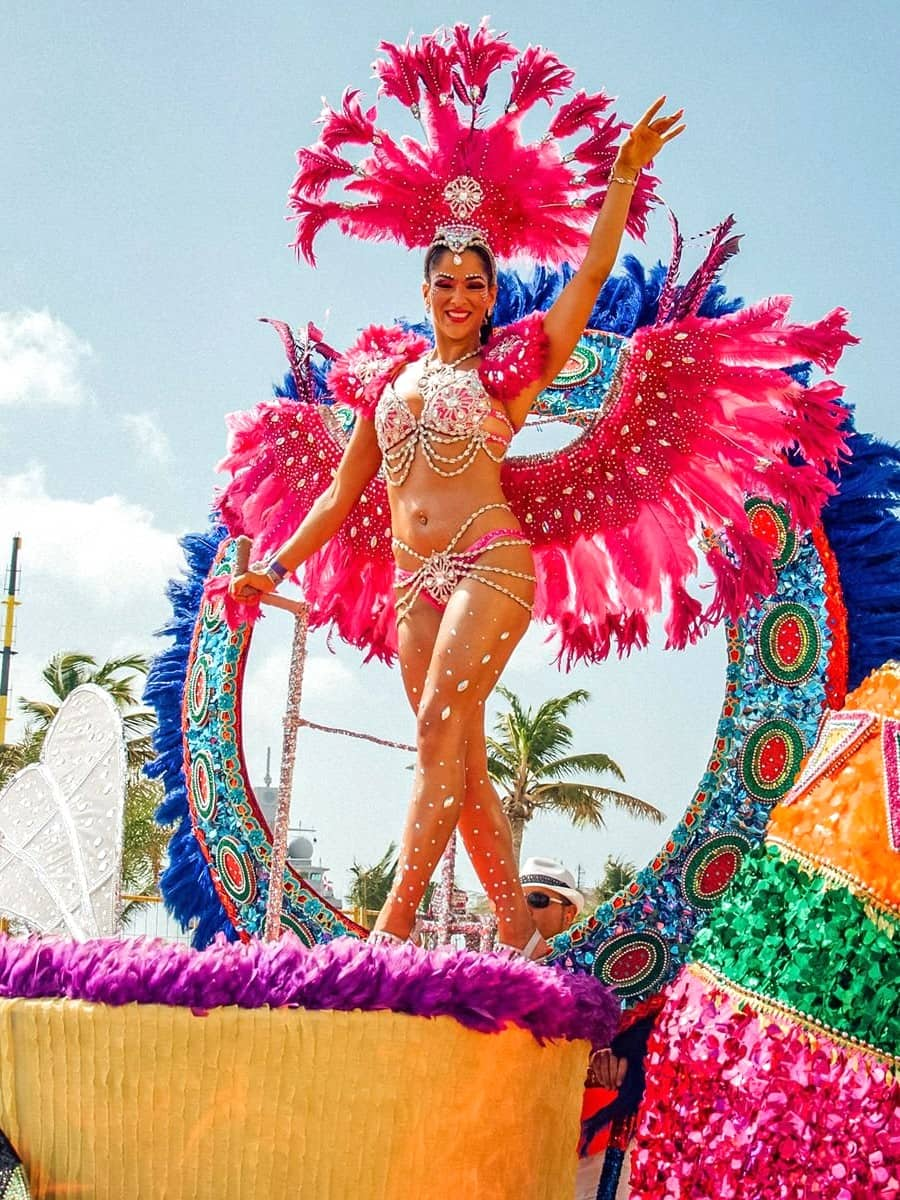
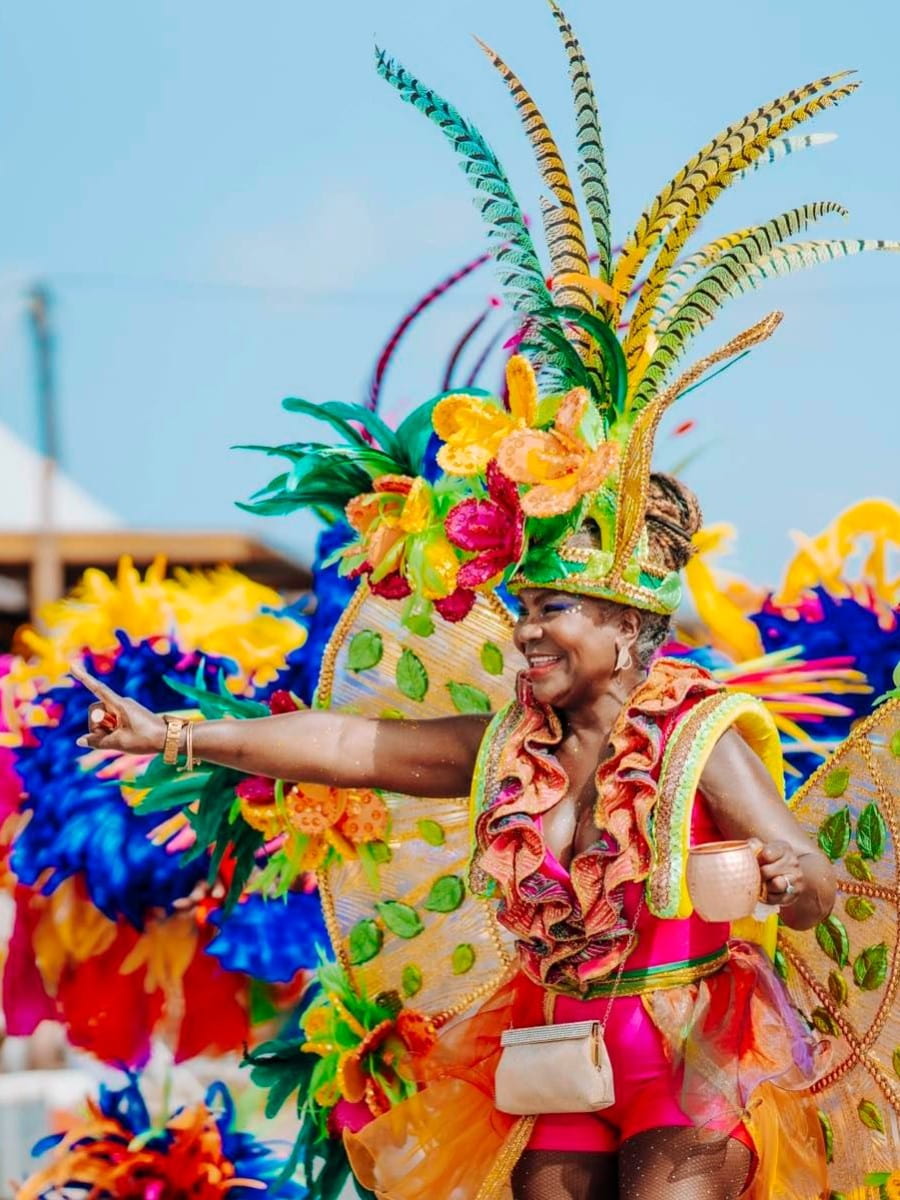

Colorful Events. What makes Carnival special is how it offers different experiences throughout its run. I attended the Children’s Parade (early February) which was family-friendly yet still vibrant with junior steel pan bands and adorable costumes. The Lighting Parade (held after dark in San Nicolas, early February) creates magical scenes with illuminated costumes and floats.
Visitor Tips. I discovered that the best way to experience Carnival is to arrive early for parades (at least 2 hours before) to secure good viewing spots along the route. Many hotels offer packages that include reserved seating areas. For a more authentic experience, I joined locals at the “road parties” that follow the official parades – these spontaneous celebrations continue well into the night.
Summer Festivals and Events
Cultural Celebrations. Summer in Aruba brings several festivals that showcase the island’s diverse heritage. The highlight of my summer visit was the Aruba Hi-Winds tournament (July), the Caribbean’s largest amateur windsurfing and kiteboarding event. Even as a spectator, watching the colorful kites and daring maneuvers against Aruba’s turquoise waters was spectacular.

Music and Food. The Soul Beach Music Festival (late May) transforms Aruba into a hub for soul, R&B, and jazz lovers. While the main concerts require tickets, I discovered that many hotels and beach bars host free satellite performances during the festival weekend. The atmosphere throughout the island becomes electric with music spilling from every venue.
Summer events calendar:
- Soul Beach Music Festival – Memorial Day Weekend (May)
- Aruba International Fishing Tournament – Early July
- Aruba Hi-Winds Tournament – Mid-July
- Eat Local Aruba Restaurant Month – October
- Caribbean Sea Jazz Festival – Late September
- Art Fair Aruba – November
Local Celebrations. I was fortunate to experience Dia di San Juan (June 24), a traditional harvest festival with unique Aruban customs. In the town of Noord, locals gather for “Dera Gai” (bury the rooster) competitions where blindfolded participants try to hit a buried rooster-shaped target. The festivities include folk music, dancing, and traditional foods like pan bati and stoba (stew).
Spring Blooms in Arikok National Park
Desert Transformation. Spring brings a surprising burst of color to Aruba’s desert landscape, particularly within Arikok National Park. After the brief rainy season, I witnessed the normally arid terrain transform with wildflowers and blooming cacti. The contrast of delicate yellow and purple blooms against the rugged red earth creates stunning photo opportunities.


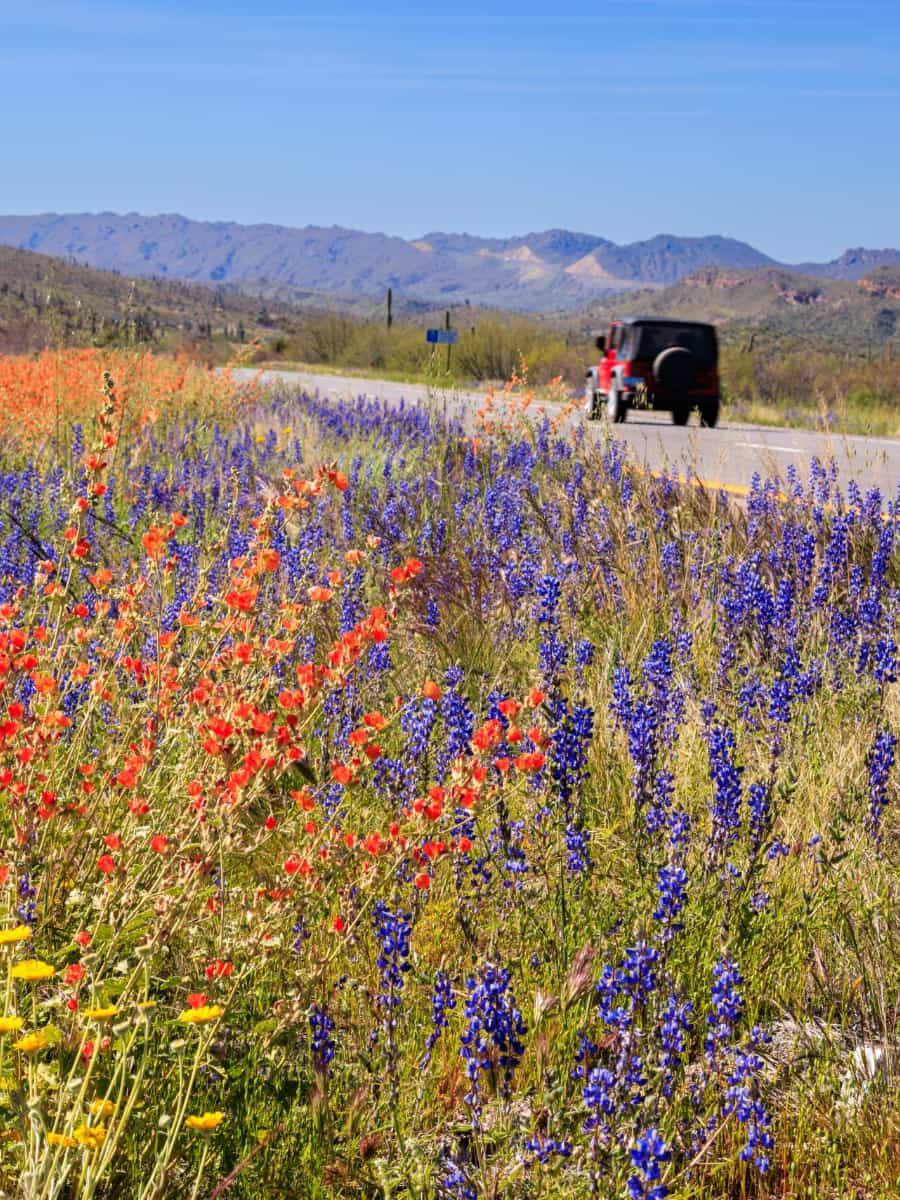
Flowering Cacti. What amazed me most was seeing the massive candelabra cacti covered in delicate white flowers that open at night and close by mid-morning. My guide explained that these brief blooming periods (March-April) attract specialized pollinators like bats and moths. Timing an early morning hike allowed me to catch these ephemeral blossoms before they closed.
Spring flora to look for:
- Kadushi cactus (white night-blooming flowers)
- Datu (orange trumpet-shaped flowers)
- Kibrahacha trees (explosive yellow blooms)
- Aloe vera plants (orange-yellow flower spikes)
- Bougainvillea (vibrant pink and purple)
- Oleander (white, pink, and red varieties)
Bird Watching. Spring also coincides with increased bird activity in the park. I spotted several species of hummingbirds drawn to the flowering plants, along with the bright yellow Bananaquit (Aruba’s national bird). The Arikok Visitors Center provides free bird identification guides that enhanced my appreciation of the park’s feathered residents.
Autumn Foliage Walks
Desert Landscapes. While Aruba doesn’t experience traditional autumn foliage like temperate climates, the island offers unique seasonal changes during the fall months. I discovered that late October brings subtle shifts in the desert vegetation, with certain cacti and shrubs taking on reddish and golden hues as they prepare for the coming rainy season.

Changing Light. What makes autumn special in Aruba is the quality of light. As the sun’s angle shifts, the landscape is bathed in a golden glow during late afternoon hours. This created magical conditions for photography, especially at sites like the Casibari and Ayo rock formations where the warm light accentuates the reddish tones of the ancient boulders.
Recommended autumn walking routes:
- Jamanota Hill Trail – Highest point with panoramic views
- Arikok Desert Trail – Diverse cacti and rock formations
- Fontein Cave Loop – Ancient cave paintings and seasonal plants
- Spanish Lagoon Mangrove Path – Bird watching opportunities
- Alto Vista Chapel Circuit – Spiritual path with desert views
Wildlife Activity. Fall coincides with increased wildlife activity as many species prepare for the wetter season. During my October hike through Arikok, I encountered numerous Aruban whiptail lizards, burrowing owls, and even a rare Aruban rattlesnake (from a safe distance). The park rangers explained that animals become more visible during this transitional season.
Day Trips from Aruba
1. Snorkeling Excursion to Nearby Reefs
Underwater Wonderland. A day trip to Aruba’s offshore reefs revealed a vibrant underwater world that far exceeded my expectations. I booked with Jolly Pirates (89 USD) for a 4-hour excursion that visited three premier snorkeling sites: Boca Catalina, Malmok Reef, and the famous Antilla shipwreck. Each location offered distinctly different marine environments and sea life.
Marine Diversity. What amazed me most was the variety of sea creatures visible even without diving deep. At Malmok Reef, I floated above brain corals the size of small cars while schools of blue tang and yellowtail snappers darted beneath me. Near the Antilla wreck, I spotted several green sea turtles gracefully feeding on seagrass beds.
What you might see on reef excursions:
- Tropical fish (parrotfish, angelfish, butterflyfish)
- Sea turtles (green and hawksbill)
- Moray eels hiding in coral crevices
- Southern stingrays gliding across sandy bottoms
- Octopus (if you’re very lucky)
- Colorful coral formations
- Sea fans and sponges
- Starfish and sea urchins
Tour Comparison. I researched several operators before choosing Jolly Pirates for their combination of value and experience. Their classic wooden schooner adds a touch of adventure to the excursion. Other excellent options include the catamarans operated by Red Sail Sports (95 USD) which offer more stable platforms and larger sundecking areas, or the smaller, more personalized trips with Tranquilo Charters (125 USD).
⭐ Best Activities
- Afternoon Pirate Sail and Snorkel Cruise in Aruba – Channel your inner buccaneer on this themed sailing adventure featuring snorkeling stops, pirate entertainment, rope swinging, and an open bar aboard a custom-designed vessel.
2. Boat Trip to Sea Glass Island
Hidden Gem. One of my most unique Aruban experiences was visiting “Sea Glass Beach” on a small, uninhabited island accessible only by boat. Located near San Nicolas, this tiny cay features a shoreline covered in smooth, colorful sea glass pieces polished by decades of ocean tumbling. I booked with Aruba Bob Snorkeling (75 USD) for the 3-hour excursion.


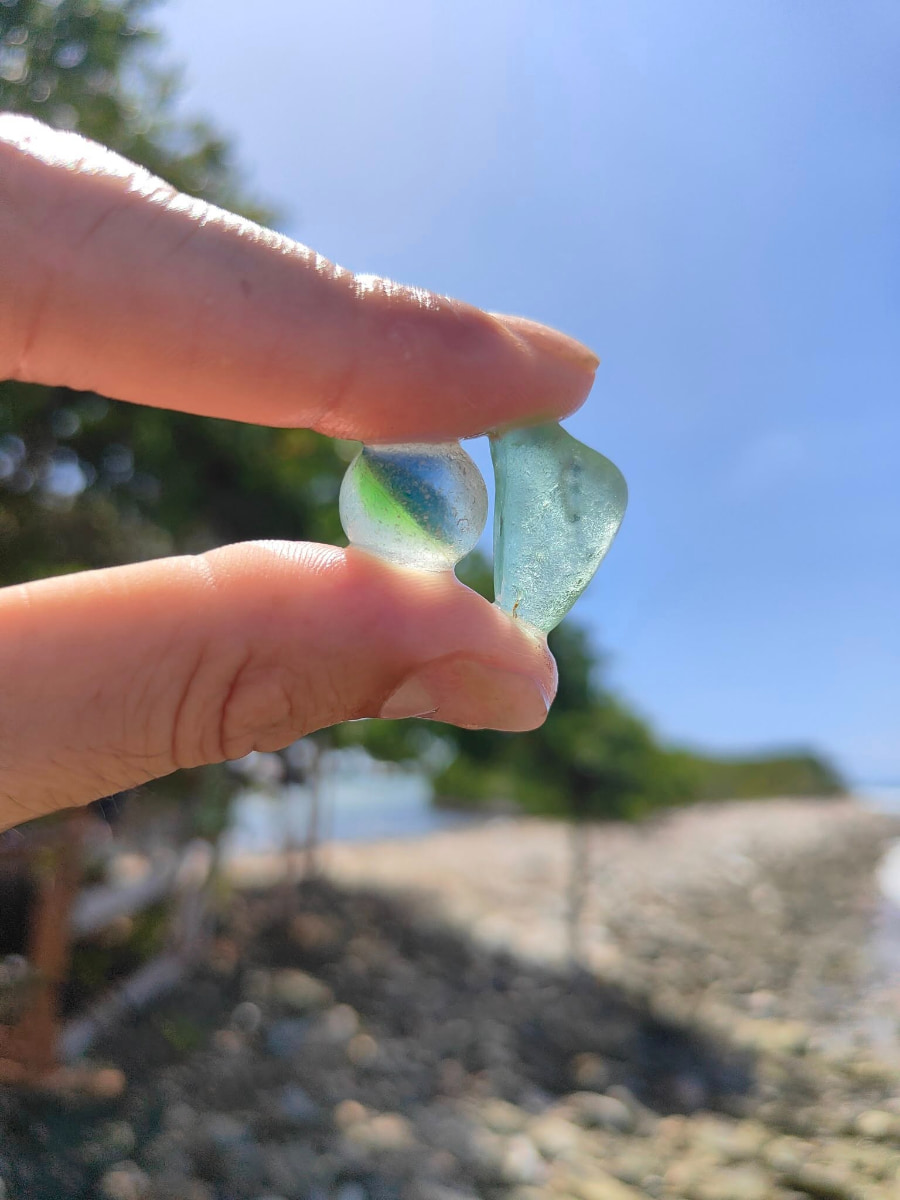
Treasure Hunting. What makes this trip special is the thrill of discovery as you search for perfectly polished pieces of blue, green, amber, and occasionally rare red sea glass. Our guide explained that the glass originated from a nearby historic dumping site, where the ocean has transformed discarded bottles into these smooth, frosted gems over many decades.
Sea glass color guide:
- Green: Most common (old beer bottles)
- Blue: Moderately rare (old medicine bottles)
- Brown/Amber: Common (beer bottles)
- White/Clear: Common (various sources)
- Purple/Lavender: Rare (pre-1920s glass with manganese)
- Red: Very rare (old nautical lights, valuable find!)
Environmental Awareness. I appreciated our guide’s emphasis on conservation ethics. While photography is encouraged, removing large quantities of sea glass is discouraged to preserve the beach for future visitors. Instead, we were taught to select just a few special pieces as mementos while learning about ocean conservation and plastic pollution issues.
⭐ Best Activities
- Sea Glass Island Tour – Hunt for colorful sea glass treasures on Aruba’s less-visited beaches while learning about the island’s history and enjoying spectacular coastal views on this unique eco-friendly tour.
3. Off-Road Safari to Natural Pool
Rugged Adventure. Reaching Aruba’s famous Natural Pool (Conchi) requires traversing some of the island’s most challenging terrain, making it perfect for a dedicated day trip. I joined ABC Tours’ Natural Pool Safari (89 USD) which uses custom-built 4×4 vehicles to navigate the rocky paths through Arikok National Park that regular cars simply cannot handle.
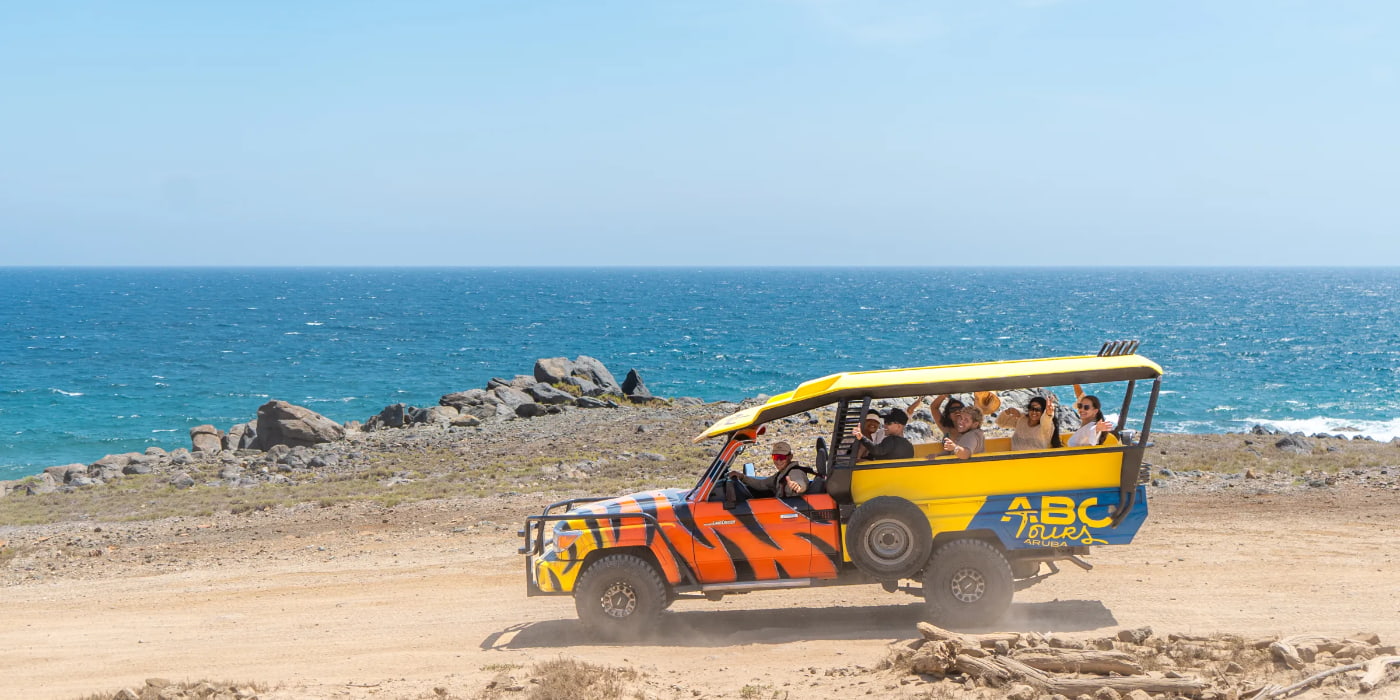
Exclusive Access. What makes this excursion worthwhile is accessing a truly special location that many visitors never see. The Natural Pool is a tranquil swimming hole formed by volcanic rock formations that protect it from the crashing waves of the Atlantic Ocean. After the bumpy ride, diving into those crystal-clear waters felt like discovering a secret paradise.
Natural Pool Safari itinerary:
- Pickup from hotels (morning departure)
- Alto Vista Chapel (cultural stop)
- California Lighthouse (photo opportunity)
- Bushiribana Gold Mill Ruins (historical site)
- Off-road adventure through Arikok
- Natural Pool swimming and snorkeling (1 hour)
- Lunch stop at local restaurant
- Return to hotels (mid-afternoon)
Photography Opportunities. The contrast between the rugged desert landscape and the pristine pool creates stunning photo opportunities. I found that mid-morning offered the best lighting conditions when the sun illuminated the pool’s turquoise waters against the dark volcanic rocks. Our guide knew exactly where to position for the most dramatic shots.
⭐ Best Activities
- Natural Pool Off-Road Adventure – Journey through Arikok National Park in a 4×4 vehicle to reach the famous Natural Pool, with stops at scenic landmarks and opportunities for swimming in this unique volcanic formation.
4. Fishing Charter
Deep Sea Adventure. Booking a fishing charter revealed yet another dimension of Aruba’s natural bounty. I chose Driftwood Fishing Charters (450 USD for a half-day, up to 4 people) for their experienced captains and well-maintained 36-foot boats. Heading out into the deep blue waters beyond Aruba’s western coast, we targeted wahoo, mahi-mahi, and various tuna species.
Fishing Action. What surprised me was how productive the waters are around Aruba. Within our 4-hour trip, we landed two beautiful mahi-mahi and a blackfin tuna using a combination of trolling and live bait techniques. The captain explained that Aruba’s position near the continental shelf creates upwellings rich in nutrients that attract pelagic gamefish year-round.
Seasonal fishing calendar:
| Season | Months | Target Species |
|---|---|---|
| Winter | Dec-Feb | Wahoo, sailfish, blue marlin |
| Spring | Mar-May | Mahi-mahi, yellowfin tuna |
| Summer | Jun-Aug | White marlin, blackfin tuna |
| Fall | Sep-Nov | Mahi-mahi, wahoo, barracuda |
Complete Experience. What made this trip special was the full-service approach. The charter provided all necessary equipment, bait, and licenses. When we returned to shore, the crew cleaned and filleted our catch. Many local restaurants like Barefoot Restaurant or The Old Fisherman offer “cook your catch” services (15-25 USD per person plus your fish) where they’ll prepare your fresh fish in traditional Aruban style.
⭐ Best Activities
- Deep Sea Fishing Experience off the Coast of Aruba – Try your luck catching marlin, wahoo, tuna and other game fish on this exciting deep-sea fishing charter in Aruba’s rich waters with professional equipment and guidance provided.
FAQ about Trips to Aruba
What are the best beaches in Aruba for snorkeling?
Mangel Halto and Boca Catalina offer the most vibrant underwater experiences with abundant marine life and coral formations. Arashi Beach near the California Lighthouse is also excellent for snorkeling, with crystal-clear waters that are perfect for spotting colorful tropical fish.
Can I see turtles while snorkeling around the island?
Green and hawksbill sea turtles are commonly spotted at Mangel Halto and near the Antilla shipwreck. One of the best places to encounter these gentle creatures is during a morning snorkeling trip when they’re most active feeding on seagrass beds.
What unique things should I include in my Aruba itinerary?
Exploring the street art murals in San Nicolas and visiting the Aruba Aloe Factory provide cultural experiences beyond typical tourist attractions. A jeep safari through Arikok National Park to see the Natural Pool (Conchi) is one of the island’s most unique adventures that showcases Aruba’s wild side.
Is the Antilla shipwreck worth visiting on my trip?
The SS Antilla is one of the Caribbean’s largest and most accessible shipwrecks, making it a must-see attraction in Aruba. Both snorkelers and divers can explore this fascinating underwater time capsule that’s home to vibrant marine life and coral formations.
What souvenirs should I buy during my Aruba vacation?
Authentic Aruban souvenirs include aloe products from the Aruba Aloe Factory, local art from San Nicolas, and handcrafted items from the Cosecha Creative Center. Aruba is known for its high-quality aloe vera products, which make practical souvenirs that remind you of the island’s natural beauty.
Should I take a submarine tour during my stay?
The Atlantis Submarine tour offers a unique opportunity to explore Aruba’s underwater world without getting wet. This activity in Aruba is great for families with children or those who want to see marine life and coral reefs without snorkeling or diving.
What’s the best way to experience a sunset cruise?
Book a catamaran sunset sail for unobstructed views of Aruba’s legendary golden hour while enjoying cocktails and appetizers. The evening cruise typically includes an open bar and creates the perfect romantic atmosphere as you watch the sun sink below the horizon with the silhouette of Palm Beach as your backdrop.
Is Renaissance Wind Creek Aruba Resort private island worth visiting?
Renaissance Wind Creek Aruba Resort’s private island offers the unique experience of flamingo encounters on its aptly named Flamingo Beach. The island features beautiful beaches, excellent snorkeling, and that Instagram-worthy opportunity to interact with flamingos, making it one of the best things to do in Aruba.
What attractions are accessible from cruise ships?
Downtown Oranjestad, Fort Zoutman, and the Butterfly Farm are all easily accessible attractions for cruise visitors with limited time. Aruba’s compact size means you can also take shore excursions to Eagle Beach, Arashi Beach, or the California Lighthouse during your port day.
What’s the best family-friendly activity in Aruba?
De Palm Island offers an all-inclusive water park experience with slides, snorkeling, and underwater helmet walking suitable for various ages. The Donkey Sanctuary is another great family attraction where kids will enjoy feeding and learning about these gentle rescued animals in a meaningful environment.


